
BY MILO STRAIN


BY MILO STRAIN









LITTLE ROCK, AR
Join us for a powerful evening of celebration, culture, and inspiration as we honor the 2025 Class of the Arkansas Black Hall of Fame.
Recognizing our 31st Induction Ceremony and 33rd year, the Arkansas Black Hall of Fame continues our mission to honor the achievements of Black Arkansans who have made significant contributions to their fields and communities—locally, nationally, and globally.
Introducing the 2025 Inductees:
• Linda Pondexter Chesterfield Revered State Senator (Ret.) & Education Icon
• Cleon Aurelius Flowers, Sr., M.D. (Posthumous) Pioneering Physician, Mentor, Civic & Social Leader
• Garbo & Archie Hearne, M.D. Trailblazing Art Curators & Visionary Entrepreneurs
• Honorable Marion A. Humphrey, Sr. Legendary Jurist, Pastor, Civic & Social Leader
• Charlie Nelms, Ph.D. Towering Higher Education Leader, Author & Philanthropist
• Latriece Watkins

CLEON AURELIUS FLOWERS, SR., M.D.
LINDA PONDEXTER CHESTERFIELD

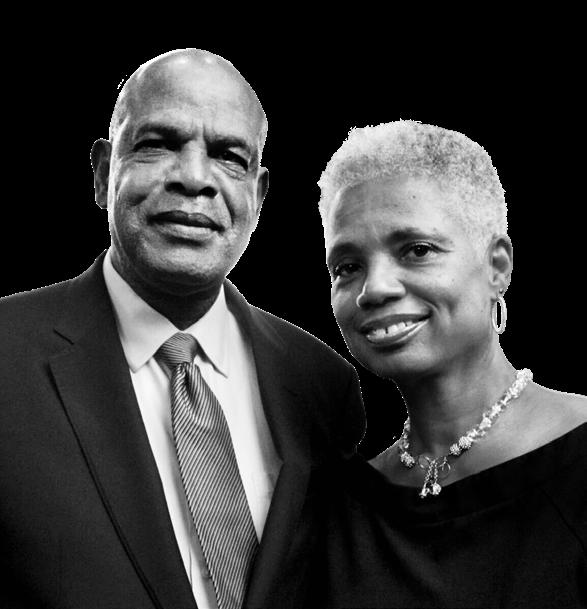
GARBO & ARCHIE HEARNE, M.D.

CHARLIE NELMS, PH.D.
HONORABLE MARION A. HUMPHREY, SR.
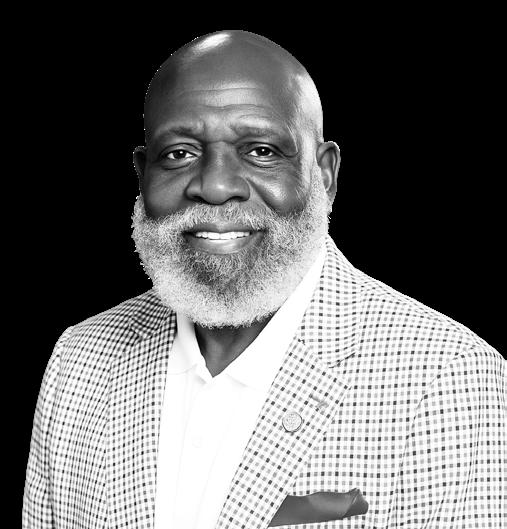
LATRIECE WATKINS


Business Executive Extraordinaire
EVP. Chief Merchandising Officer Walmart U.S.)





How Central Arkansas, far removed from the influence of Chicago, Detroit and New York, became a pizza destination.
By Elizabeth L. Cline
Nearly 20 years after the 16-mile River Trail opened, a gap between Dillard's corporate headquarters and Episcopal Collegiate School still spits cyclists onto a hazardous highway.
By Milo Strain
Arkansas taxpayers have loaned Israel $55 million so far, and could loan the war-mongering country $100 million more in coming years.
By Jennifer Lenow
9
Q&A: With Carolyn Staley, longtime friend and neighbor of Bill Clinton. Big Pic: Arkansas’s connections to space exploration are far out, man.
15
Vandoliers at Rev Room, Reel Queer Film Festival at Ron Robinson Theater, Eli Cranor at WordsWorth Books, “The Amen Corner” at The Rep, Arkansas Cinema Society’s Filmland festival at AMFA and more.
Residents at HUD-subsidized apartments in North Little Rock are sounding the alarm about unhealthy living conditions. By Arielle
Robinson
90 CULTURE
Frank Stanford killed himself at age 29. The legendary Arkansas poet’s brief but colorful life is now documented in a monumental biography.
By Jay Jennings
96
Farewell to the days of buying THC products from the same place you get gas and questionable burritos. By Matt
Campbell

98
Why does the state flag look so much like the Confederate flag, anyway?















PUBLISHER Alan Leveritt
EDITOR-IN-CHIEF Austin Gelder
CREATIVE DIRECTOR Mandy Keener
MANAGING EDITOR Benjamin Hardy
PRINT EDITOR Daniel Grear
FOOD EDITOR Rhett Brinkley
INVESTIGATIVE REPORTER Matt Campbell
AGRI AND ENVIRONMENT REPORTER Phillip Powell
REPORTER Milo Strain
EQUITY REPORTER Arielle Robinson
VIBE CHECKER Stephanie Smittle
VISITING JOURNALIST Leon Jones III
EDITOR EMERITUS Max Brantley
CONTRIBUTING EDITOR Mara Leveritt
PHOTOGRAPHER Brian Chilson
DIRECTOR OF DEVELOPMENT Bob Edwards
ADVERTISING ART DIRECTOR Mike Spain
GRAPHIC DESIGNER Katie Hassell
DIRECTOR OF ADVERTISING/ SPECIAL PUBLICATIONS PUBLISHER Brooke Wallace
SENIOR ACCOUNT EXECUTIVE Wendy Hickingbotham ACCOUNT EXECUTIVES
Terrell Jacob, Kaitlyn Looney
ADVERTISING TRAFFIC MANAGER Roland R. Gladden
DIGITAL MARKETING DIRECTOR Lyndsey Huddleston
DIGITAL AD COORDINATOR Sarah Richardson
SPECIAL SECTION MANAGING EDITOR Caleb Patton
EVENTS DIRECTOR Donavan Suitt
IT DIRECTOR Robert Curfman
CIRCULATION DIRECTOR Anitra Lovelace
CONTROLLER Weldon Wilson
BILLING/COLLECTIONS Charlotte Key CHAIR MAN Lindsey Millar
PRODUCTION MANAGER Ira Hocut (1954-2009)

ARKANSAS TIMES (ISSN 0164-6273) is published each month by Arkansas Times Limited Partnership, 201 East Markham Street, Suite 150, Little Rock, Arkansas, 72201, phone (501) 3752985. Periodical postage paid at Little Rock, Arkansas, and additional mailing offices. POSTMASTER: Send address changes to ARKANSAS TIMES, 201 EAST MARKHAM STREET, SUITE 150, Little Rock, AR, 72201. Subscription prices are $60 for one year. For subscriber service call (501) 375-2985. Current single-copy price is $5, free in Pulaski County. Single issues are available by mail at $5.00 each, postage paid. Payment must accompany all orders. Reproduction or use in whole or in part of the contents without the written consent of the publishers is prohibited. Manuscripts and artwork will not be returned or acknowledged unless sufficient return postage and a self-addressed stamped envelope are included. All materials are handled with due care; however, the publisher assumes no responsibility for care and safe return of unsolicited materials. All letters sent to ARKANSAS TIMES will be treated as intended for publication and are subject to ARKANSAS TIMES’ unrestricted right to edit or to comment editorially.
©2025 ARKANSAS TIMES LIMITED PARTNERSHIP
EARLY BIRD TICKETS
$30+ Fees
TILL 8/8

FRIDAY AUG 22• 6 - 9 P.M. River Market Pavillion BROUGHT TO YOU BY
PARTICIPANTS INCLUDE
Lost Forty, Moody Brews, Rusty Tractor Vineyards, Origami Sake, Vino’s Brewpub, Flyway Brewing, Rock Town Distillery, Bentonville Brewing, Arkansas Meadery, Brick & Forge, Fox Trail Distillery, Bloody Darn Good and MANY MORE !
VIP TICKETS $100 + Fees
Early Entry 5:30 INCLUDES PRIVATE SEATING & TABLES, CATERED BUFFET AND PRIVATE BARTENDER.
SCAN TO PURCHASE TICKETS:

SPONSORED BY
$40+ Fees
$45Cash at Door
MUSIC DJ MATTYCHRIST


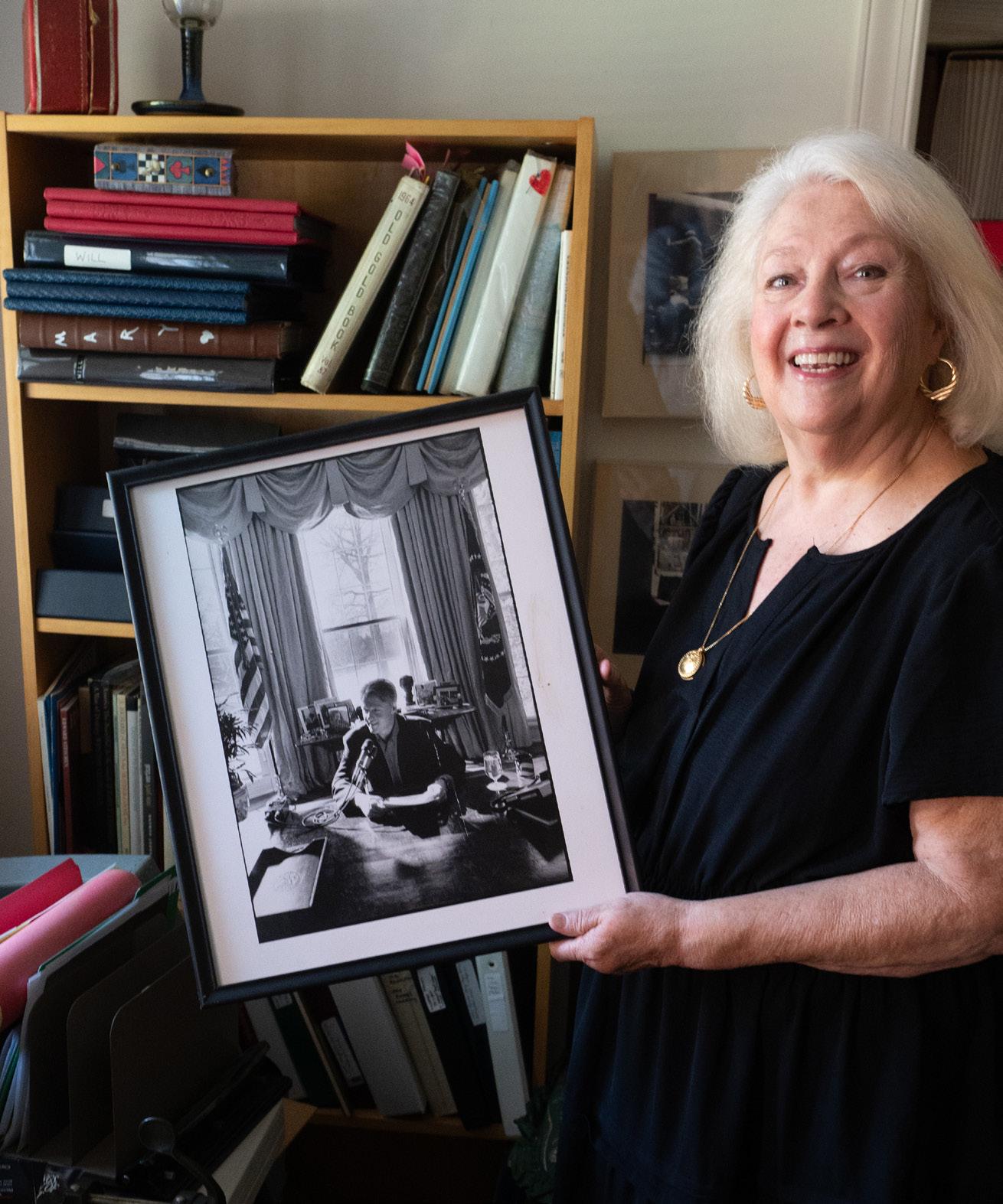
CAROLYN STALEY REFLECTS ON MORE THAN 60 YEARS OF FRIENDSHIP WITH BILL CLINTON.
Long before Bill Clinton assumed his place at the pinnacle of politics in Arkansas and beyond, he was simply the boy next door for 15-year-old Carolyn Yeldell. Young Bill, also 15, moved to Scully Street in 1961, into a new house beside the Hot Springs Second Baptist Church parsonage where Yeldell lived with her pastor father, her mother and three siblings. The future 42nd president’s ambitions were just taking shape at the time, and a career in music was still on the table. He came knocking at the rectory door in search of a pianist to accompany him on the saxophone, and a long-running duo was formed, with ties that held strong over six decades and counting.
Carolyn Yeldell, now Carolyn Staley, can boast lots of achievements herself: singer, pianist, faith leader, arts and literacy advocate. Now, she’s adding author to the list. Her book, “The Boy Next Door: My Sixty-Year Friendship with Bill Clinton,” comes out Aug. 1, and Staley will be at the Clinton Presidential Center Aug. 19 — Clinton’s 79th birthday — for a book launch party. Clinton himself penned the foreword for Staley’s book. “It’s almost impossible to put into a few words what our friendship of more than 60 years has meant,” he writes. “There are so many stories, you’d have to write a book. I’m grateful to Carolyn for doing just that.”

Why did you write this book? For years, I was urged by friends and colleagues that I had a historical perspective of Bill Clinton that few have, and I should write a book. I had done so many interviews when we moved to Washington, D.C., and even before, with the Norwegian press, Swedish, French. People just wanted to know, from a standpoint of a friendship, what he was like. And so I thought, let me just talk about what our friendship has been like, our experiences since we were 15, living in Little Rock, being neighbors in high school and in D.C., and what it’s like to have Bill Clinton as a friend.
How did you meet? When my family moved to Hot Springs I was a sophomore, which is a tricky time. I had been active in music and had run for student council, and I wanted to do all that. And lo and behold, we were moving, and I was having to start all over. So I asked people, who do I need to know? And Bill Clinton’s name came up all the time. “Oh, you’ll have music in common.” “You’ll have student government in common.” “You need to know him for sure.” We didn’t have any classes as sophomores together, but I saw him outside geometry class one day talking to somebody, and he said, "She’s going to be my new neighbor.”
A few months later, he came to our door and rang the
bell and he said, “I need an accompanist for my saxophone solos. I wonder if you would play the piano for me?” And I said, “Well, I’m glad to.” So that started our friendship and closeness and spending a lot of time together through music. I ran for student council and he was on student council, so those paths merged. And he’d call many mornings and say, “Come over and bring the newspaper, and let’s have a contest on who can work the crossword puzzle fastest,” and we would. We read together. We played cards a lot. We listened to records endlessly.
When did he set his sights on politics?
After we went to [The American Legion’s] Boys Nation and Girls Nation, his mom, Virginia, said she saw a real change in him, that public service began to be more of a career path. Our high school principal was very patriotic, and she told us that we needed more people to run for office, that it was an honorable profession. He said later, “I didn’t think I wanted the nightlife of a jazz sax player, and I didn’t think I was really good enough to compete and be really great at it.”
raised our kids together. My girls babysat for Chelsea, and we just were together a bunch.
And then your childhood friend moved into the White House. Did you ever feel intimidated? I felt awestruck by the enormous weight on his shoulders, and I was so proud of the way he served as president. You know, even in high school, I had seen that leadership quality, and it crossed my mind, this guy can be anything he wants to be. He can be president. So it felt normal, actually, that he was there.
WHO ARE SOME OF YOUR FAVORITE ARKANSAS CELEBRITIES (OTHER THAN BILL CLINTON)?
Harry Thomason, Mary Steenburgen, George Newbern (we were in “The Sound of Music” together at UALR) and Brad Simpson (he lived in downtown Little Rock when we did and was my voice student).
WHAT’S A SONG YOU WISH YOU AND BILL COULD COVER?
“Summertime” from “Porgy and Bess.”
WHAT ARE SOME BOOKS YOU’VE BEEN RECOMMENDING LATELY?
“The President’s Daughter” by James Patterson and Bill Clinton, “Prayer: Finding the Heart’s True Home” by Richard J. Foster.
You went in different directions for college but stayed friends? We maintained a closeness all through college, and I was actually a singing waitress on Cape Cod and he came to hear me sing. We wrote letters and just tried to stay in touch.
How did you end up being neighbors in Arkansas again? He ran and was elected in ’79 as governor. And he said, “I always thought if I did something good with my life, you’d come home and be part of it, and I wonder if you and Jerry would move back home and be a part of my administration. And can we be neighbors again?” And so I started working as director of the Arkansas Arts Council, and we found an old house at 15th and Broadway. It was just four blocks from the Governor’s Mansion, so he was in and out a lot and jogging past. And we
Does your book talk about the impeachment? It’s not a political book. I do talk about how troubled we all were when he was going through the impeachment process, and how we were so supportive of him. We didn’t know what to believe. We wanted to just believe him. And more than anything, we wanted to just stand by him and support him, and we did.
I did attend the impeachment hearings the last day and Jeanne Cummings with The Wall Street Journal was there. She asked, “What are you doing here? I mean, what a terribly difficult time.” And I said, “I just feel like you’re with your friends when they’re up, you’re with your friends when they’re down.” I felt like this is where a good friend needed to be. She did a front page story, and it was, “Come hell or Whitewater, she’s no fair-weather FOB,” or something like that.
What do you want readers to take away from the book? I just hope the viewpoint of a friend, sharing a side that I should have told a long time ago. Maybe it would have helped the public know him better, would benefit him in some way. But I’ve interwoven the story of my life and our children and families. So it’s a bit autobiographical as well. But I just wanted to say what a gift it’s been to be his friend and to be invited on this journey, and to experience it up close.
Austin Gelder



WHETHER SCIENCE, FICTION, OR BOTH, ARKANSANS HAVE LONG TURNED AN EYE TO THE SKY.
BY STEPHANIE SMITTLE
When it comes to studying those two vast and underexplored frontiers — outer space and the ocean — landlocked Arkansas has had a bigger hand in things than you might think. With some notable contributions to space observation and astronomy over the course of decades, plus a few star turns on TV and movie screens, The Natural State is a total space cadet. Here, from the academic to the amateur, are a few of the state’s starry-eyed endeavors.

1. DOROTHY M. HOOVER
The first woman to get a master’s degree in physics from the University of Arkansas at Fayetteville, Hope native Hoover was a real-life “Hidden Figure,” hired as a mathematician in 1943 by Langley Labs at NASA — then called NACA, the National Advisory Committee for Aeronautics. Later, she worked at NASA’s Goddard Space Flight Center in Greenbelt, Maryland, for NASA’s theoretical physics division.
2. AMBER STRAUGHN
The pride of Bee Branch, astrophysicist Amber Straughn is deputy project scientist for NASA’s Goddard Space Flight Center, where she spent a decade and a half developing and launching the James Webb Space Telescope, a spectacular honeycombesque contraption that, since its Christmas Day launch in 2021, has already begun to reshape our ideas about how old the universe is — and just what the hell is out there today.

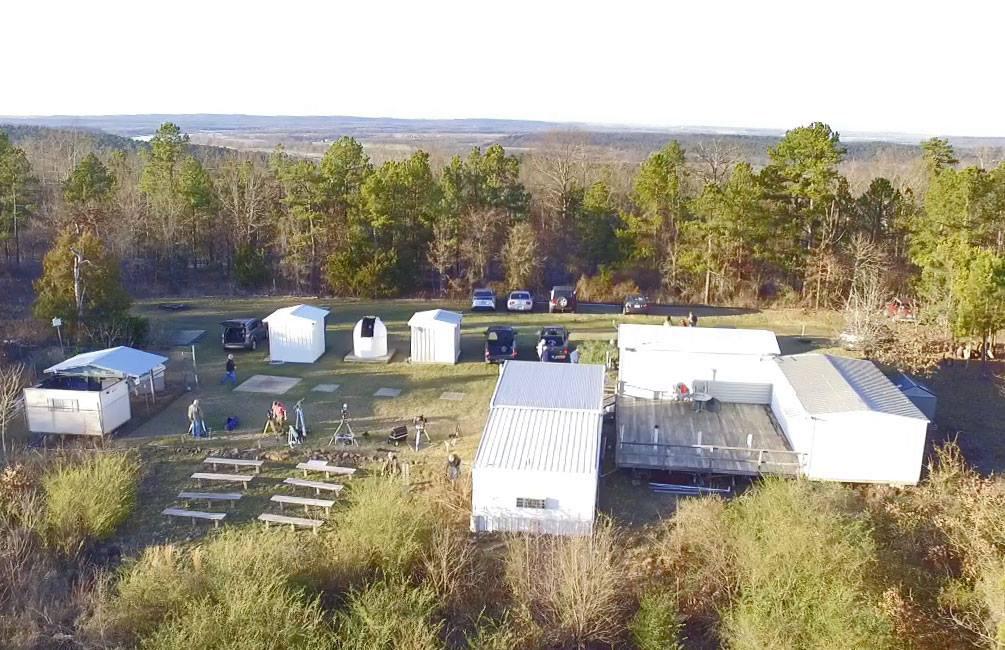
3. RIVER RIDGE OBSERVATORY, CENTRAL ARKANSAS ASTRONOMICAL SOCIETY, BIGELOW
Located in the hills of Perry County north of Lake Maumelle, the River Ridge Observatory serves as both meeting ground for the Central Arkansas Astronomical Society and observing field for the group’s research-grade telescopes.
4. RICHARD COVEY
Fayetteville native and member of the United States Astronaut Hall of Fame, Richard Covey was a fighter pilot in the U.S. Air Force before ascending to even greater heights at NASA, logging over 646 hours in space and four total space flights: STS-51-I in 1985, STS-26 in 1988, STS-38 in 1990 and STS-61 in 1993.

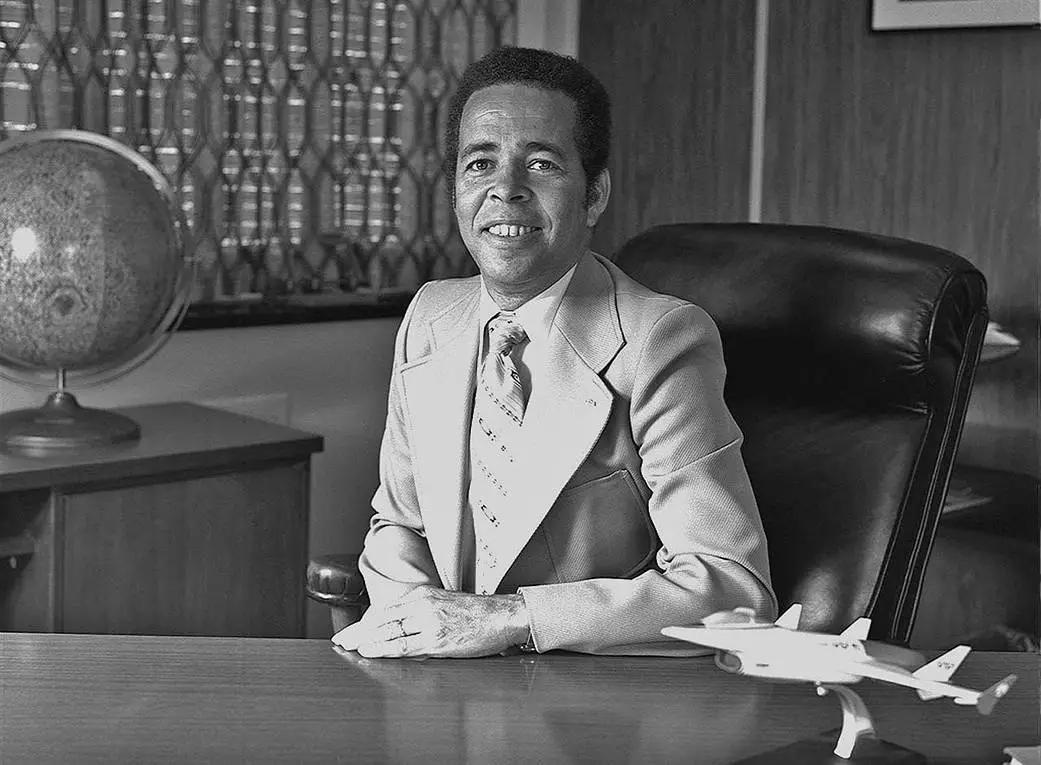
5. ISAAC GILLAM IV
Little Rock native and Howard University grad Isaac Thomas Gillam IV, known to most as Ike, was the director of shuttle operations at NASA’s Dryden (now Armstrong) Flight Research Center in Edwards, California, where he worked on approach and landing tests of the Space Shuttle Enterprise. Later, Gillam served as director of the center from 1978 to 1981.
6. EARNEST C. SMITH
Pine Bluff native Earnest C. Smith received NASA’s Exceptional Service Medal in 1972 for his contributions to the navigation systems for the moon buggies on the Apollo 16 mission, but he got his start at NASA’s Marshall Space Flight Center in Huntsville, Alabama, in 1964, where he’d later become director of the Astrionics Laboratory.
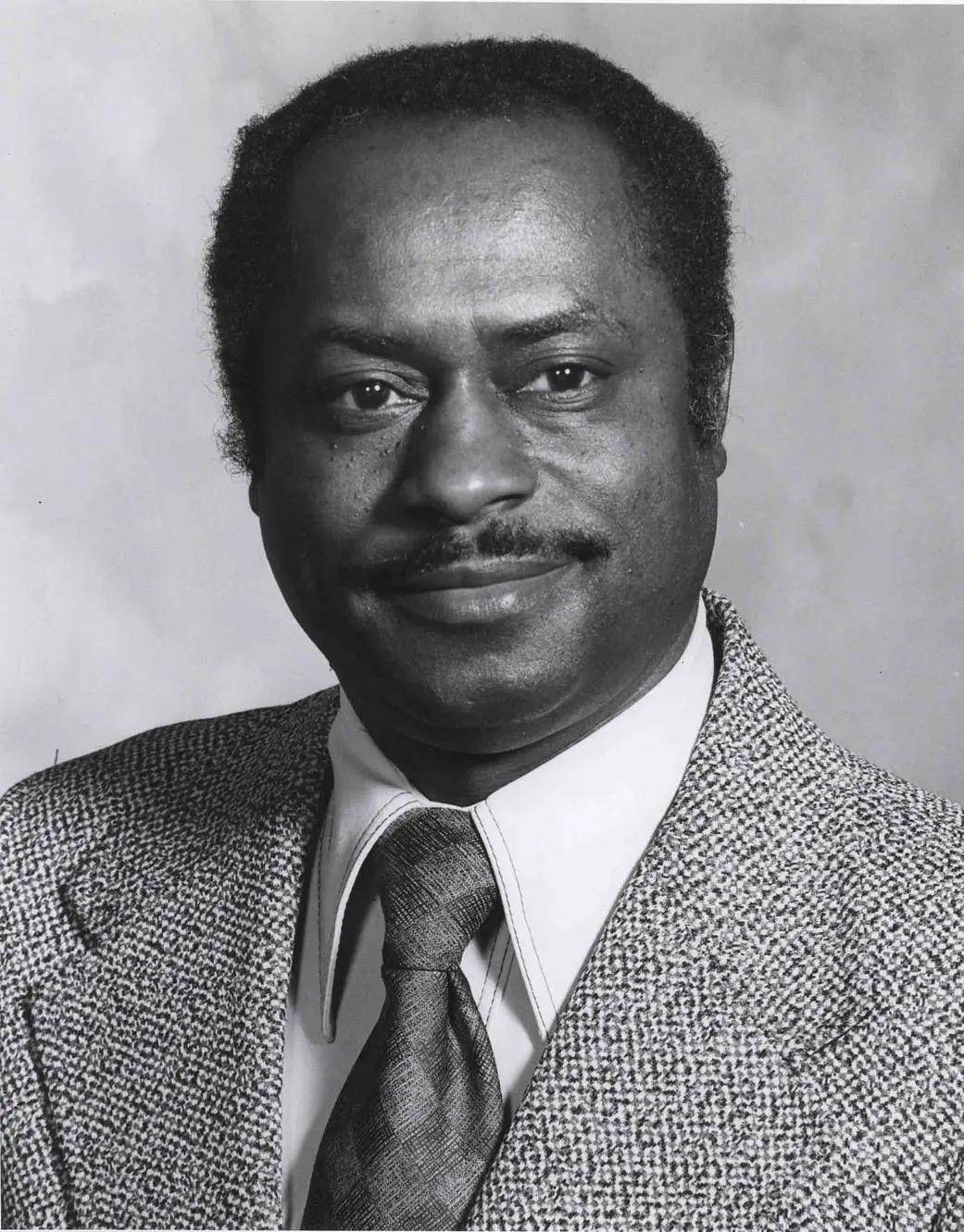

Born in rural Mountain Home, astrophysicist Jennifer Wiseman is a colleague of fellow Arkansan Amber Straughn’s (see left) at NASA’s Goddard Space Flight Center in Maryland, where Wiseman is the senior project scientist for the Hubble Space Telescope.
Sadly, the pilot for this 1958 television show never got picked up, and what a surreal plot the series would presumably have tackled, we discoverd in the show’s Encyclopedia of Arkansas entry. In the first episode of Season None, Joan — a dental technician from Hot Springs played by comedic actress Joan Davis — gets picked by a government lottery to be the first person on the moon, ends up ejecting herself from the plane and, safely returned to Arkansas, has a daydream that she’s Joan of Arc being burned at the stake.



On the south side of Petit Jean Mountain’s summit sits H45, one of four Arkansas Sky Observatories and the oldest privately funded observatory in the state that’s still actively doing research. Outfitted with an automated dome, multiple computers, a seismograph and a climate-controlled library, it plots the precise locations of nearEarth objects so we don’t get ourselves into a sticky situation, a la “Deep Impact” and “Don’t Look Up.” The resulting data, the Encyclopedia of Arkansas says, is “so precise that it can see the point of a pin thirty-three miles away as it would appear to the naked eye.”
10.
A native of Jasmine, engineer Tommy Holloway (third from the right) was a true NASA heavyweight, beginning his four-decade career as a flight planner for both Gemini and Apollo flight programs at


what is now the Johnson Space Center in Houston and going on to become NASA’s Space Shuttle program manager in 1995, then manager of the International Space Station program in 1999.
As the sixth Black person to serve on the Arkansas Supreme Court and writer of an opinion that was instrumental in the liberation of the West Memphis Three, Sheffield is better known for his judicial career. But in his younger days as a member of the U.S. Air Force, his laboratory work at the Brooks Aerospace Medical Center in San Antonio contributed to studies on the effect of weightlessness on astronauts.
12.
Child actor Ann Gillis, born in Little Rock in 1927 under the name Alma Mabel Conner, according to the Encyclopedia of Arkansas, grew to hate film work enough to quit it altogether when she was 20, but came out of retirement briefly to play a small part in

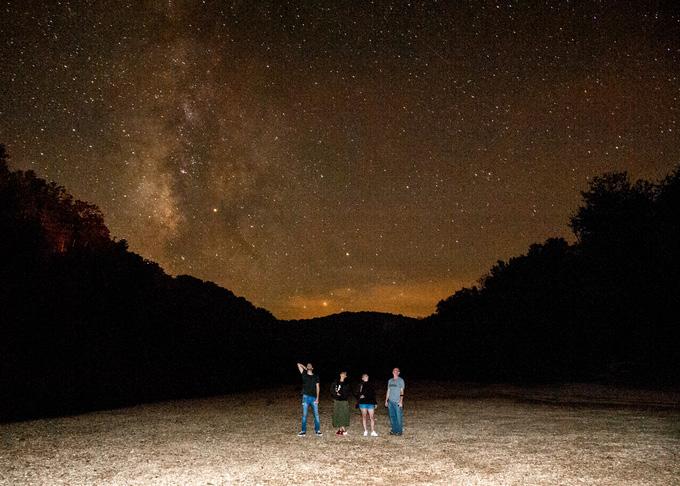
Stanley Kubrick’s “2001: A Space Odyssey,” afterward calling the famously finicky director “a real jerk.”
Little Rock native Scott Parazynski was the first astronaut to stand on the altitudinal top of the world, summiting Mount Everest in May 2009. Before that, though, he flew even higher, logging over eight weeks in space across his flight assignments, which included five Space Shuttle missions and seven spacewalks.
The Arkansas chapter of the International Dark Sky Association is a nonprofit that focuses its efforts on stewardship of the night sky, particularly through advocacy for responsible lighting — lighting that doesn’t pollute or threaten our state’s “nocturnal environment.” The organization was instrumental in certifying the Buffalo River as a “dark sky park” in 2019, and holds an annual Dark Sky Festival, to take place this year on Sept. 19-20.
In the wee hours of Feb. 17, 1930, the night sky lit up above Northeast Arkansas, followed moments later by an 820-pound meteorite crashing into a field outside of Paragould, creating an 8-foot crater in the
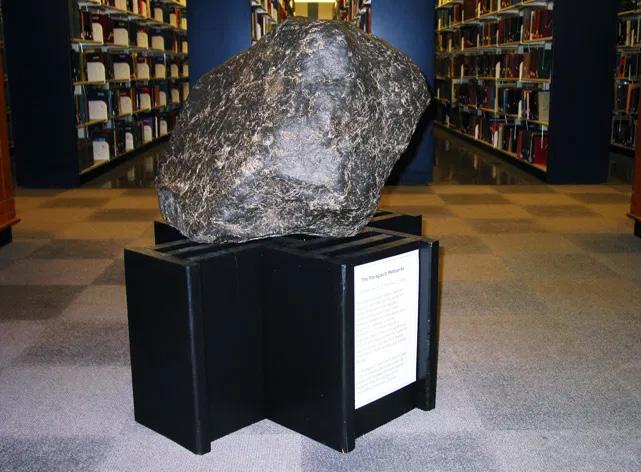

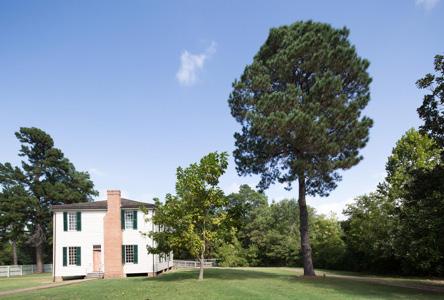
soil. The so-called “Paragould Meteorite” has lived a storied life, rife with lore from locals and from its travels to Chicago and then Fayetteville. It eventually returned to Paragould in 2023, where it resides at the Greene County Museum.
Funded by a group called the Arkansas Space Grant Consortium and engineered by researchers at the University of Arkansas at Fayetteville, a 4-inch cube called a “cubesat” launched into space in March 2023 on the SpaceX Falcon 9, built to perform atmospheric measurements. Maybe even cooler: The satellite was designed with sustainability in mind, demonstrating ways in which small satellites can be decommissioned and disintegrated after their mission instead of persisting in low orbit as sky litter, aka “space junk.”
MOON TREES
Once upon a time in 1971, astronaut Stuart Roosa included among his personal items on the Apollo 14 mission several hundred tree seeds in “a small metal canister about the size of a soft-drink can,” says the Encyclopedia of Arkansas. Those seeds orbited the moon 34 times and a few years after their return, four of them — loblolly pines — were planted in Arkansas. The two surviving trees reside in Hempstead and Sebastian counties.



18. DR. EDMOND E. GRIFFIN PLANETARIUM, CONWAY
Is there a more sublimely nerdy way to kick off a weekend than the free Friday presentations at University of Central Arkansas’s campus planetarium? Maybe, but these 3 p.m. and 7 p.m. shows are surely in the running. They’re open to the public and last about an hour; get a full schedule at uca.edu/physics/planetarium.
STEVE ARNOLD, AKA ‘METEORITE MAN,’ AKA ‘FIREBALL STEVE’
Steve Arnold operates ghost hunting tours in Eureka Springs these days, but he’s known to TV audiences as one of the stars of “Meteorite Men,” an aughts-era show on the Science Channel that documented his endeavors to hunt, study and sell meteorites. The cult adventure series spawned a 2019 YouTube series called “Fireball Steve,” in which Arnold and partner Geoff Notkin tutor viewers on how to locate meteorites for pleasure and profit.
20. TREY LANE AND TEAM ZOPHERUS
Trey Lane, a virtual design expert from Nabholz Construction Corporation’s branch in Rogers, made headlines in 2018 when he and two colleagues, under the name Team Zopherus, won first place in NASA’s 3D-Printed Habitat Challenge by creating a prototype for a 3D-printed house on Mars that could sustain human life. Cool!










BY DANIEL GREAR, STEPHANIE SMITTLE AND OMAYA JONES

FRIDAY 8/1. WHITE WATER TAVERN. 8 P.M. $15.
Plenty of songwriters think of themselves as poets, but Lee Bains III — who hails from Birmingham, Alabama, and has been published in The New Yorker — has the credentials to prove it. If placement in the company of the literary elite suggests a stuffiness, though, think again. The Bitter Southerner referred to 2014’s “Dereconstructed,” the sophomore album by Lee Bains & the Glory Fires (his band), as “without a single doubt or qualifier, the most important record to address the Southern thing in 13 years, since Drive-By Truckers’ 2001 ‘Southern Rock Opera.’ … And it may be the most important record about the South ever released.” The band’s 2022 album, “Old-Time Folks,” so captivated the Oxford American with its radical politics that the publication characterized Bains like this: “If Jason Isbell could be described as country music’s AOC, Bains is its antifa.” Get tickets for this solo show at whitewatertavern.com. DG

WEDNESDAY 8/13-SUNDAY 8/17.
ARKANSAS MUSEUM OF FINE ARTS.
Whether it’s all that natural light and sleek architecture or the feeling that you’re getting a sneak peek at a movie before the reviews have even come out, there’s something elevated and effervescent about the Arkansas Cinema Society’s annual Filmland festival finding a venue in the Arkansas Museum of Fine Arts. The museum’s Performing Arts Theater is just the right size, spacious enough to make what’s onscreen feel grand but small enough to give last year’s audiences a close-up on Colman Domingo’s charisma during the Southern Storytellers panel discussion. This year, expect the festival buzz to be heightened by another heavyweight Hollywood connection to Arkansas: the screening of Tony Tost’s debut film, “Americana” (pictured above). Tost, who got his master’s degree at the University of Arkansas and lives part time in Fayetteville, is a multitalent: showrunner for Natasha Lyonne vehicle “Poker Face”; writer for neoWestern “Longmire”; author of the award-winning poetry collection “Invisible Bride” and of the entry on “Johnny Cash’s American Recordings” in the acclaimed 33 ⅓ book series. “Americana,” starring Sydney Sweeney, Paul Walter Hauser and Halsey, gets a screening at Filmland two days before its theatrical release, with Hauser and Tost in attendance. Elsewhere on the festival: a screening of Stephanie Laing’s “Tow,” a true story starring Rose Byrne about a Seattle woman fighting her way out of a $21,634 bill from a car tow company; the third consecutive visit from Variety film critic Peter Debruge; and a flock of Arkansas features and short films, some of which will be up for grant money from Panavision’s New Filmmaker Program. Find out more at arkansascinemasociety.org. SS

WEDNESDAY 8/20. SWAY. 7:30 P.M. $12-$37.
Here’s how New York described Roz Hernandez when the magazine named her one of 2024’s “Comedians You Should and Will Know”: “With her heavy black bangs and penchant for dressing like a paper doll from the 1960s … [she’s] loud, indignant, and ready to entrap both spirits and audience members.” Spirits? Is that just a figure of speech? Nope. Hernandez is so paranormally inclined, in fact, that she not only starred in a Hulu reality TV series about queer ghost hunters called “Living for the Dead,” but also hosts “Ghosted! by Roz Hernandez,” a podcast in which she interviews celebrities and spectral sophisticates about their encounters with all things supernatural. Her August visit to Sway is one of nearly 50 dates on her “Roz Hernandez Does Comedy in a Gay Bar Tour.” Get tickets at clubsway.com. DG

THURSDAY 8/14. REV ROOM. 8 P.M. $25.
Even if you saw Dallas country-punkers Vandoliers (pictured above) play at The Hall in late 2024, I’d reckon that the band’s return to Little Rock in August is going to feel markedly different. The reason? In April, singer and bandleader Jenni Rose announced to the world her identity as a trans woman, a coming-out journey that began when all six members of Vandoliers wore dresses onstage in 2023 to protest a bill restricting public drag performances. The stunt went viral — “the entire world got to see me in a dress the first time I wore one outside of a locked door,” Rose told Rolling Stone — and a personal reckoning ensued. The result of that reckoning is “Life Behind Bars,” the group’s fifth album, which begins with the line “I was running from my shadow / Tried to hide it, but it followed.” Fresh off the release of “Tropicana,” Joshua Ray Walker — a fellow Texan who guest stars on Vandoliers’ “You Can’t Party With the Lights On” — co-headlines this show. Get tickets at revroom.com. DG
TUESDAY 8/5-SUNDAY 8/17. ARKANSAS REPERTORY THEATRE. $20-$65.
Until recently, I didn’t realize that James Baldwin — in addition to being one of our nation’s most important and celebrated novelists, essayists and public intellectuals — was also a playwright. In fact, it was the announcement of the Arkansas Repertory Theatre’s 2025 summer season lineup, which includes Baldwin’s “The Amen Corner,” that brought to my attention his dabblings in dramaturgy. That’s exciting stuff, and a sign that arts institutions like The Rep are playing a critical role in exposing our — or at least this writer’s — cultural blindspots. The first of only two plays written by Baldwin, “The Amen Corner” situates theatergoers in Harlem, where the credibility of storefront preacher Margaret Alexander’s fiery operation is threatened by the return of her estranged husband. Originally published in 1954, this “powerful, music-filled production features different guest choirs from throughout the community at every performance.” Get tickets at therep.org. DG

THURSDAY 8/21-SUNDAY 8/24. RON ROBINSON THEATER. $35-$125.
Now in its 11th year (but its second under a new name), the Reel Queer Film Festival (previously Kaleidoscope) returns to Little Rock in August with an impressive slate of LGBTQ-centric screenings and special events. Of the dozens of films on deck, I’m perhaps the most jazzed about “Fucktoys,” a “good-taste-defying” romp about a superstitious sex worker whose attempt to undo the hex that’s been thrust upon her involves a trek through “sex parties, strip clubs and perverts galore,” according to Deadline. Annapurna Sriram, the film’s director, writer and star, was referred to by judges as a “visionary force, a rare artist whose work is as daring as it is singular” when “Fucktoys” took home the Special Jury Award for a Multi-Hyphenate at SXSW. Lucky for you, she’ll be in attendance at Reel Queer for a Q&A. Other feature films on the docket are “Queens of Drama,” “Sauna,” “Any Other Way: The Jackie Shane Story,” “Summer’s Camera,” “Assembly” and “Plainclothes,” whose director Carmen Emmi will also appear at the festival. Side note: Don’t miss Reel Queer’s second annual pitch competition, in which filmmakers compete for funding and mentorship by giving live presentations about their dream film concepts. Get tickets at reelqueerfilm.org. DG

THURSDAY 8/28. RIVERDALE 10 CINEMA. 7 P.M. $12-$14.
When a film’s been in the lexicon for half a century, its impact tends to get muted in collective memory, whatever clutch it once held on the public imagination loosened over decades of familiarity. Such is the case with “Jaws,” which, in 1975, gripped the public with white-knuckled shark panic. Not only was Steven Spielberg’s name newly minted to moviegoers at the time, bereft of any heft besides that conferred to him in 1971 by the success of “Duel,” but new, too, were the movie’s signature aesthetics: the substitution of underdog Richard Dreyfuss’ bespectacled conscience for the chiseled machismo movie heroes of the era, the visual terror of a massive mechanical shark (that, in fact, barely worked well enough to get the film made), the menacing two-note interval from composer John Williams that would be mimicked in swimming pool horseplay across the country for decades hence. So powerful was the film’s impact on the public, in fact, that oceanographers have spent the interim years battling the misconception that Great Whites are monsters; see the rise in shark fishing for sport in the years following the film, or the so-called “anti-Jaws” imagery in the absolutely stunning 2025 Netflix documentary “Shark Whisperer,” surely timed as a counterpoint to the 50th anniversary celebrations of Spielberg’s ramshackle masterpiece. Get tickets at riverdale10. com. SS
TUESDAY 8/5. WORDSWORTH BOOKS. 6:30 P.M. FREE.
Pope County writer Eli Cranor is back, but he never really went anywhere. “Mississippi Blue 42,” out Aug. 5, is his fourth novel in as many years. A former pro athlete, the book sees Cranor return to a domain he’s quite familiar with — college football — but I wouldn’t write this one off if you’re not a sports person. In classic Cranor fashion, “Mississippi Blue 42” is far more concerned with intrigue and corruption than the minutiae of the game, as FBI rookie Rae Johnson investigates a potential fraud case in the University of Central Mississippi’s football program that quickly turns deadly. According to Publishers Weekly, “Cranor expertly keeps the pot simmering until a pervasive stench settles over virtually all parties.” A star quarterback gets thrown off the roof of a bar, for crying out loud! Celebrate the novel’s release at WordsWorth Books with a conversation between Cranor and Scott Carson, the pen name of New York Times bestselling author Michael Koryta. Reserve your spot at wordsworthbookstore.com. DG
TUESDAY 8/19. RIVERDALE 10 VIP CINEMA. 7 P.M. $12-$14.
When we first meet Kingo Gondo, a Japanese businessman played by Toshiro Mifune in Akira Kurosawa’s 1963 film “High and Low,” he’s just completed the deal of his life, finally securing enough stock to have a controlling stake in the shoe company where he’s an executive. Immediately after telling his wife and right-hand man, however, he receives a call from someone claiming to have kidnapped his son, Jun. The culprit is demanding a 30 million yen ransom. Not long after that, a revelation: They’ve kidnapped the wrong child. Once Gondo finds out that they took Shinichi, the son of his driver, he’s torn between the pressures of his wife and Shinichi’s father, both of whom beg him to pay the ransom, and the realization that doing so would bankrupt him. Get tickets at riverdale10.com. OJ








‘WE JUST NEED HELP’ TENANTS AT TROUBLED NLR APARTMENTS LIVE AMIDST MOLD, CRIME, LEAKS AND FAULTY AIR CONDITIONING. STORY AND
PHOTOGRAPHY BY ARIELLE ROBINSON
For several years now, residents of Hickory View and Cedar Gardens apartments in North Little Rock have been sounding the alarm about horrid living conditions.
One can find multiple news stories from recent years that document the same problems at the apartments, which are subsidized by the federal Department of Housing and Urban Development, or HUD. Some of the same faces and voices continue calling attention to extensive mold, violent crime, leaking ceilings, possible structural issues and other conditions that have been negatively impacting their daily lives. Residents have alerted the media as well as property management, whom they said never address any of the root issues with the properties.
One of those familiar faces is former Hickory View resident Hattie Temple, who lived at the 11-story building for several years. She said she has been complaining about Hickory View for six years and nothing has been done. Temple is the North Little Rock president for Arkansas Community Organizations, or ACO, a community group that advocates for renters’ rights.
She, along with a few residents of Hickory View and Cedar Gardens, held a press conference in the park across the street from the
complexes in late July. A couple of residents also let reporters inside both buildings, where mold and holes in the ceilings were unmistakably present. ACO organizers were also there.
The complexes, adjacent to one another on Division Street, are administered through the federal Rental Assistance Demonstration program, which converts certain HUD properties into privately managed housing. The North Little Rock Housing Authority still owns the land the two complexes are on, but the buildings are managed by Knight Development, based in Ruston, Louisiana.
Temple said that there are cracks in the building on the 11th floor that have only gotten worse, which were seen by reporters with several news outlets, including the Arkansas Times. Additionally, she said, there is structural damage on the roof. She pointed the media to a darkened spot in the back of the building where she said water has been running down the exterior.
Temple and other residents are also worried about violence on the properties.
“I don’t feel safe in this building,” current resident Chandra Profit said. Profit and Deena Stickford, who lives in Cedar Gardens, said that there was a shooting recently in the area of the complexes.
Profit and Temple said that before speaking to reporters, they had to walk down the stairs from the eighth floor to the first floor because the elevator was stuck. Profit, 65, said she has emphysema and was out of





breath and barely able to stand when she reached the park where reporters were waiting.
“Most of the time, I don’t move around because of my sickness, and I take sertraline also for my nerve problems,” Profit said. “So I don’t need any of this to add on to my issues, my health issues.”
There are many sick people in the building due to the mold, she said.
Both Stickford and Patricia Hamby, 68, who live in Cedar Gardens, said their lung issues are the result of mold in their apartments. Many elderly and disabled people live in both Hickory View and Cedar Gardens, as was the intention for the buildings before property management was outsourced to a private company.
Yulunda White is the executive director of NorthBridge Housing Solutions, the official name for North Little Rock’s Housing Authority. White said the role of the housing authority at Hickory View and Cedar Gardens is to provide rental subsidies to approved applicants and that inspectors examine units before new move-ins and once every other year.
“If a unit does not pass upon initial inspection, the housing authority issues a ‘fail’ score and the applicant is not allowed to move in until the failed items are corrected. If the unit ‘fails’ upon biennial inspection, payment is withheld until the failed items are corrected,” White said.
White said tenants can contact the hous-



FRIDAY, OCTOBER 10, 2025

The Delta Blues Museum Band
The Spa City Youngbloods
Harrell “Young Rell” Davenport
Pinetop Perkins Boogie Woogie Showcase
Heavy Suga & The SweeTones
Sterling Billingsley • The Wampus Cats
Reba Russell Band • Gregg Martinez
Paul Thorn • Mr. Sipp
SATURDAY, OCTOBER 11, 2025
Eden Brent • Ghost Town Blues Band

Chris O’Leary • 2 Blues for You
Anson Funderburgh & The Rockets
Port City Blues Players • John Nemeth
B.B. King Centennial Blues Band













FOR SEVERAL YEARS NOW, RESIDENTS OF THE HICKORY VIEW AND CEDAR GARDENS APARTMENTS IN NORTH LITTLE ROCK HAVE BEEN SOUNDING THE ALARM ABOUT HORRID LIVING CONDITIONS.
'THEY SAY ONE THING BUT DO ANOTHER': Hattie Temple (below), a former Hickory View tenant, said apartments have to be in absolutely terrible shape before the North Little Rock Housing Authority decides to move someone to a new unit.

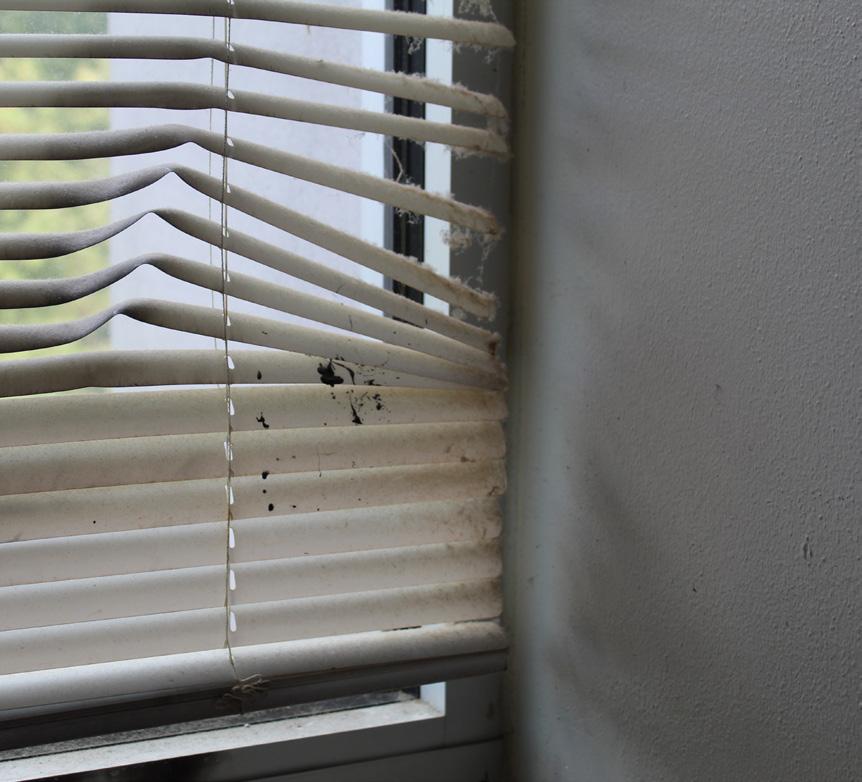

ing authority to request an inspection if they have additional concerns. If those issues don’t get resolved, they can request to move to another unit or property, or request a voucher to get housing on their own, she said.
Temple disputed this, saying the housing authority’s policy and practice are at odds with each other. She said apartments have to be in absolutely terrible shape before the housing authority decides to move someone to a new unit. She also said the housing authority told a friend of hers that her apartment was unlivable due to mold, but that it took six months for the agency to give her a voucher.
“They say one thing but do another,” Temple said.
White said the housing authority doesn’t oversee the daily operations of the properties and referred the Arkansas Times to Knight Development.
Knight Development CEO Lisa Phillips said their teams are investigating the tenants’ issues and will “certainly” address them in a timely fashion.
“With regard to operations, the property management team operates the developments in question under the housing guidelines of HUD and all programs affiliated with its operations. Part of our procedures include ensuring all units pass housing quality standards inspections prior to any tenant moving into a unit,” Phillips said.
As we walked up the ramp to get into Hickory View, part of the handrail was missing. Inside the front entrance to the building, there was a hole in the ceiling; residents said raccoons have sometimes fallen out of it. The hallway smelled like stale cigarette smoke, and someone had discarded a cigarette butt on the floor.
Inside the elevator, there was no cooling when reporters first entered the building — though the air conditioning kicked into gear as we all exited. On the 11th floor, cracks could be seen in the building’s walls and ceiling and outside on the balcony.
As reporters and an ACO organizer tried to get downstairs, the elevator was stuck for about 10 minutes. We waited in the hallway, which was very humid on a hot July day.
On the ninth floor, one apartment had a filthy air conditioner unit plugged in, the
bathroom was full of mold and a pipe was visible through a giant hole in the wall. To the left was another hole with electrical wiring inside. Mold was on the toilet seat, the bathroom wall, the bathroom ceiling and the window blinds outside of the bathroom. There was water damage on the ceiling.
Walking into Cedar Gardens, one of the first things we noticed was the strong smell of mold. Mold could be seen on the ceiling near the elevators and inside a vent that was leaking water. The first floor stairwell was filthy, with what looked like possibly dried vomit or feces on the floor, along with trash and other mysterious dark spots.
A storage room, which residents said has been locked for at least a year, was covered in blotches of mold from the ceiling to the floor. There was standing water on the floor.
Inside the elevator, dried brown spots were splattered against one wall. Stickford claimed it was blood from the shooting that Profit referred to earlier. There was no air conditioning inside the elevator.
Hamby took the Times inside her apartment on the third floor, which also smelled like mold. Hamby receives oxygen through a tube and uses a rollator to get around. White spots of mildew lined her white living room chair, and the walls of her bedroom were stained brown from liquid that had leaked from the ceiling. Dark mold could be seen around the vents in her apartment and her kitchen ceiling.
Stickford said she lives below Hamby, and the liquid coming from Hamby’s back wall is dripping down into Stickford’s apartment. Hamby said that in the past, maintenance has tried to mask the water damage by painting over it. Stickford said that the apartment’s windows don’t open, making it nearly impossible for residents to get fresh air.
“They [management] say it’s dust, they say it’s condensation,” Stickford said, pointing to what appeared to be mold in Hamby’s kitchen. “But that’s not dust, that’s not condensation.”
Residents said they will continue to bring light to the issues in their apartments. They said they just want the root issues to be addressed, not painted over — literally and figuratively.
“We just need help,” Stickford said. “We’re trying to reach out for help.”


Tuesdays 7:45pm-10:30pm Fridays 9pm-2am
Starts with a one-hour dance lesson. No partner or experience required.

Corporate Events Weddings
Birthday Parties
Christmas Parties And More
614 President Clinton Ave, Little Rock /club27lr /club27lr club27lr.com










BY ELIZABETH



I knew it the first time I visited in 2015, when I sat on the top floor dining room of Damgoode Pies in Hillcrest (RIP) and had my first bite of a “stuffy” — a double-crusted pizza baked in a pan, sealed like a homemade pie, packed to the brim with cheese and toppings (jalapeño and pineapple for me) and drowned in a pink sauce, a blend of a rich tomato and spicy white. That same trip, I heard tales about punk shows at Vino’s Brew Pub and late nights at Pizza D’Action, storied dive bars that sling slices with cold beer. As a lifelong pizza enthusiast and a longtime New Yorker, it felt like home.
Two years ago, I indeed made North Little Rock my home, just as a new generation of pizzerias was putting the state on the map as a bona fide pizza destination. A breakout moment came in 2023, when Barstool Sports’ Dave Portnoy visited Deluca’s Pizza in Hot Springs and gave it an 8.7 on his YouTube show, “One Bite,” which has nearly 1.5 million subscribers. Portnoy’s proclamation may have shocked the pants off Northeastern pizza snobs, but it only validated what locals already knew about the strength of Arkansas’s pizzerias.
In the last year, Deluca’s expanded into Little Rock. The Pizza Pub, which debuted in June, put its culinary twist on Midwest tavern-style pizza in North Little Rock’s Park Hill neighborhood. The scene-y, punk-rock-infused Problem Child opened in the Midtown area in March, serving hand-tossed pies with inventive toppings. Certified Pies — believed to be the state’s first independent Black-owned pizzeria — unveiled a storefront in 2023 and has announced plans for a second location. And in Bryant, 29-year-old chef Brian Krikorian mastered the art of both New
York and Detroit styles at Different Dough. Yes, there are head-turning new pizza places elsewhere (see Pizzeria Ruby in Springdale, the to-go pizzas at George’s, and Cash Only’s email-exclusive pizza drops), but for the sake of my cholesterol levels, I can only dig into so many.
So, how did Central Arkansas, far removed from the influence of pizza scenes in Chicago, Detroit and New York, develop a pizza culture that could go head-to-head with the country’s top pizza parlors? That geographical and cultural distance might well be part of the answer. With its distinctive thin-style crust and tireless affinity for pie (I counted at least 18 local pizza companies with 40 locations in the Little Rock area alone), the city’s pizza scene has always catered to the hearts of locals and played by its own rules.
The current pizza boom didn’t come out of nowhere. The COVID-19 pandemic brought future business partners together: The Pizza Pub’s Conan Robinson, owner of Four Quarter Bar, and Jess McMullen, co-owner of Brood & Barley, first collaborated to help introduce outdoor dining to North Little Rock’s Argenta district. For Problem Child owner and chef Adam Sweet, it was the loss of two family members, including one to COVID-19, that prompted a return home after running a successful pizza chain in Indiana for a decade. The pandemic also tragically pushed local favorites, namely Damgoode Pies, out of business. “With pizza, there’s really been a changing of the guard,” Certified Pies’ CEO Kreg Stewart said.
The shift isn’t just behind the counter. A more adventurous crop of diners has come of age,
steeped in foodie culture and exposed to global craft pizza trends through TikTok and television shows like “Chef’s Table.” On a recent night at Problem Child, Sweet sold out of a turnip-based produce special that might have caused an earlier generation of diners to turn up their noses. “Five years ago, this wasn’t something people would be excited about,” he said. “Now there’s an open-mindedness.”
That openness extends to supporting Arkansas pizza spots that are minority-owned. Certified Pies’ fans have driven from as far away as Pennsylvania to support the pizzeria’s vision as a Black-owned business. “They come not only because we have good food, but because it’s a dream. You can say, ‘I visited the first Black-owned pizza spot,’” Stewart said.
The marketing has shifted, too. Problem Child’s little devil logo-branded tees are cool enough to wear to a Terminal Nation show at Vino’s. Stewart and co-owner Harlem Wilson leverage TikTok to push Certified Pies, showcasing their process and helping them build a cult following far beyond state lines. “Just start somewhere and make yourself visible,” Stewart said. “They may be from Timbuktu, Idaho, but they love you — and they love Little Rock.”
Pizza has been part of the region’s DNA since Bruno’s Little Italy (first called Little Italy Café) opened in 1948 in Levy, bringing hand-tossed pizza — and even some national attention — to Arkansas’s then undiscovered food scene. The restaurant was founded by Vincent “Jimmy” Bruno, a World War II veteran stationed at Camp Robinson who, like many Italian Americans, helped popularize pizza after the war. A natural self-promoter, he claimed to descend from the country’s first pizzaiolos — and to be the first person to make a pizza on national television.
Other legendary spots have opened in the nearly 80 years since (shoutout to Iriana’s Pizza), but none have shaped the local scene quite like Vino’s. Its arrival in 1990 established the pizza parlor as a community hub, including for punk kids eager to make their mark on the wider food movement. Long before opening Problem Child, Sweet slung pizza at Vino’s as a teenager. “Vino’s are the OGs. Without them, none of us would be here in Little Rock,” he said.
With ZAZA Fine Salad & Wood Oven Pizza Co.’s 2008 opening, Arkansas’s food scene turned outward, tapping into the national craze for personal-sized Neapolitan pizza using refined ingredients like San Marzano tomatoes, Italian cured meats and higher-quality cheeses. ZAZA’s influential chef and restaurateur, Scott McGehee (who’s also a founding partner in Yellow Rocket Concepts, ZAZA’s parent company, which is now majority-owned by an investment firm called FoxDen Capital), also helped build up a culinary community, laying the groundwork for today’s farm-to-pizza moment. Later additions to the locally sourced trend include The Pizzeria and Raduno Brick Oven & Barroom, the latter of which has been the recipient of numerous accolades — most impressively, Best Chef for Cash Ashley


SCREAMING WEASEL: A white pie with feta, artichokes, lemon wedges and more, Problem Child's Screaming Weasel is a decadent masterpiece.
three years running — in our annual Readers Choice poll.
Even as the scene explodes with new talent and styles, a distinctly Arkansas-style pizza — a thin-crust with a satisfying slight chew and loaded to the edges with toppings — has remained the beating heart of the state’s pie identity. Though it’s hard to pin down a single origin story, the local pizza style likely originated with U.S. Pizza Company (also acquired by FoxDen Capital this year), which opened in Levy in 1972 and helped spark a spirited rivalry among homegrown chains slinging a similar style, from Shotgun Dan’s Pizza and Jim’s Razorback Pizza to Larry’s Pizza and American Pie Pizza. A rumor is that Whit Waller, then-husband of U.S. Pizza founder Judy Waller, worked at Pizza Hut as a college student and wanted to best the chain’s then-popular Thin ’N Crispy pie.
Pizza Cafe, which opened in 1991, introduced Little Rock to what I’d argue is the strongest contribution to the Arkansas style (other than the “stuffy,” of course). Founder Richard Harrison perfected a crisp, honey-infused dough, trimming the edges with a signature braided crust (thicker than its competitors), and serving it with honey for dipping. “I felt like I’d run into something almost magical for us,” Harrison said of landing on his unmistakable recipe.
As for Damgoode Pies’ famed “stuffy,” it appears to be an Arkansas original as well. Chicago has a stuffed pizza, but it’s a thick, doughy pie, not Damgoode Pie’s lacquered, crunchy architectural wonder that was almost light enough to down on your own. According to owner Jeff Trine, the “stuffy” originated at Hillcrest’s Pie Square Pizza, which closed in the 1990s, and was then passed along to Easy’s Pizza. When Trine later acquired Easy’s, he gave the stuffy his own spin, refining the dough and layering it with housemade sauces and scratch-made toppings. “The pink sauce on top of the stuffy was the belle of the ball,” recalled Trine, who shuttered Damgoode Pies after 23 years in 2024.
Deluca’s sudden stardom after a decade in business proved to the rest of the country that Arkansas isn’t just following pizza trends, it’s setting a high bar of its own. When the new, larger location opened in Little Rock, it was mobbed with diners, a testament to just how strong the local pizza movement had become. “I always say we were a 10-year overnight sensation,” owner and chef Anthony Valinoti said. In September, the Deluca’s team heads to Portnoy’s One Bite Pizza Festival in New York City, where they’ll cook for 10,000 pizza fans alongside some of the most lauded pie shops in the country, from Sally’s Apizza of New Haven, Connecticut, to John’s of Bleecker Street in New York’s Greenwich Village.
Valinoti may be Arkansas’s most famous local pizzaiolo, but he’s not the only one operating at the level of obsession. Different Dough’s Krikorian is doing New York and Detroit style his own way, cooking at a lower temperature and with more water, which gives him a flavorful, chewy crust with just the right amount of crunch and color. He aims to switch to electric ovens, influenced by icons like Brooklyn’s L’Industrie, to give him more control over the bake. At Certified Pies, Wilson (who taught himself pizza-making by checking out books from the library) treats doughmaking as an ever-evolving craft. “It’s the little things that we look at, from how we could do this even better, from changing our flour to even how long we mix to how long we let it proof,” he said.
And while Deluca’s simplicity is key to its greatness (the Sidetown Pie is indeed sublime),

TRAILBLAZER: Certified Pies, which unveiled a storefront in 2023 after operating out of a ghost kitchen, is believed to be the state’s first independent Black-owned pizzeria.


So, how did Central Arkansas, far removed from the influence of pizza scenes in Chicago, Detroit and New York, develop a pizza culture that could go head-to-head with the country‘s top pizza parlors?
That geographical and cultural distance might well be part of the answer.

other pizza parlors are pushing decadent toppings and celebrating local charm with their own brand of success. Certified Pies’ summer special, the Smack Daddy, features Little Rock-sourced smoked brisket and a honey BBQ swirl. The Pizza Pub’s Big Ouachita Island comes with fried bologna. And Problem Child’s Screaming Weasel — a nod to punk and local vintage shop Crying Weasel Vintage — is a white pie with feta, artichokes, lemon wedges and more.
Making pizza in Arkansas still has its quirks. Krikorian said sourcing specialty ingredients, like high-extraction flour, can be a challenge, as some supply chains don’t reach into the middle of the country. He’s also pushing back on a local preference for a lighter bake, as a longer cook time and deeper color equal flavor. “That color is what we’re looking for to get the flavor we want,” he said. Valinoti’s minimalist style of pizza-making took time to take hold as well (the Sidetown is topped with whole milk mozzarella), but now there’s a strong audience in Arkansas eager to support the visions of local pizza chefs. “If you build something with such passion and care, that plain cheese piece is really all you need,” Valinoti said.
Despite the rising hype, the new crop of pizzerias isn’t self-serious or stodgy, either. Whether you’re downing slices to ’90s emo at Problem Child or tucking into the sultry red leather banquettes in Deluca’s low-lit dining room, these restaurants are fun and vibey. At The Pizza Pub, a “Balstovitch” mural — an alien-like creature painted by legendary North Little Rock artist Roland Putnam Burnham III — peers out from the corner of the neighborhood stomping ground that Park Hill needed. “We want people to hang out and have a great time, and to see familiar faces and friends,” Robinson said.
What makes the scene here so special isn’t a craving for validation. It’s the freedom to do things its own way. Arkansas isn’t New York, Detroit, St. Louis or Chicago, nor does it care much what those places are doing. That means more innovation and more creativity. That originality is what drew me in, first as a visitor, now as a neighbor. Whether indulging in Certified Pies’ unapologetically decadent creations, dipping your Arkansas thin-crust into a homemade ranch cup, or reveling in the simplicity of Deluca’s, one thing is clear: Arkansas isn’t just making great pizza; it’s making its own pizza rules.
HONEYED PERFECTION:
The signature braided crust at Pizza Cafe is served with honey for dipping.

Episcopal Collegiate School River Trail
Dillard’s

Arkansas River
CYCLISTS STILL HAVE TO DODGE PEDESTRIANS AND TELEPHONE POLES JUST INCHES AWAY FROM SPEEDING TRAFFIC IN FRONT OF DILLARD’S HEADQUARTERS. AFTER TWO DECADES, CAN WE FINALLY CLOSE THE LOOP?
BY MILO STRAIN PHOTOGRAPHY BY BRIAN CHILSON ILLUSTRATION BY LAYET JOHNSON
The Arkansas River Trail loop has long been lauded as an example of Central Arkansas’s forward-thinking commitment to tourism, sustainability and quality of life. But two decades after the trail opened to bikers, walkers and joggers, the “loop” part remains a misnomer.
While the project has been mostly finished for years, a treacherous gap still forces cyclists off the calm and traffic-free path and onto a narrow city sidewalk along Cantrell Road sandwiched between Episcopal Collegiate School and Dillard’s corporate headquarters. The four-lane road is one of the busiest surface streets in Little Rock, with 23,000 cars and trucks whizzing past on an average weekday. Negotiations, pressure campaigns, carrots and sticks have not been enough to close the deal, with officials from both Dillard’s and the school bristling at the idea of inviting the public to traverse their campuses.
“We have not yet found a solution that is both safe for all ages and abilities and acceptable to Dillard’s or the Episcopal School,” the city’s website states.
The most obvious place for the trail would be somewhere on the Dillard’s property. But the company has rejected plans to close the “Dillard’s gap,” as it’s known to local cyclists, for 15 years now. According to former Little Rock Mayor Mark Stodola, the negotiations grew so contentious at one point that Dillard’s threatened to move its headquarters out of town if the city used the power of eminent domain to roll the trail across the department store chain campus.
Stodola told the Arkansas Times that he met with Dillard’s CEO Bill Dillard II around 2010 to discuss closing the loop. The company at first gave the mayor an extensive list of terms for moving forward; Stodola said the city would agree to them all. But then Dillard’s pulled the plug on
the negotiations, and Stodola said he was never given a clear reason why.
“I was never able to get in a meeting or get an answer,” he said.
Now, under Mayor Frank Scott Jr., the city of Little Rock is reportedly in yet another round of talks with Dillard’s over the unfinished section.
Central Arkansas bikers aren’t holding their breath. The situation may be different this time around, though. Joe Jacobs, president of the nonprofit group Bicycle Advocacy of Central Arkansas, met with Scott on July 18 to discuss the status of the latest round of meetings with Dillard’s. According to Jacobs, city officials told them Dillard’s is no longer the main obstacle; funding is.
“[Scott] told us that he had no money to actually do the project … and that he hoped that we could find some people with deep pockets that could help pay for it,” Jacobs said. “It seems that it’s not Dillard’s any-

GAME OVER: Reflective barriers mark where the Arkansas River Trail abruptly ends and a sharp turn down an alternate path carries bikers to busy Cantrell Road.


MIND THE GAP: (From left) A cyclist enjoys a ride on a finished section of the Arkansas River Trail in Little Rock. Drivers speed down Cantrell Road at what's known as the Dillard’s Gap. Pulaski County real estate records show that Dillard’s owns part of the land its headquarters resides on; parcels to the left and right are owned by the city of Little Rock.
more; it’s now the city that’s holding it up.”
Aaron Sadler, a spokesperson for Scott, said the city has hired an engineering firm to create alternative designs to bridge the gap in the River Trail. Money is available for the $170,200 design contract, Sadler said, but he confirmed the city does not have funding lined up for construction. He said officials had at least one “positive and productive meeting with Dillard’s in June” and “will meet again soon.”
“Mayor Scott and the city of Little Rock team have enjoyed a positive relationship with Dillard’s as we move forward to connect the trail as funding becomes available,” Sadler said. “We are excited about the potential designs and how the project will be another asset for quality of life and place in the city of Little Rock.”
The path beyond the design phase isn’t clear, though, as the city lacks funds to build any of the designs, the construction costs of which range from $8 million to $18 million, according to Sadler.
Dillard’s itself hasn’t confirmed or denied anything. The company didn’t acknowledge multiple calls and emails from the Arkansas Times asking about its position on the River Trail.
Portions of the Arkansas River Trail opened to foot and bicycle traffic in 2004.
In 2006, the western ends of the Little Rock and North Little Rock trails were connected over the Arkansas River with the opening of the Big Dam Bridge. The eastern end of the loop was upgraded in 2011 with the opening of the Clinton Presidential Park Bridge.
The two sides of the loop tell two different stories. In North Little Rock, much of the land on which the trail was built was part of the city’s park system and had little to no existing infrastructure. Gene Pfeifer, a local biking advocate and land developer, also donated land on the north bank of the river for the trail. Most of the River Trail in North Little Rock is a paved, standalone trail for bikes and pedestrians only, and on the sections that do follow a roadway with car traffic, the bike lanes are comfortable and well-marked. For most of the route, it’s an idyllic, leisurely ride through woods, fields and parklands.
After crossing the Big Dam Bridge and heading east toward downtown, the Little Rock side of the trail provides a comparable experience until you get past Rebsamen Park. At that point, the trail turns into a narrow bike lane on busy Riverfront Drive for about a mile before putting you back — briefly — on a dedicated trail that takes you toward the notorious Dillard’s gap.
The city of Little Rock website describes the unfinished stretch along Cantrell Road as “by far the worst and most infamous
gap” in the trail, used only by “the most stress-tolerant bicycle commuters.”
Starting just east of the Gill Street bridge, cyclists must either ride on Cantrell itself or take a narrow sidewalk that intersects with driveways for the Dillard’s headquarters. There are several utility poles and guy wires planted directly in the sidewalk, and pedestrians and cyclists must avoid each other when crossing paths. From there, you can either go through downtown Little Rock or take a path closer to the river before the trail converges again in Riverfront Park and takes you to the Clinton Bridge, completing the loop.
Forcing cyclists and pedestrians to share sidewalks is bad news for both. A fast-moving bike could seriously injure or even kill a pedestrian. Some cities, like North Little Rock, don’t allow cyclists to ride on the sidewalk at all.
In Little Rock, a city ordinance prohibits cyclists from riding on sidewalks in “business districts,” which city code defines as “the territory contiguous to and including a highway when within any six hundred (600) feet along such highway there are buildings in use for business or industrial purposes.”
Cantrell Road is a state highway, but according to city officials, the area isn’t a business district. “The zoning is office and industrial. The city attorney does not believe this would be considered a business dis-


trict,” Sadler said in response to a question about whether it may be technically illegal to ride a bike on the sidewalk in front of Dillard’s.
While cyclists in Arkansas are free to use public roads the same as a car — except for interstates and certain other highways — biking with the flow of traffic on that section of Cantrell usually isn’t an option for any but the most daring cyclists. There are no bike lanes or shoulders, and cars frequently exceed the posted 40 mph speed limit. And cyclists heading toward downtown from the Big Dam Bridge have to cross four lanes of traffic just to access the right side of Cantrell Road.
Jacobs, who is also the editor of the website Arkansas Outside, called it “probably the most dangerous spot on the River Trail” with very little infrastructure for cyclists.
“This is kind of a dangerous place to try to do sidewalk crossings, and it’s not wide enough for either bikes or people to pass each other,” Jacobs told the Arkansas Times. “So it really needs to be updated.”
Dangerous by Design, an annual report ranking the most dangerous cities for pedestrians by nonprofit organization Smart Growth America, listed the Little Rock metropolitan area as the 10th most dangerous for pedestrians in 2024 out of a list of more than 100. The metro area has an average annual pedestrian fatality rate of 3.63 per 100,000 people and saw 136 pedestrian deaths from 2017 to 2022, according to the report. The city badly needs better infrastructure for people traveling by foot or by bike.
Jacobs wrote in Arkansas Outside last year that closing the loop would improve
“safety and convenience for pedestrians and cyclists” and make “Little Rock a more attractive place to live and visit.”
He pointed to marketing materials from the Little Rock Regional Chamber and the Little Rock Convention and Visitors Bureau dubbing Little Rock “Cycling’s Capital City” and the River Trail the “perfect trail for beginners, families or those just getting acquainted with the city.”
Jacobs said it’s dishonest to advertise the trail in its incomplete state.
“It’s not really a true statement to go out there and say, ‘Yeah, we really want everybody to come here and see the River Trail,’ because it’s not done,” Jacobs said.
Mark Stodola, who served as Little Rock mayor from 2007 to 2018, said he had gotten every relevant property owner except for Dillard’s to agree to closing the loop on the north side of Cantrell when he was in office.
Stodola initially met with Bill Dillard II, the chairman and CEO of Dillard’s, to discuss closing the loop around 2010, he said. Back then, the city had received funding from Metroplan, the region’s metropolitan planning agency, for preliminary engineering work and was considering building a trail on the bluffs behind the Dillard’s building, which abuts the southern bank of the Arkansas River.
“They provided me with a list of about 15 things that, if they agreed to do this, these are the things they would require of the city,” Stodola told the Arkansas Times. “I responded back to them that we would comply with all of those provisions.”
Provisions included installing 24-hour se-
CITY OF LITTLE ROCK
curity cameras and providing liability insurance, Stodola said.
The city then worked with Metroplan to hire an engineering firm, eventually producing a mock-up video of what the trail might look like.
“I went and attempted to try and get a meeting again with Dillard’s to not only show them the video, but to also say, ‘Hey, we’ve done the engineering. Everything works,’” Stodola said. “I was unable to get an appointment with Mr. Dillard.”
A Dillard’s staff member eventually called Stodola and said they had elected not to move forward. Dillard’s never returned to the negotiating table during the remaining years of Stodola’s tenure as mayor, despite his attempts. The company never provided him with a reason for their opposition, he said.
The city also looked into an alternate solution: routing the trail behind the Episcopal School’s campus on the south side of Cantrell. Stodola said Little Rock officials invested “substantial time” into those discussions, but the school — which has the backing of some of Little Rock’s wealthiest families — rejected the plans. In any case, the city now appears to have abandoned the prospect of the Episcopal route, which would require cyclists and pedestrians to cross four lanes of traffic to access. If the loop is to be closed, Dillard’s is the key.
The city actually owns most of the land that the Dillard’s headquarters is on. Pulaski County property records show the roughly 14-acre campus is made up of three parcels, one of which is owned by Dillard’s. The city holds title to the other two parcels and Dillard’s has an exclusive lease.

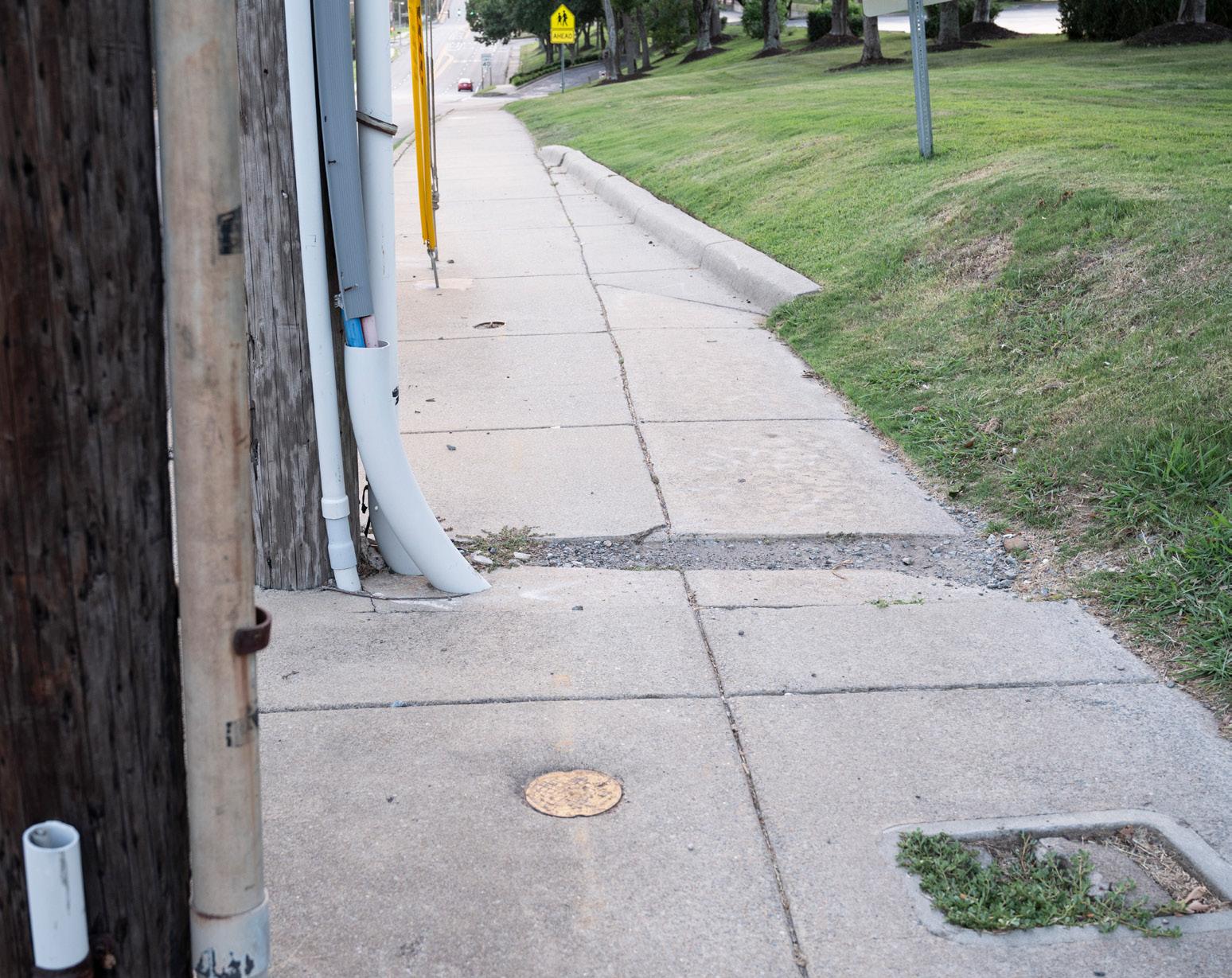

(Top and bottom left) Bikers zoom down Dillard’s gap, a sidewalk that runs in front of Dillard’s headquarters. Utility poles, guy wires and other hazards turn this section of the River Trail into an obstacle course of sorts. An engineering firm recently drew up five options for how to complete the loop. Option 5, pictured above, is the running favorite among the cycling community.
“Part of the property was built with an Act 9 bond issue … which is basically a sale-leaseback situation,” Stodola said. “So actually, the ownership of the land is, at this time, in the name of the city of Little Rock.” In a sale-leaseback, a property owner sells a piece of land and then immediately leases it back from the party they sold it to.
Stodola said he explored using eminent domain and going through litigation to forcefully close the loop but abandoned the idea after a “pretty candid conversation” with someone from Dillard’s corporate office who said the company didn’t have to keep its corporate headquarters in Little Rock.
“I doubt that they would have gone through with that, but they were quite adamant that they did not want the trail and there would be consequences about that,” Stodola said.
Stodola said he “didn’t feel that litigation was the route to try and resolve the issue,” adding that Dillard’s is a good corporate citizen and a big employer in Little Rock.
“I was trying to work in a cooperative way to try and find another alternative route, another way down the front of their property, trying to find a way to make this thing work,” Stodola said. “Ultimately, what happened is I ran out of time on my term, but it’s still a

priority of mine. I would love to see it get finished one way or the other.”
Stodola also said he’s looked into even more creative options for closing the loop. He said constructing a floating trail on the river “is a possibility that ought to be explored,” though it would require working with the U.S. Army Corps of Engineers. He said a floating trail is “similar to what they’ve done in Seattle and some other areas.”
Last July, Little Rock’s then-Public Works Director Jon Honeywell presented five different plans to close the loop to Bicycle Advocacy of Central Arkansas. All were designed by the engineering firm Garver.
Plans ranged from simply building an alternate sidewalk path, to building a pedestrian bridge, to carving out a tunnel under part of the Dillard’s property. The fifth plan, which proposes building a bridge over one of the Dillard’s driveways, a tunnel under another, and a sidewalk that goes behind The 1836 Club and Dillard’s IT building, was the most popular.
Were a plan to be approved, funding is still an obstacle to the loop’s completion. Mayor Scott provided assurances that the city would fund the project, Honeywell said, in the July 2024 meeting with bicycle advocates. But Sadler, the mayor’s spokesman, told the Arkansas Times in July that the city has no funds for constructing it. Honeywell retired from the city at the end of May. Maneesh Krishnan, an assistant director in the department, is serving as interim director.
Supporters of closing the loop haven’t given up, but some say they’ve been here before.
“They’ve looked over plans before and generally rejected them,” said Jacobs,
long a critic of Dillard’s unwillingness to host a portion of the trail. “We’re hoping this time, they’ll approve one of the city’s plans, but it’s taken over a year to get to this point on this particular attempt to get this area fixed.”
The issue has been a popular cause among local cyclists since the trail opened. Bicycle Advocacy of Central Arkansas ran a letter-writing campaign last year, encouraging Little Rock residents to write to their ward directors and attend meetings to voice support for closing the loop.
Jacobs said people interested in supporting the effort should contact their representative on the Little Rock Board of Directors and join Bicycle Advocacy of Central Arkansas.
On Reddit, users on the /r/LittleRock subreddit have lamented the Dillard’s gap for more than a decade, and posts questioning the gap continue to pop up. For some users, the gap in the trail serves as a reminder of the power that monied interests wield over public policy.
“We’ve found ourselves in a situation where 10-20 people in a Dillard’s boardroom are blocking the completion of an incredible amenity that would serve over 200,000 people plus visitors. It’s not right that their interests take precedence over many, many thousands,” one user commented in a May Reddit thread discussing the idea of crowdfunding a billboard near Dillard’s headquarters to spread awareness about closing the loop.
Unlike their fellow cyclists in Northwest Arkansas, where deep pockets at the Walton Family Foundation have invested heavily to build hundreds of miles of trails designed for bike and pedestrian traffic, cyclists in Central Arkansas have found themselves, as Bicycle Advocacy of Central Arkansas puts it, “between a rock and a hard
place.”
“Welcome to the Arkansas River Trail,” a caption reads on a video posted to the organization’s website, which gives the viewer a firsthand perspective of what it feels like to ride eastward along the sidewalk that borders the Dillard’s campus, dodging manhole covers and utility poles mere inches from oncoming traffic.
In the years since the River Trail first opened, regional bike trail networks in Central Arkansas have expanded dramatically. The River Trail is now connected to the trails at Two Rivers Park. Mountain bikers have many new options at places like Rattlesnake Ridge or the Monument Trail systems that have been built out at several state parks. Cyclists can ride the larger, multi-use Arkansas River Trail Grand Loop, which consists of 88 miles of designated roads throughout Central Arkansas, and look forward to even more ambitious projects in the future, such as the Southwest Trail that may eventually link Little Rock and Hot Springs.
Still, the Dillard’s gap continues to be the Achilles’ heel of the 15.6-mile River Trail loop, which was originally envisioned as the centerpiece of a multitrail system sprawling across Central Arkansas.
Should these renewed attempts to close the loop fail, Jacobs wrote in 2024, the city will be missing out on a major opportunity to improve quality of life in Little Rock and attract more commerce.
“If you go onto the Little Rock Regional Chamber website, the first three images on the video playing on that site are from either the River Trail or one of the bridges that connect to the River Trail,” Jacobs said. “This is obviously a major piece of marketing for the city that brings businesses here.”

SUBSIDIZED BY THE US: Palestinians displaced by Israel’s bombardment of Gaza.
BY JENNIFER LENOW

It’s no secret the United States is Israel’s biggest supporter, even as the country faces credible accusations of war crimes from nearly every international governance body and human rights organization in the world. The U.S. sends billions of dollars in military aid to Israel every year, making it the largest recipient of American foreign aid in history.
Many Arkansans may not know their state government is also sending money to Israel, albeit as loans rather than aid. As of July, Arkansas holds $55 million in Israeli bonds, including $20 million purchased since May 1. That means Arkansas taxpayers have effectively loaned Israel $55 million to use how it sees fit.
Two boards overseeing the pension funds of Arkansas state employees also recently voted to buy up to $100 million more in Israeli bonds within the next few years. As of June, the Arkansas Public Employee Retirement System (APERS) authorized investing between $25 million and $50 million in Israeli bonds, while the Arkansas Teacher Retirement System (ATRS) authorized investing up to $50 million, despite an objection by an ATRS board member. If the retirement systems act on those recommendations, Arkansas public entities could lend Israel up to $155 million that could be used to fund its ongoing wars.
These recent decisions were made despite a recommendation made last fall by a senior investment manager within the state treasurer’s office to hold off on buying more Israeli bonds. The internal report cited downgrades of Israel’s long-term creditworthiness across all three major rating agencies.
A few weeks after this recommendation was made, a representative with the Development Corporation for Israel — the institution that underwrites Israeli bonds sold to U.S. investors — arranged a meeting with state officials. After that meeting, the state apparently decided to ignore its investment manager’s advice and buy more Israeli debt.
The purchases come after the state Legislature in 2023 passed a bill touted as a way to depoliticize the state’s financial holdings by prohibiting investments that adhere to so-called ESG principles. More than a dozen states have passed similar anti-ESG laws, which target investments that take certain ethical factors — environmental, social and governance considerations — into account. The Arkansas law requires that “the Treasurer of State’s evaluation of an investment shall be based only on pecuniary factors.”

PROUD SUPPORTER: “I’m proud to be a supporter of the State of Israel and happy to help these fine gentlemen in any way that I can,” Arkansas state Auditor Dennis Milligan wrote on Facebook when he met in Little Rock with Larry Berman and Brad Young of Israel Bonds in April 2025.
But is Arkansas’s purchase of Israeli bonds driven only by “pecuniary factors” — that is, strictly financial reasons?
Gov. Sarah Sanders celebrated one of the recent purchase decisions on social media with an explicitly political framing. “Arkansas puts its money where its mouth is and is investing millions in Israeli bonds!” she proclaimed. Other state officials have also tied the state’s Israeli bond purchases with political support for Israel. At an October 2023 State Board of Finance meeting, then-Treasurer Larry Walther explained the state’s intent to purchase more Israeli bonds: “Investing in Israel Bonds is a testament to our longstanding belief in Israel’s resiliency and the value it brings to the global economy.”
Former Arkansas Gov. Mike Huckabee, the father of Arkansas’s current governor, is a longtime Christian Zionist who serves as the U.S. ambassador to Israel under President Trump. Huckabee still enjoys relationships with state officials serving under his daughter, and those ties appear to be another factor driving the state’s investments in Israel. Jason Brady, the state’s deputy auditor, noted this as an “ancillary reason” to purchase Israeli bonds when presenting a resolution at the APERS investment committee in May.
“The U.S. ambassador to Israel is a former governor of this state and coincidentally my and Amy’s former boss, Mike Huckabee,” Brady said, referencing APERS Executive Director Amy Fecher. Brady also gave the committee another nonpecuniary reason for the
purchase: “Israel is considered the United States’ most trusted and dependable ally in a region of the world that is volatile at best.”
Arguably, Israeli bonds are inherently political. That seems to be the way Arkansas politicians view them: an investment that delivers political capital along with financial returns. And the manner in which these investment decisions were handled casts considerable doubt on whether state officials considered only factors related to financial performance when making investment decisions. Spokespeople for APERS, ATRS and the Arkansas State Treasury, however, all contend that policymakers followed the law and acted in the best interest of stakeholders.
The bonds purchased by Arkansas and other states are issued by the Development Corporation for Israel, an organization legally separate from but closely affiliated with Israel’s Ministry of Finance. It is often called “Israel Bonds” for short. The bonds are backed by the full faith and credit of the Israeli government and are not earmarked to specific expenditures, meaning the funds raised by their sales can be used at the discretion of the state. Both individuals and institutional investors in the United States can buy the bonds, which range in price from $36 for “eMazel Tov” bonds to $1,000,000 for “Premium Jubilee” bonds. Each category of bond offers different maturity periods (e.g., 3-year, 5-year, 10-year) with different associated interest rates. Typ-

ically, longer-term bonds deliver a higher return to investors.
Since the Development Corporation for Israel’s inception in 1951, these bonds have not only served as financial instruments but also as a gesture of support for the state of Israel. This is, in fact, part of Israel Bonds’ marketing strategy. Advertisements for Israel Bonds include language like “Stand with Israel” and “Building tomorrow, together.” Representatives from Israel Bonds develop relationships with financial officers in local and state governments in the U.S., encouraging them to purchase Israeli bonds with public funds. These officials then go on to proudly publicize the investments as proof of their support for Israel.
But Israeli bonds are more than symbolic tokens; they reflect the exchange of real money, through debt securities that serve as longterm loans.
Notably, the bonds sold by the Development Corporation for Israel are illiquid: They cannot be traded in secondary markets, and the original buyer must hold them until maturity. This is in contrast to many other commonly held fixed-income debt securities, like U.S. Treasury bonds, and for this reason, the bonds typically have higher interest rates than other, liquid bonds.
These competitive rates entice investors with higher “coupon payments,” or interest paid to the investor at regular intervals. At the date of maturity, as long as the creditor does not default, the principal is paid back in full to
politicians seem to view Israeli bonds as an investment that delivers political capital along with financial returns.

the investor. Israel has never defaulted on its debt.
But those higher rates of return come with risk. Institutional investors must strive for a certain level of liquidity in their portfolios. Should a crisis occur, investors might need to liquidate their assets to increase cash flow and restore balance sheets. According to the state treasurer’s website, one objective of the treasurer’s investment policies is to “maintain liquidity.” More fundamentally, state financial officers have a responsibility to make sound investment decisions based solely on financial factors.
Since October 2023, Israel Bonds has raised over $5 billion in the United States, largely from local governments and public employee pension funds across the country. Along with Arkansas, investors include Texas, New York, California, Ohio, Louisiana, Mississippi, Oklahoma and South Carolina.
Israel Bonds raises this money not only by plying financial decision-makers in person, but also by putting out politically and emotionally
loaded advertising pitches pegged to current events. After Israel launched a war against Iran last month, Israel Bonds sent an email to state officials saying, “Operation Rising Lion continues with precision and strength. Even in the face of retaliation, Israel stands tall. Now is the time to match that strength with action. An investment in Israel bonds is more than financial — it’s a declaration of solidarity and support. Israel is strong. Play a part in that strength.”
On Feb. 13, Israel Bonds sent a message to state officials with the subject line, “Will you be Israel’s valentine?”
After Hamas’ surprise attack on southern Israel on Oct. 7, 2023, killed 1,195 people, Israel declared war on the entire Gaza Strip, a small, densely populated Palestinian territory that according to international law has been illegally occupied by Israel since 1967. Since then, Israeli forces have killed over 55,000 people and injured well over 100,000, most of them women and children. Given the immense de-
struction and lack of water, food and medical supplies, these estimates are likely low. Most international human rights organizations say Israel’s war effort constitutes genocide.
And conducting genocide in Gaza — along with waging offensives in Lebanon, Syria and Iran — is taking a toll on Israel’s economy. The Israeli government has borrowed more than $100 billion since October 2023, and Israel’s debt-to-GDP ratio has risen to 69% in the last several years.
That makes investments in Israeli bonds riskier. Each of the Big Three credit rating agencies — Moody’s, S&P and Fitch — have downgraded the credit ratings of Israeli bonds in the last 20 months. These agencies assign ratings based on the likelihood that the debtor will honor a given financial obligation. Moody’s, S&P and Fitch have similar credit rating scales, which range from “AAA,” the safest investments, to “C,” meaning an issuer is on the verge of default, with many tiers in between.
All three credit rating agencies have assessed Israeli bonds to have a “negative outlook,” reflecting a high likelihood of future downgrades. The lowest rating among the Big Three is from Moody’s, which in September 2024 downgraded Israeli bonds from “A2” to “Baa1” with a negative outlook. A debt instrument with a Moody’s Baa1 rating is still considered “investment grade,” rather than “speculative grade,” though it “may possess speculative characteristics.”
“The key driver for the downgrade is our view that geopolitical risk has intensified significantly further, to very high levels, with material negative consequences for Israel’s creditworthiness in both the near and longer term,” the ratings agency explained.
Since these downgrades, Israel has launched a war against Iran. While currently on pause, the conflict has already cost millions of dollars and will strain Israel’s economy further if the current ceasefire deal collapses.
The public official behind Arkansas’s recent spate of investments is state Auditor Dennis Milligan, who served as the state treasurer between 2015 and 2023. A former chairman of the state Republican Party, Milligan asked state legislators in 2017 to introduce a bill that would authorize the Arkansas State Treasury to purchase Israeli bonds. Sponsored by former Sen. Jason Rapert, a Republican who now serves as the chair of Christian outreach for Israel Bonds, the bill was signed into law by then-Gov. Asa Hutchinson that year.
The treasury serves as the state’s bank and, like private banks, invests a portion of its deposits — from state agencies and taxpayers — in a variety of financial instruments. Treasury staff directly manage this $11.4 billion
investment portfolio in accordance with state law and guidelines set by the State Board of Finance.
Milligan claimed credit for cultivating the economic relationship between Israel and Arkansas. In a speech Milligan gave on Oct. 7, 2024, he proudly recalled being approached by representatives of the Development Corporation for Israel during his first term as treasurer.
These representatives were likely Larry Berman, the corporation’s national managing director of corporate and institutional sales, who, according to his bio, is “directly responsible for selling 60 new pension and treasury funds totaling more than $10 billion,” and Brad Young, the executive director of the Southeast regional office. Milligan posted a photo of his meeting with the two men on Facebook in April. “I’m always happy to have my friends Larry Berman and Brad Young from Israel Bonds Development Corp. in Little Rock,” he wrote. “I’m proud to be a supporter of the State of Israel and happy to help these fine gentlemen in any way that I can.”
The office of the state auditor did not respond to a request for comment about whether Milligan considered nonfinancial factors when advocating for state entities to invest in Israeli bonds.
Investing in Israel may be popular among American politicians, but the recent setbacks to the country’s credit rating make it a tougher sell from a purely financial standpoint, as shown by records provided to the Arkansas Times in response to a Freedom of Information Act request.
On Oct. 7, 2024, then-Treasurer Larry Walther asked the state’s investment professionals to weigh in on whether Israeli bonds continued to be a good investment for Arkansas.
“The Treasurer requested a briefing or summary on Israeli bonds sometime this week,” Walther’s chief deputy treasurer wrote in an email to two of the state’s senior investment managers. “He wanted to hear from you on your opinion about purchasing more Israeli bonds in the future.”
One of the senior investment managers, Steve Pulley, drafted an internal report dated Oct. 8 for the treasury’s investment meeting that month. Pulley recommended a “hold on adding more bonds.” Pulley’s report recommended that the state “hold our positions and allow for the $17M to roll off [mature] in the first half of 2025 and the $20M maturing in the calendar year 2026.” Citing the recent downgrades in Israel’s credit rating, he commented that “the outlook remains negative, reflecting the ongoing uncertainties and potential for further escalations in the region.”
A few weeks later, Berman and Young, the representatives from the Development Corpo-
ration for Israel, met with state officials. After that November meeting, emails between Berman and state officials indicate that despite Pulley’s advice, Arkansas was planning to purchase more bonds in 2025.
On May 1 of this year, the state did just that, under newly elected Treasurer John Thurston. Its $20 million purchase of new Israeli bonds raised the overall state investment in Israel to $55 million.
But Berman and Milligan also had a new source of investment dollars in mind: the state pension funds.
APERS (the public employee pension fund) and ATRS (the teacher pension fund) manage investments of around $11.7 billion and $22 billion, respectively, on behalf of tens of thousands of retired state workers and school employees. Typically, around 20% of the pension funds’ portfolios are allocated to bonds or similar debt instruments, which are usually relatively low risk but also low return.
Like the state treasury, APERS and ATRS invest in a variety of financial assets, including bonds. Unlike the state treasury, which directly manages its investment portfolio, the two retirement systems use third-party investment managers as well as consultants who oversee the work of those managers.
When Berman and Young visited Arkansas in November to talk with state officials, Milligan also arranged for them to meet with Fecher, APERS’ executive director, and ATRS Executive Director Mark White. Young later sent Milligan a postcard with a handwritten note saying, “It was wonderful to see you and the meetings you helped arrange for us were productive and will hopefully lead to some Israel Bonds sales … Dennis, your support and passion for Israel and Israel Bonds is second to none. I am very thankful and fortunate that we have friends like you. It is critical to our success and Israel’s future.”
In April 2025, the Israel Bonds representatives again met with White and Fecher, along with Milligan and Thurston, the new treasurer. Within two months of that meeting, the treasury purchased $20 million more in Israeli bonds, and the APERS and ATRS boards voted to authorize the purchase of up to $50 million in Israeli bonds each.
On May 15, the APERS investment committee unanimously voted to ratify a resolution authorizing the system’s staff to purchase Israeli bonds. The resolution was presented by Brady, Milligan’s deputy in the auditor’s office. Brady presented a similar resolution at a meeting of the ATRS investment committee on June 2. That resolution, which authorizes ATRS staff to invest up to $50 million in Israeli bonds, passed with one vote against it, cast by
The bond market brims with other offerings that aren't as politically charged and that are more liquid. So why Israeli bonds?
board Chairman Danny Knight. Knight said that the resolution was “going outside of the scope of the way we usually do things.” The board typically relies on financial professionals to recommend specific investments in stocks or bonds, not board members or their proxies. (As auditor, Milligan serves as an ex officio board member.)
White, the executive director of ATRS, defended the decision when asked for comment by the Arkansas Times. “Even though this request started with a trustee [board member], we still followed our usual process. Nothing prohibits a trustee from suggesting an investment,” he said.
Arkansas lawmakers passed a series of laws in recent years aimed at prohibiting investment of state resources in funds that take ethical or environmental concerns into account. And board members of the two state pension funds have a fiduciary duty to only take into account financial considerations when making investment decisions. ATRS board policy says a fiduciary’s evaluation of an investment “shall take into account only pecuniary factors.”
These investments represent a small slice of the overall investment portfolios in ques-
CAUTION: This email originated from outside your organization. Exercise caution when opening attachments or links, especially from unknown senders.
Israel Bonds
on: Saturday, June 21, 2025 9:17:58 AM
Jason Brady
Subject: Israel Remains Strong. Stand United with Israel


We are witnessing history in the making, and we must stand on the right side of it by supporting Israel.
Operation Rising Lion is still underway
Since it began, Israel has endured more than 400 ballistic missiles, hundreds of UAVs, and over 40 confirmed impact sites.
The toll is heavy: many lives lost, over 800 wounded, and nearly 23,000 damage claims filed with the Israel Tax Authority. More than 5,000 people have been evacuated from their homes.*(*As of June 19, 2025)
Despite the devastation, Israel remains strong. Her people are resilient. Her spirit is unbroken.
This is not just Israel’s fight—it’s a stand for freedom, stability, and democracy around the world.
The moment to act is now. We stand united with Israel.
BUILDING TOMORROW, TOGETHER?: Promotional materials from the Development Corporation for Israel, also known as Israel Bonds.
tion — less than half a percent of the portfolios held by APERS and the state treasury and less than a quarter percent of ATRS’ portfolio. But the bond market brims with other offerings that aren’t as politically charged, that have higher credit ratings and that are liquid. So why Israeli bonds?
A spokesperson for the Arkansas treasurer’s office said the treasurer follows state law and policies established by the State Board of Finance and prioritizes “safety, liquidity, and return on investment, respectively.” APERS’ Fecher likewise defended the investment decision. “We are confident that the Israel Bonds investment follows all applicable state statutes and will result in a good outcome for the members and retirees of the Arkansas Public Employees’ Retirement System,” the director said.
White said, “The members of the ATRS Board of Trustees look out for the best interests of our 140,000+ members. Every investment decision is driven by what makes the most financial sense for our members.” He also downplayed the significance of this particular decision. “ATRS invests in thousands of different bonds issued by corporations and governments all over the world, including Israel,” White said.
But the Israeli bonds are different. ATRS’ stake in other bonds issued by foreign governments is indirectly held through investment vehicles such as index funds. Up until this point, neither ATRS or APERS has held direct investments in Israeli bonds or indeed any foreign sovereign debt. And as Knight, the board chairman, noted at the June 2 meeting, the decisions to buy or sell other bonds are generally made by investment managers hired by the board — not by an ATRS board member and elected official like Dennis Milligan.
The Republicans who control state government in Arkansas have a deep political and ideological affinity for Israel. Arkansas politicians regularly make trips to Israel, meet with Israeli officials and offer statements of support for Israel. The state Legislature has passed bills that target the nonviolent Boycott, Divestment and Sanctions (BDS) movement and even the very existence of Palestine. But should politicians express that affinity with taxpayers’ money and public employees’ retirement savings?
Regardless of what one thinks of Israel, these investments in Israeli bonds risk politicizing the state’s public pension funds and treasury. They raise a larger question about what the financial futures of thousands of public employees and teachers and over a million taxpayers across Arkansas should be staked to. Geopolitics? Foreign policy? Political posturing?












Discover a campus where opportunity meets community. From hands-on internships to more than 800 events a year, UA Little Rock is built for students who want to get involved and get ahead.
Explore your interests. Build your future.
And with the Trojan Guarantee, qualified students can earn a bachelor’s degree with zero tuition.
Expect More—in every direction.

Scan the QR code or go to ualr.edu/scholarships to learn more.

IF THERE’S ANYTHING THAT DEFINES ARKANSAS STATE... it’s the influence of GREAT MINDS & BIG HEARTS.
ARKANSAS STATE UNIVERSITY
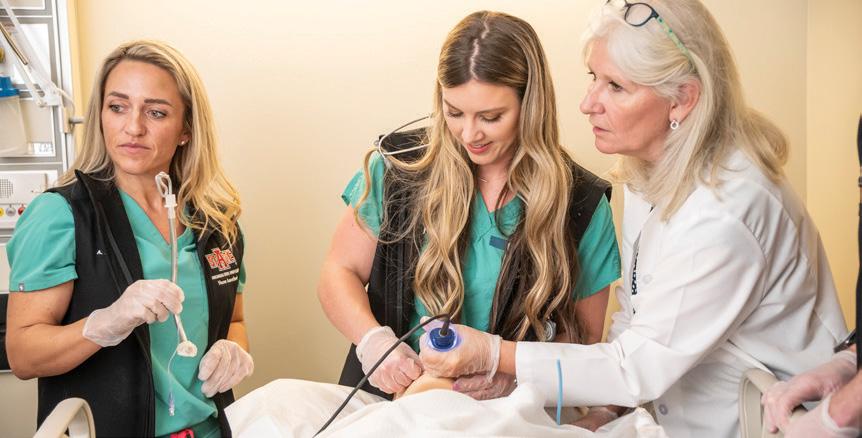
GREAT MINDS WILL TEACH AND GUIDE YOU. Our faculty are at the top of their fields. They are the researchers, educators, innovators and problem-solvers who seek solutions to some of society’s most pressing problems.
BIG HEARTS WILL SUPPORT AND INSPIRE YOU. A-State faculty go above and beyond to support students, helping them develop professional networks, find internships, and secure jobs.
Go to: Visit.AState.edu to schedule your campus visit today!











PUBLISHER Brooke Wallace
COLLEGE GUIDE EDITOR Caleb Patton
CONTRIBUTING WRITER
Riley Hope
CREATIVE DIRECTOR
Mandy Keener
ART DIRECTOR
MIKe Spain
DIRECTOR OF ADVERTISING/ SPECIAL PUBLICATIONS PUBLISHER
Brooke Wallace
ACCOUNT EXECUTIVES
Terrell Jacob
Kaitlyn Looney
Wendy Hickingbotham
ADVERTISING TRAFFIC MANAGER
Roland R. Gladden
DIGITAL
Lyndsey Huddleston
DIRECTOR OF
Wythe Walker
EVENTS DIRECTOR
Donavan Suitt
IT DIRECTOR
Robert Curfman
CIRCULATION DIRECTOR
Anitra Hickman
CONTROLLER
Weldon Wilson
BILLING/COLLECTIONS
Charlotte Key



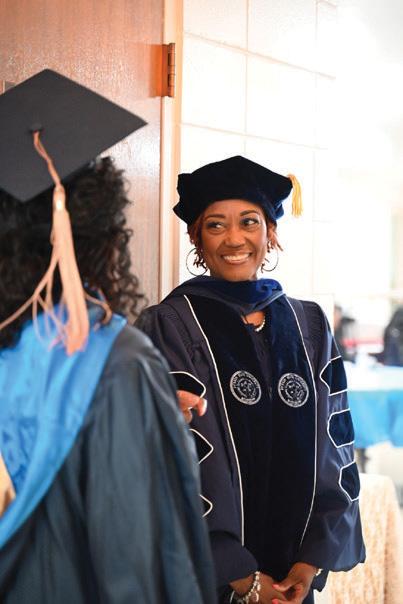


As you navigate the exciting, yet sometimes overwhelming, path of high school, a significant question likely looms large: What comes next? For many, the answer immediately turns to college. But in an era of rising tuition costs and evolving job markets, a crucial question arises: Is college worth it? For high school students considering their future, understanding the enduring benefits of a college degree is more important than ever.
One of the most tangible benefits of a college degree is the increased earning potential. For decades, a college education has been a gateway to higher salaries, and this trend continues. Recent data, as highlighted by researchers Richard Fry, Dana Braga and Kim Parker at the Pew Research Center, show that while some individuals without a four-year degree are seeing increased wages and wealth, the earning gap between those with and without degrees persists. College graduates, both men and women, consistently see higher overall incomes and more substantial wage growth over time, leading to greater financial stability and more opportunities throughout their careers. Michael Collins, a contributor for Forbes, notes that on average, a four-year degree offers a "positive return on investment," meaning college generally pays off.
Beyond the immediate financial gains, a college degree equips you with a robust set of skills highly valued in today's workforce. College fosters critical thinking, problem-solving, analytical reasoning and effective communication. These are not just academic exercises; they are essential abilities for navigating complex challenges in any field. A Pew Research Center survey confirms this, with a majority of four-year college graduates reporting that their education provided them with the crucial skills needed for a well-paying job. You'll learn how to learn, adapt and innovate, making you a more versatile and attractive candidate to employers.
A college degree often opens doors to a wider array of career opportunities and advancement. Many professions, especially those with higher salaries and greater responsibilities, explicitly require a bachelor's degree. According to an
analysis by the Burning Glass Institute, about 25% of all jobs require a bachelor's degree. These positions are also “likelier to be higher-paying jobs that come with benefit packages,” including insurance and retirement plans, as Collins points out. While trade schools and vocational training offer valuable paths, a college degree can provide a broader foundation, allowing for more flexibility to pivot between different roles or industries throughout your working life. It can also serve as a stepping stone to graduate-level studies, further specializing your expertise and opening up even more advanced career prospects.
The cost of college is indeed a significant concern for many families. However, it's crucial to view this as an investment in your future. While nearly half of Americans believe college is only worth it if student loans can be avoided, the long-term benefits often outweigh the initial expense. The increased earning potential and career mobility that come with a degree can lead to a substantial return on that investment over a lifetime. Moreover, many scholarships, grants and financial aid options exist to help make college more affordable.
The type of degree also matters. “Math-intensive majors like computer science and engineering are more likely to secure higher-paying jobs,” while
“liberal artsmajors are more than twice as likely to work in a job that does not require a college degree,” according to Collins. However, a liberal arts degree can still be valuable, though it might take longer to secure a job with a salary befitting a college graduate. Socioeconomic status and geographic region also play a role, with people from high-income backgrounds and certain regions experiencing higher employment rates and earnings.
While these labor market realities exist, they shouldn’t discourage you. Instead, they should inform your decisions. To maximize the benefits of college, consider taking advantage of work-based learning opportunities like internships and building a strong professional network. Research potential salaries and negotiate effectively. By being aware of labor market outcomes for individuals with your background, you can make informed choices about your major and career path to increase the potential value of your degree.
While the conversation around the value of a college degree is complex and nuanced, the evidence overwhelmingly points to its enduring benefits. For high school students contemplating their next steps, a college degree offers a strong foundation for increased earning potential, the development of essential skills, broader career opportunities and invaluable personal growth. By understanding both the general advantages and specific labor market realities, you can make informed decisions that ensure your college education is a worthwhile investment in your future.
Sources: Pew Research Center, Burning Glass Institute, Forbes Advisors

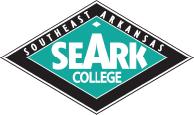







The dream of college is exciting, but the price tag? That can feel like a nightmare. Don't let sticker shock derail your aspirations! There are many paths to making college affordable, and understanding them early can save you a lot of stress. Let's break down how you can pay for your higher education.
The Free Application for Federal Student Aid (FAFSA) is the gateway to most federal and state financial aid. Fill it out as early as possible after it opens (typically October 1 for the upcoming school year). This form determines your eligibility for grants, scholarships, workstudy programs and federal student loans. Remember, the first F in FAFSA stands for “free”— you shouldn't pay to fill it out!
Grants are a fantastic form of financial aid that typically doesn't have to be repaid. The Federal Student Aid website highlights various federal grants available, including Pell Grants, Federal Supplemental Educational Opportunity Grants (FSEOG), and Teacher Education Assistance for College and Higher Education (TEACH) Grants. These are often awarded based on financial need.
Scholarships are also free money, but they’re typically awarded based on merit, talent or specific criteria. Many nonprofit and private organizations offer scholarships, sometimes
based on academic achievement, athletic talent, community service or even unique hobbies. Start searching early and apply for as many as you qualify for. High school counselors, college financial aid offices and online scholarship databases are great resources.
The Federal Work-Study Program allows you to earn money to pay for school by working part time. These jobs are often on campus and flexible, designed to fit around your class schedule. You'll earn at least the current federal minimum wage, and your total award depends on your financial need and your school’s funding level, as explained by Federal Student Aid.
Don't forget to explore additional avenues for financial assistance:
•STATE GOVERNMENT AID: Beyond federal aid, you might be eligible for financial assistance from your state. Contact your state grant agency for more information.
•COLLEGE/SCHOOL SPECIFIC AID: Many schools offer financial aid from their own grant and scholarship funds. Check your school’s financial aid website or contact their office directly.
•SPECIFIC GROUP AID: There are special aid programs for military families and potentially for international study. Other federal programs offer tax benefits for education, awards for community service with AmeriCorps and scholarships through various health service agencies.
Paying for college doesn’t have to be a solo mission. By understanding and utilizing the various financial aid options, making smart choices about your college path, and being proactive in your approach, you can turn the dream of higher education into an affordable reality. Start planning now, and you’ll be well on your way to a bright future.
For more detailed information and support, visit the Federal Student Aid studentaid.gov.

Helping to Fund Winning Futures
Are you ready to take the next step in your educational journey? Imagine your dreams of higher education becoming reality, thanks to a program designed to support you! Since 2009, the Arkansas Scholarship Lottery has raised over $1.5 billion to fund more than 822,000 scholarships awarded to students like you. These scholarships cover costs at four-year universities, two-year technical colleges and certificate programs! Learn more at MyArkansasLottery.com and make your future a winning one.

Current Academic Level: Sophomore (UCA)
Major/Minor: Business Administration/Spanish Expected Graduation Date: 2028
What originally led you to choose your current university or college?
I had always considered UCA as an option as I enjoyed the location, size and campus; however, after the introduction of the new flight academy, I knew UCA was the place for me. I have always wanted to become a pilot and the addition of the UCA Aviation Academy sealed the deal for me.
Sometimes, even with grants and scholarships, loans are still necessary. It’s crucial to understand them, as loans are money you borrow and “must pay back with interest,” as Federal Student Aid states.
These are generally your best option for loans. They often have lower interest rates, more flexible repayment plans and consumer protections compared to private loans.
These loans come from banks or other financial institutions. They typically have higher interest rates and fewer borrower protections. Exhaust all federal aid options before considering private loans.
Beyond academics, what aspect of campus life has had the biggest impact on your experience while enrolled?
Honestly, just the people on campus. All of my professors have a massive impact on whether my semester is enjoyable or not, not only with how they grade, but also with who they are as a person. I have had professors who were boring but fine, and I have had professors who were amazing, funny and truly took an interest in me; these professors changed my experience for the better. The students have also had a massive impact on me. I live off-campus, so I don’t get to experience the stereotypical “dorm life.” However, I still try to be active within the UCA community, and the students welcomed me and treated me as if I were only a few doors away, even if I lived much farther away
Are there any specific clubs, organizations or campus jobs that have significantly enhanced your college experience?
If I had to choose, I would say the Minton Commuter College. As someone who lives off campus, sometimes I feel alienated. However, the people at the Commuter College have been very helpful to me and supportive

of me to the point where I always felt “on campus” even if I wasn’t
What resources or support systems on campus have been most valuable to you?
The free tutoring labs have been the most helpful to me. When I don’t/can’t/won’t go to the professor’s office hours or just don’t/can’t/won’t go straight to them for help, the tutoring lab has always been helpful to me.
If you could give a prospective student one piece of advice or reason to choose your university, what would it be?
When we say, “Once a Bear, Always a Bear,” we mean it. Once you’re on campus as a UCA Bear, we are all one and the same. We are all Bears from the moment we enroll, and we continue to be Bears forever. We host tons of Bear events all across campus and, after you graduate, we have tons of clubs, programs and other ways for you to still be included. Student, faculty, alumni — none of it matters. Once a Bear, always a Bear.
DO GET INVOLVED
Join clubs, organizations, or intramural sports that genuinely interest you. This is a fantastic way to meet new people, make friends and feel more connected to the campus community.
DO GO TO CLASS AND PARTICIPATE
It might sound obvious, but consistent attendance and active participation in discussions will significantly improve your understanding of the material and your grades. Don't be afraid to ask questions!
DO SEEK ACADEMIC HELP WHEN NEEDED
Utilize your professor’s office hours, the campus writing center, tutoring services or study groups. Everyone struggles sometimes, and getting help early can prevent small problems from becoming big ones.
DO ESTABLISH A ROUTINE AND MANAGE YOUR TIME
Create a schedule that balances classes, studying, extracurriculars and personal time. Effective time management is crucial for staying on top of your coursework and reducing stress.
DO TAKE CARE OF YOUR PHYSICAL AND MENTAL HEALTH
Get enough sleep, eat nutritious meals and exercise regularly. Don't hesitate to reach out to campus counseling services if you’re feeling overwhelmed, anxious or depressed.
DON’T PROCRASTINATE
Pushing assignments and studying to the last minute will lead to stress, poor quality work and missed deadlines. Start early and break down large tasks into smaller, manageable steps.
DON’T ISOLATE YOURSELF
While it’s OK to have quiet time, avoid spending all your time alone in your room. Make an effort to socialize, connect with your roommates and participate in campus events.
DON’T OVERCOMMIT
It’s exciting to try new things, but taking on too many responsibilities (academic, social and extracurricular) can quickly lead to burnout. Learn to say no when you need to.
DON’T FORGET TO BUDGET YOUR MONEY
Freshman year can be expensive. Keep track of your spending, avoid unnecessary purchases and be mindful of your financial situation.
DON’T BE AFRAID TO ASK FOR HELP (FROM ANYONE)
Whether it's academic, personal or financial, there are resources on campus designed to support you. Don’t be ashamed or hesitant to reach out to advisers, RAs, upperclassmen, or family members when you need guidance or support.
Finalize financial aid and scholarships. Confirm all funding is in order.
Connect with your roommate(s). Discuss living arrangements and shared items.
Review your course schedule. Understand your classes and professors.
Order textbooks and supplies. Get materials before classes start.
Pack wisely for your dorm. Only bring what you truly need.
Familiarize yourself with campus maps. Know where your classes and key buildings are.
Research campus resources. Find the library, health center and academic support.
Set up a budget for expenses. Plan how to manage your money.
Create a personal goal list. Think about what you want to achieve.
Plan your move-in day logistics. Coordinate with family if they're helping.
FUN FACT:
More than 70% of college students report getting less than the recommended 8 hours of sleep per night, impacting everything from grades to mood. So remember, "Zzz's get degrees!"






Thinking about college? Awesome! It might seem far off, but getting a head start in high school can make a huge difference. Let's break down what you should be doing each year to set yourself up for success.
This is your year to discover! College seems distant, but now’s the time to lay a strong foundation.
•EXPLORE EVERYTHING! Try out different activities, clubs, and sports. Joe Krupnick, a college consultant, says freshman year is about “enjoying activities without the weight of final decisions.” Find what you love, even if it’s something quirky like entomology.
•GET THOSE GRADES UP! Good grades now create a strong academic foundation. If you hit a tough spot, don't be afraid to ask for help or consider a tutor. Your GPA starts now!
•THINK ABOUT YOUR FUTURE (LOOSELY): Start pondering what excites you, but keep it open-ended. What are your general ambitions? This helps guide your exploration.
•SCHOLARSHIP SNEAK PEEK: Even now, you can start looking for scholarships — that’s free money for college!
e et Yo u r Counselor
•FIND YOUR “NUCLEUS”: Krupnick suggests choosing “one or two passions to weave through various activities.” This central theme can make your college applications stand out. Think debate, sports or that quirky interest you found last year.
•DREAM BIG FOR COLLEGE: Start imagining your “fantasy” college. What are your must-haves? Don't worry about admissions filters yet; just picture your ideal environment.
•PSAT/PACT TIME: Take the PSAT if your school offers it. This helps you get a feel for the SAT and identify areas to improve.
•SUMMER ADVENTURES: Plan an exciting summer. Programs, courses, community service or independent projects can deepen your interests and boost your college prospects.
•MEET YOUR COUNSELOR: Check in with your school counselor to review your class schedule and discuss your goals. They're your guide through this journey.
•KEEP THOSE GRADES STRONG. The momentum from freshman year continues.
This is a big year where things get serious. Focus on leadership and standardized tests.
•DEEPEN YOUR NUCLEUS: Get more involved in your passions. Strive for leadership roles — president of a club, team captain or a leadership position in your community. Show your intrinsic motivation.
•TACKLE THE ACT/SAT: Ideally, aim to complete your test preparation and actual testing by the summer after junior year. These tests are different from schoolwork, so dedicated prep is key.
•BUILD YOUR COLLEGE LIST: Create a balanced list of potential colleges, including safety, target and reach schools. Consider factors like location, size and major strength.
•CAMPUS VISITS (IN SESSION): Don't wait for summer. Visit colleges when classes are in session to get a real feel for the academic and social scene.
•ASK FOR RECOMMENDATIONS: Request letters of recommendation from your junior year teachers before the end of the year. Give them plenty of time to write something impactful.
•START ESSAY BRAINSTORMING: Your experiences are building a story. Begin thinking about how you'll present yourself in your college essays.
It's “go time!” This year is all about putting everything together and meeting those crucial deadlines.
•FINALIZE YOUR COLLEGE LIST: Narrow down your list to the schools you'll apply to, making sure you have a good mix of safety, target, and reach schools.
•CRAFT YOUR ESSAYS: This is where you shine. Work on your statement and supplemental essays to showcase your uniqueness and authentic self. Ideally, you started brainstorming last summer.
•SUBMIT APPLICATIONS: Many application portals open on August 1. Be organized and aware of all requirements, essays, and deadlines for each school.
•FAFSA & FINANCIAL AID: Complete and submit your FAFSA in December to determine your eligibility for federal financial aid. Also, apply for scholarships! Keep an eye on non-federal aid requirements like the CSS Profile.
•MONITOR APPLICATIONS: Set up accounts for each college's portal to ensure all your materials have been received.
•KEEP THOSE GRADES UP! Your senior year grades still matter.
•REVIEW AND DECIDE: Once acceptance letters and financial aid packages arrive (typically March-April), review them carefully. By May 1, make your final decision, submit your deposit and get ready for orientation.
•THANK YOUR SUPPORTERS: Don't forget to thank your teachers, counselors, family, and friends who helped you along the way.
Chicago Parent, Dr. Joe Krupnick, The Krupnick Approach




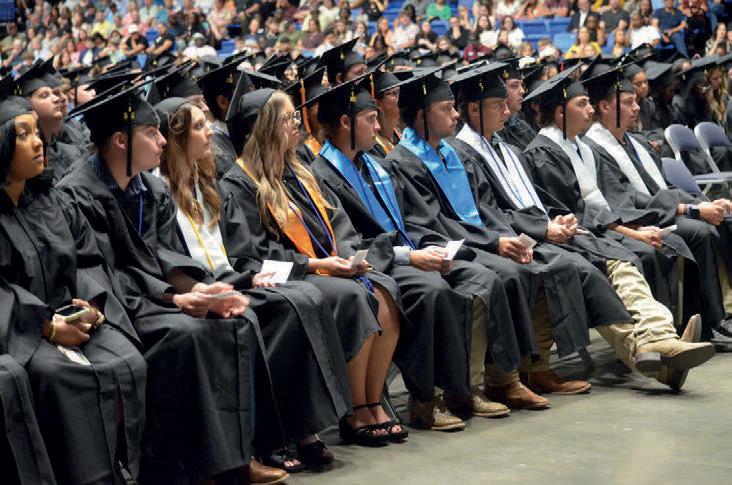



Choosing between a four-year university and a two-year college involves considering various factors, including cost, academic focus and campus experience. Here’s a comparison based on data for Arkansas institutions:
TUITION AND MANDATORY FEES
(2024-25 Enrollment)
Includes tuition and fees, room and board, books and supplies, transportation, and personal expenses.
$8,879 (Average In-State)
$27,146/year
(In-State Arkansas, Public Average, 2024-25 Academic Year)
PRIMARILY OFFER BACHELOR'S DEGREES. Many also offer master's degrees and doctoral degrees (Ph.D., Ed.D., J.D., M.D., etc.). Some four-year institutions may also offer associate's degrees. These degrees prepare students for a wide range of careers and often serve as prerequisites for graduate studies.
$4,830 (Average In-State)
$17,439/year
(In-State Arkansas, Public Average, 2024-25 Academic Year)
PRIMARILY OFFER ASSOCIATE DEGREES AND CERTIFICATES.
ASSOCIATE OF APPLIED SCIENCE (A.A.S.): These programs are typically career-focused, designed to prepare students directly for employment in specific technical or vocational fields (e.g., nursing, automotive technology, welding). They generally have fewer general education requirements than A.A. or A.S. degrees.
TECHNICAL CERTIFICATES AND CERTIFICATES OF PROFICIENCY: These are shorter programs designed to focus on specific skills for immediate workforce entry.
CURRICULUM
A substantial portion of the first two years is dedicated to foundational courses across various disciplines like humanities, social sciences, natural sciences and mathematics. This provides a broad educational base. The latter half of the program focuses deeply on a chosen field of study (the major), with advanced coursework and often opportunities for electives, internships or research. Students may also pursue a "minor" in a secondary field of study.
HOUSING: Diverse on-campus housing options, including traditional dorms, suite-style and apartment-style living, often with various amenities like private bathrooms, laundry facilities and study lounges.
DINING: Multiple dining halls, cafes and campus eateries.
RECREATIONAL FACILITIES: Large student unions, fitness centers, swimming pools, sports complexes and intramural sports programs.
STUDENT LIFE: A vast array of student organizations, clubs, Greek life, athletic teams (NCAA), cultural events and performing arts venues.
ACADEMIC SUPPORT: Extensive libraries, tutoring centers, writing labs, career services and research opportunities.
HEALTH CARE: On-campus health clinics and counseling services.
These programs typically take two years of full-time study (around 60-72 credit hours). The curriculum breakdown depends on the degree type, such as a transfer degree, making it easier to transfer credits, or a technical degree, the majority of coursework focused on hands-on, practical skills directly applicable to a specific industry or job role.
HOUSING: While less common than at four-year universities, some two-year colleges, like North Arkansas College, offer on-campus housing, often in apartment-style units with included utilities and amenities like study lounges and free laundry.
STUDENT SUPPORT: Academic advising, career services and disability services are typically available.

RECREATIONAL AND STUDENT LIFE: May offer intramural sports, smaller fitness facilities and a more limited number of student clubs and organizations compared to larger universities. The focus is often more on academics and vocational training. Many students commute.







pletely covered, being an RA or other scholarships, the benefits are great. The process was very confusing at first because I am a first-gen student, so I didn’t have much help, and I had to figure it out myself.
Beyond academics, what aspect of campus life has had the biggest impact on your experience while enrolled?
Probably housing and clubs because of the impacts caused by both. I have changed a lot as a person. Housing has helped me out to where I can start to live on my own, to prepare for the real world, and make many friends and new connections. Clubs such as SGA have helped me develop more leadership skills and a better understanding of how the government is supposed to


work. Future educators have helped me by getting my foot in the door as a teacher by reading to first-graders and creating a lesson plan for the event.
What’s your favorite tradition or unique experience at your university?
I think my favorite thing at ASUB is the tree lighting cere -
students of the college and people to snacks, drinks, a chance to celebrate with many different me happy to see that the college
Are there any specific clubs, organizations or enhanced

There have been so many, being the first-year vice president for SGA and now I’m the SGA president has helped me grow as a leader, and the projects I completed within my first year, such as the licensed professional counselor and the light proposal. Getting to work with future educators and reading to first-graders helped me realize that teaching is what I want to do. Working for the one-stop as an admission ambassador and a resident assistant has been amazing. All of these opportunities have enhanced my college experience.
Looking back on your time so far, can you summarize your experience in three sentences? My experiences here at ASUB have been nothing short of amazing. I have learned many things inside and outside the classroom. I have also become more confident, and I have changed a lot this year as a person.

Computer science equips students with problem-solving skills through coursework in databases, computer ethics, theoretical computing and digital storytelling, preparing them for pivotal roles in the advancement of technology.
ENTRY-LEVEL EDUCATION: Bachelor’s Degree
JOB GROWTH OUTLOOK 2024-2032: 23%
JOB DESCRIPTION: Computer science professionals design and optimize software, applications, networks and computing infrastructure. Their roles involve writing, testing and maintaining code; identifying and troubleshooting issues; ensuring functionality and security; and contributing to new technological innovations across various industries. Specific roles can include software administrators, computer hardware engineers, database administrators, network architects, systems analysts, security analysts and web developers.
MEDIAN PAY (NATIONALLY): $136,620
EDUCATION FIELD: Computer and Information Technology

Focuses on the administrative aspects of health care systems, providing comprehensive training in organization, leadership and integration to effectively manage health care units, establishments or specific clinical domains.
ENTRY-LEVEL EDUCATION: Bachelor’s Degree
JOB GROWTH OUTLOOK 2024-2032: 28%.
JOB DESCRIPTION: Health care administrators, also known as medical and health services managers, plan, direct and coordinate medical and health services. Their duties involve developing goals and objectives related to efficiency and quality of healthcare services, ensuring compliance with laws and regulations, preparing and monitoring budgets, managing finances, recruiting and supervising staff, creating work schedules and maintaining records. They may manage an entire facility, a specific clinical area or a medical practice.
MEDIAN PAY (NATIONALLY): $104,830
EDUCATION FIELD: Health Administration and Management

Business administration programs immerse students in the principles of business theory, leadership dynamics and ethical decision-making, em phasizing practical application to enhance organizational efficiency and daily company operations.
ENTRY-LEVEL EDUCATION: Associate’s Degree
JOB GROWTH OUTLOOK 2024-2032: 8%
JOB DESCRIPTION: Business administrators oversee the general operations of an organization or department. This includes supporting and oversee ing teams, problem-solving, developing and implementing plans, meeting goals, managing budgets, establishing procedures and policies, ana lyzing market trends, hiring and training staff, negotiating contracts and ensuring the smooth and efficient operation of a business. Graduates are well-positioned for roles such as business operations specialists, general managers, operations managers and management analysts.
MEDIAN PAY (NATIONALLY): $76,000
EDUCATION FIELD: Business and Management

Focuses on equipping students with the skills to optimize the movement of products from suppliers to consumers, encompassing areas like procurement, distribution and warehouse management.
ENTRY-LEVEL EDUCATION: Bachelor’s degree
JOB GROWTH OUTLOOK 2024-2032: 18%
JOB DESCRIPTION: Professionals in logistics and supply chain management streamline operations to ensure products are efficiently sourced, produced, stored and delivered. This involves managing inventory, optimizing transpor tation routes, negotiating with suppliers, overseeing distribution centers and analyzing data to improve overall supply chain efficiency and resilience. Career opportunities include supply chain analysts, logisticians, distribution managers, logistics analysts and purchasing agents.
MEDIAN PAY (NATIONALLY): $77,520
EDUCATION FIELD: Business and Management, Transportation and Logistics


• University Transfer Curriculum
• Nursing
• Emergency Medical Technician
• Health Information Technology
• Cybersecurity
• Entrepreneurship
• Business
• Airframe and Powerplant Technology
• Culinary Arts
• Welding
• Automotive Technology
• HVAC-R
• Advanced Manufacturing
• Diesel Technology
• CDL Training
• Continuing Education
• Specialized Training for Business and Industry
• Many More!



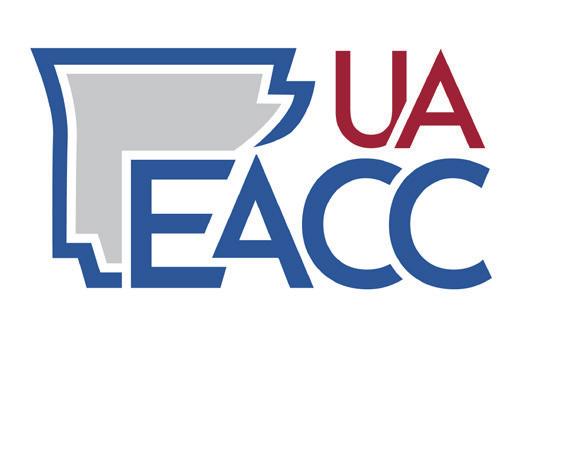
Yes, it can be about who you cheer for on Saturdays. And it’s certainly about the degree you come away with. But it can be so much more.
It can be where you discover your calling, meet lifelong friends, grow in your faith and gain the confidence to pursue your dreams. At Ouachita, you don’t have to do it alone. You’ll find your place and your people anywhere - in the classroom, on a hike, at a table in the cafeteria, in the stands at a game or in a pew during worship.
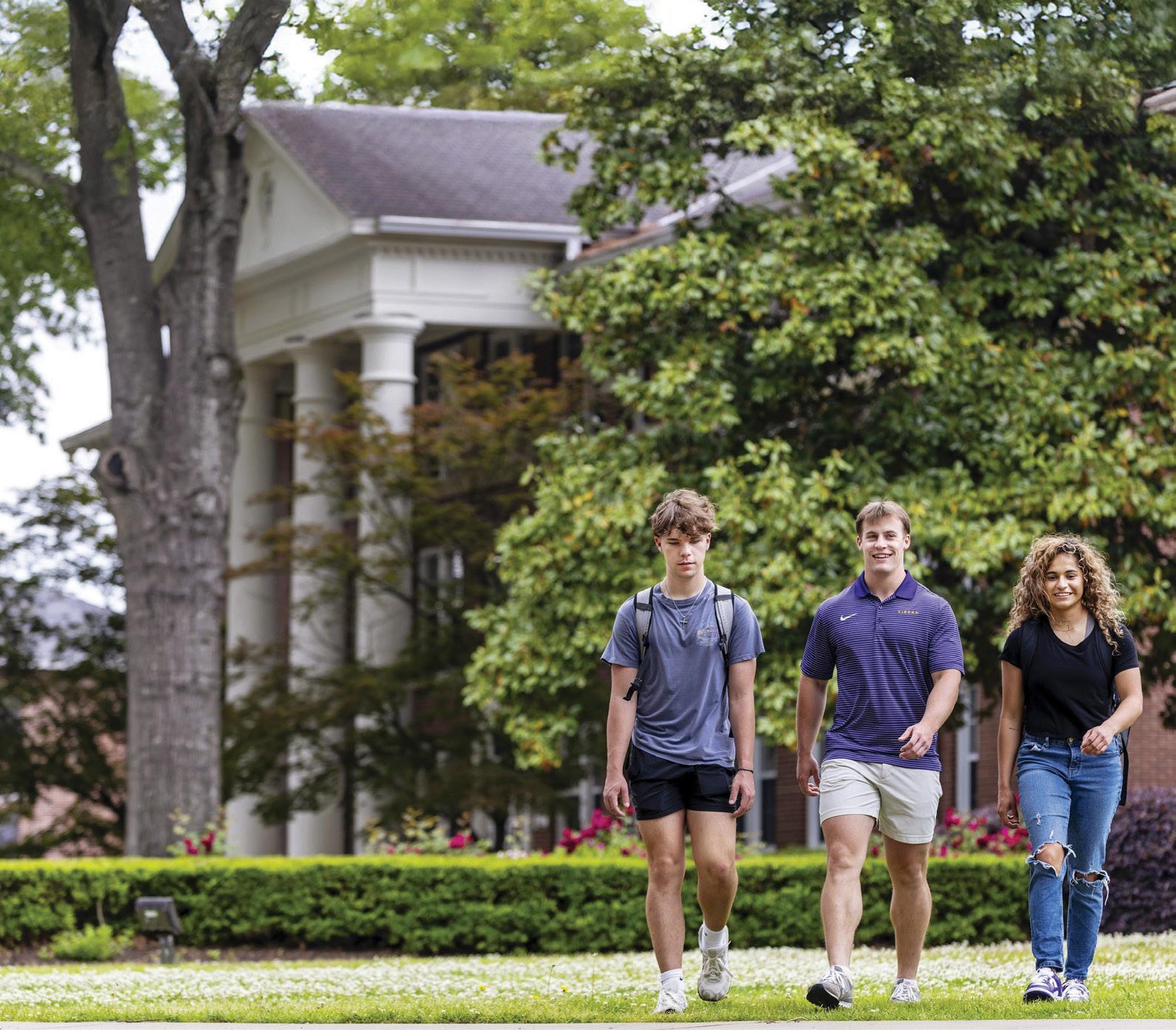

Economics degrees involve using mathematical techniques and data analysis to study economic principles and theories, crucial for predicting market trends and informing strategic planning.
ENTRY-LEVEL EDUCATION: Master’s Degree
JOB GROWTH OUTLOOK 2024-2032: 6%
JOB DESCRIPTION: Economists analyze the production, distribution, and consumption of goods and services, applying economic models and data to understand market behavior, predict trends and inform policy. They work in various sectors, including finance, government and research, often in roles such as data analysts, market research analysts, financial risk analysts and compensation and benefits managers.
MEDIAN PAY (NATIONALLY): $113,940
EDUCATION FIELD: Social Sciences, Business and Management

Management degrees focus on the leadership of teams and the dynamics of interpersonal relationships within organizations, distinguishing themselves from broader business administration by emphasizing the human elements of business operations.
ENTRY-LEVEL EDUCATION: Bachelor's Degree
JOB GROWTH OUTLOOK 2024-2032: 9%
JOB DESCRIPTION: Managers are responsible for overseeing day-to-day operations, leading and motivating teams, making strategic decisions, managing budgets and implementing plans to achieve organizational goals. They often specialize in negotiation and dispute resolution, crucial skills for corporate environments. Graduates often find career opportunities as project managers and managers in the personal services, entertainment and recreation sectors.
MEDIAN PAY (NATIONALLY): $107,360
EDUCATION FIELD: Business and Management
Get a quality Christ-centered education on campus, in beautiful Northwest Arkansas, or online with one of JBU’s 50+ majors and 14 graduate programs.

The future you starts at JBU.

Choosing the right college is one of the most important decisions a student will ever make. Many factors go into the process of choosing an institution of higher learning, from quality of educational programs to oncampus amenities to employability after graduation.
All of the participating colleges and universities in the 2025 Arkansas Times College Guide have their own outstanding qualities, engaged faculty and network of alumni. We have prepared profiles of them here to give you, the aspiring collegian, a small taste of what they offer. We’re sure you’ll agree Arkansas enjoys a multitude of outstanding educational opportunities to fit every learning style, field of study or career aspiration. Without further ado, may we present for your consideration these fine Arkansas institutions of higher learning.
69 Arkansas State University
70 John Brown University
71 University of Arkansas
72 University of Arkansas Little Rock
73 University of Arkansas-Pulaski Technical College
74 University of Central Arkansas
75 Arkansas Colleges of Health Education
75 Arkansas State University-Beebe
76 Arkansas State University Three Rivers
76 University of Arkansas-East Arkansas Community College
77 University of Arkansas Grantham
77 Hendrix College
78 Ouachita Baptist University
78 Southeast Arkansas College

Arkansas State University, founded in 1909, is the second-largest university in the state. A Carnegie Research 2 university, A-State is large enough to prepare graduates to achieve at the highest levels, but small enough for students to know their instructors on a firstname basis.
A-State is home to the first osteopathic medical school in Arkansas, the NYIT College of Osteopathic Medicine at Arkansas State, and is the only institution in the state where a student can progress from freshman to physician on one campus. A-State’s B.S. to D.O. pre-professional pathway allows qualified students to enter the D.O. program in just three years, reducing the total cost of attendance.
Arkansas has among the lowest ratios of vets to pets in the U.S. and a dramatic need for large animal veterinarians. As an integral part of the agricultural fabric of the greater Delta region, Arkansas State will open the state’s first public College of Veterinary Medicine, providing the opportunity for students to chase their dreams without leaving Arkansas.
Soon, Arkansas State will become the only university in Arkansas to operate both a medical and veterinary school, a biosciences institute, an international campus and the state’s largest graduate school.
A-State has more than 160 major fields of study offered by 10 colleges at the doctoral, specialist, master’s, bachelor’s and associate degree levels.
The university continues to expand its research agenda through various venues and institutes. The Arkansas Biosciences Institute at Arkansas State conducts research projects on rice, the state’s most important crop. Developing rice varieties that thrive in warming climates and finding ways to use plants to create new medicines and medical materials are just two of the major research projects underway.
Red Wolves aren’t just a mascot; they are also the subject of research and preservation programs by Arkansas State University. The institution is a national repository for DNA and other essential materials related to the American Red Wolf, listed as the most endangered canine species.

In addition to award-winning classroom and field instruction, Arkansas State University is a pioneer in online learning. Its online degree program, A-State Online, is the largest online provider in the state. While the majority (74%) are graduate students, more than 1,500 are pursuing bachelor’s degrees.
The school offers over 50 undergraduate degree and certificate options, conducted 100% online to allow maximum flexibility to meet students’ schedules.
A-State makes getting a college degree easier than ever with a streamlined admissions process and multiple start dates throughout the calendar year. Plus, with university-approved credit for prior learning, students can gain academic credit for work experience, employer training programs, military service, independent study and community service. Combined with shorter courses (seven weeks versus nine weeks), this helps students complete their degrees in record time without sacrificing quality teaching or challenging coursework.
Students will find over 150 clubs and organizations at A-State, including fraternity and sorority life, leadership groups, interest clubs and more. With a diverse student body from across the nation and around the world, and more than 100,000 alumni, A-State is the home of the Red Wolves, a Bowl Championship Series Division I athletic program with numerous Sun Belt Conference titles across its 16 NCAA varsity sports. A-State also sponsors nationally competitive club sport teams like rugby, softball, competitive cheer and dance and Esports that have earned national titles or national runner-up titles in recent years.
Arkansas State is committed to easing the financial burden of higher education for Arkansas families and keeping the total cost of attendance as low as possible. More than 80% of students receive some sort of financial aid, enabling them to attend A-State.
The newly reconfigured A-State Promise Plus scholarship will bridge the tuition gap for Arkansas families with an adjusted household income of $70,000 or less, covering all remaining tuition and fees after federal and state aid has been applied. In addition, the scholarship provides a $2,500 housing scholarship that increases
for the sophomore through senior year.
A-State also offers a variety of merit-based and out-of-state scholarships based on test scores and high school GPA.
For more information on these or other financial aid and scholarships, visit AState.edu/Scholarships.
• In 2023, A-State announced a new record fall enrollment of 14,903, a 6% increase from the previous year. A-State grew across most categories, but was notably up in first-time, first-year students and on-campus residents.
• A-State is a six-time recipient of the Higher Education Excellence in Diversity award, the only university in Arkansas to be recognized.
Northeast Arkansas has become the country’s number one steel-producing region with more than 20 steel-related companies and another $3 billion in planned facility expansion. The A-State Center for Advanced Materials and Steel Manufacturing will play a critical role in providing the research, process improvement and workforce development to support this thriving industry.
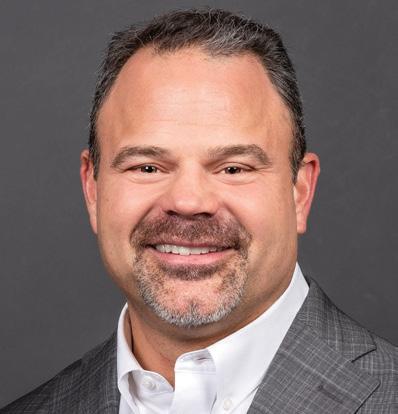
CHANCELLOR’S MESSAGE
“I am committed to continuing the student-centered success of Arkansas State and forging strong connections between higher education, private business, non-profits and government to create lasting improvements in our communities, state and nation.”
A CHRIST-CENTERED EDUCATION IN THE HEART OF ARKANSAS
Siloam Springs | 479-524-9500 | jbu.edu
John Brown University is a private, interdenominational Christian university nestled in Siloam Springs. Founded in 1919, JBU offers a Christ-centered education that equips students for academic excellence, personal growth and lifelong service.
JBU boasts a diverse range of undergraduate programs, with popular majors including Nursing, Psychology, Construction Management, Graphic Design, Family and Human Services, Engineering, Kinesiology, Computer Science and Biology. Looking for something unique? JBU offers innovative programs in Professional Flight, Artificial Intelligence, Entrepreneurship & Innovation, Criminal Justice, Cybersecurity, Intercultural Studies and Bible & Ministry.
The fastest-growing majors at JBU reflect the current job market trends — Criminal Justice and Computer Science. Students seeking extra support can access comprehensive tutoring services, while those with postgraduate aspirations are well-served by the university’s graduate school programs. JBU even offers study-abroad opportunities, allowing students to broaden their horizons and gain valuable international experience.
toilet paper after the Golden Eagles score their first home basketball game basket.
JBU prioritizes the well-being of its students. The university offers a comprehensive health center with a variety of services, including wound care and doctor referrals. Mental health services are also available with the Student Counseling Center, providing free counseling sessions and low-cost options for continued support. Campus security offers 24/7 security patrols, safety rides, self-defense training and various other initiatives to ensure a safe and secure environment.

“JBU is a community of faith-oriented, Christ-like people who love all, serve others and chase after God. I feel overwhelmed with unity in this JBU community, and it’s amazing!” — Darissa Ennes, sophomore, Nursing
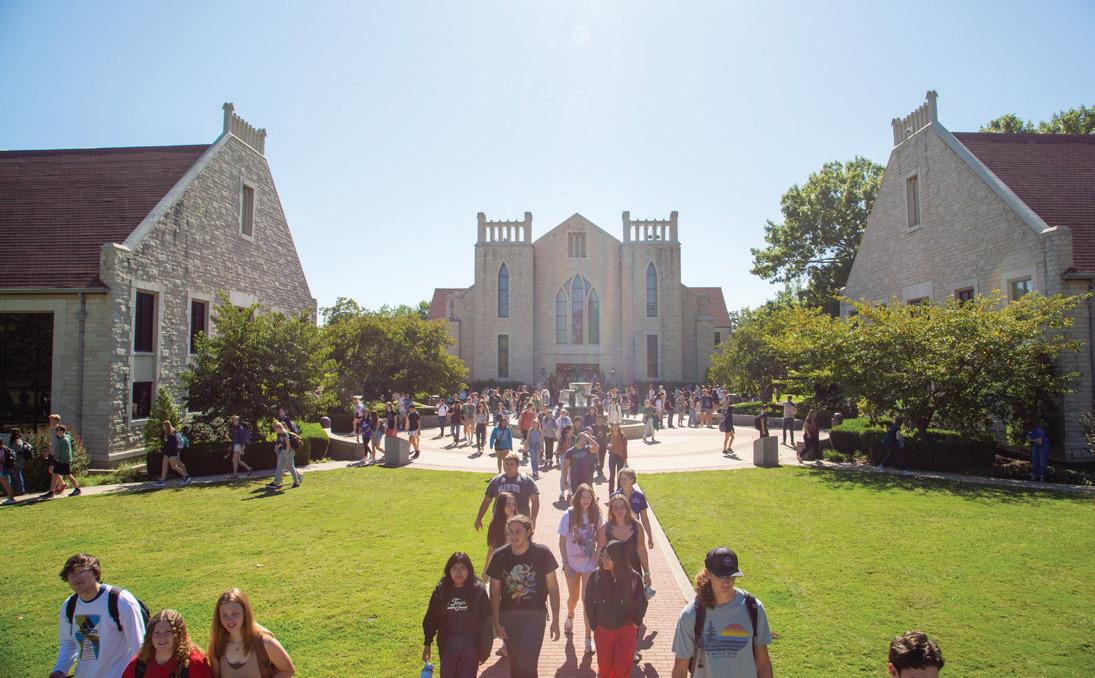
JBU is committed to making a quality education accessible to all deserving students. A staggering 99% of students receive financial aid, making tuition more manageable. JBU offers a variety of scholarships, including the Presidential Scholarship ($30,000 annually), Chancellor’s Scholarship ($15,000 annually) and Merit-based Scholarships for Music & Theatre majors and Art students.
JBU fosters a thriving campus community where students can connect, grow and have fun. With over 23 student clubs and organizations, there’s something for everyone, from academic honor societies to religious groups and special interest clubs. On-campus housing provides a supportive living environment, while the absence of a Greek system promotes inclusivity and a strong sense of community.
Students can stay active through intramural athletics and enjoy a variety of campus events. One of the most beloved JBU traditions is the October “World Famous Toilet Paper Game,” where fans unleash a flurry of
JBU competes in the Sooner Athletic Conference (NAIA Division 1) with a strong showing across men’s and women’s sports. Recent athletic achievements include the Women’s Soccer five-peat conference championship title, Women’s Track and Field’s first SAC championship and the Esports Valorant squad capturing the ECAC Championship.
JBU graduates are well-prepared for successful careers. The university offers career placement services and facilitates access to off-campus internship opportunities. Within just six months of graduation, 94% of JBU students are employed, enrolled in graduate school or serving in the military. JBU graduates command impressive starting salaries, with 57% of full-time employed students making $51-$100K. Nursing, Engineering, Computer Science and Construction Management are among the top job fields in high demand for JBU graduates.
• JBU is the only Christian university in Northwest Arkansas, offering a faith-based education that integrates academics and spiritual growth.
• JBU has been recognized as Arkansas’s No.1 private university by The Wall Street Journal 2024 College Rankings.
• JBU just added a program in professional flight for students interested in an aviation career.
• Students benefit from close relationships with professors who are dedicated to their academic and personal development.
• JBU offers a variety of scholarships and financial aid packages, making a Christ-centered education attainable for all.
• JBU is the first college in Arkansas to offer a full bachelor’s degree in Artificial Intelligence.
“What I love most about JBU is being able to create healthy relationships with students and staff and improve my walk with Christ. JBU has helped me better understand the impact of community, that having a strong bond of believers to talk and pray with is essential to developing your relationship with God.” — Garrett Cote, junior, Film
“JBU offers great career resources, internships and connections with alumni to help students transition smoothly into the working world after graduation. It’s exciting to see how they prepare students for life beyond college.” — Chloe Cloud, recent graduate, Integrated Marketing & Communications.
“Don’t be afraid to step outside your comfort zone. Try new things, meet new people and challenge yourself academically. JBU provides a safe and supportive environment to grow and learn.” — Kamille Fermin, junior, Marketing and Management.

“A Christian liberal arts education prepares students to serve God throughout their lives. They gain a deeper appreciation of the good things in life and a deeper concern to address the brokenness in life. They are trained to be excellent in their chosen profession, but they are also educated to speak more clearly, to write more effectively, to understand complex issues and to care more deeply.”
The home of the Razorbacks, the University of Arkansas is one of the nation’s top public research universities. Dedicated to Arkansas since 1871, the U of A offers a dynamic blend of spirited campus life, nationally ranked academic programs and endless opportunities to learn, grow and lead.
Nestled in the scenic Ozark mountains, Fayetteville consistently ranks among the nation’s best places to live and serves as a vibrant hub for arts, culture and entertainment. Northwest Arkansas is home to one of the state’s most popular entertainment districts, along with breathtaking natural beauty and some of America’s best locations for hiking, biking and water fun.
With more than 200 undergraduate degree programs to choose from, students can explore their interests and discover new passions. Nursing, Finance, Marketing, Psychology and Engineering are five of the most popular majors. Academic opportunities extend beyond campus, with study abroad programs offered in more than 50 countries across six continents.
The U of A Honors College brings together a community of more than 4,000 high-achieving students and 700 top faculty members, creating an environment that encourages academic excellence and a passion for learning. For first-generation and high-financial-need students, the Path Program provides additional support through scholarships, mentorship, academic advising and a living-learning community to promote academic success.
The U of A is removing financial barriers and opening more doors for students with expanded scholarships and new affordability initiatives. Since 2019, scholarship funding for Arkansas students has grown by $7 million. Ninety-eight percent of in-state freshman students from Arkansas who applied for a scholarship received an award.
The university recently launched the Land of Opportunity Scholarship, a $200 million initiative that supports undergraduate students from Arkansas who exhibit strong academic ability and high financial need. In addition to financial assistance, recipients will receive holistic support including mentorship, academic coaching, financial planning and career readiness aimed at improving retention and graduation outcomes. A statewide internship network will also connect scholarship recipients with real-world experience, strengthening Arkansas’ workforce and directly benefiting the state’s business community.
The Arkansas Transfer Scholarship makes it even more

affordable for students graduating from 2-year colleges within the University of Arkansas System to continue their education in Fayetteville, at the same 2-year tuition rate they paid at their previous institution.
Campus life at the U of A is designed to help students feel at home, get involved and build lasting connections. With more than 380 registered student organizations, including cultural, religious and special interest groups, students can easily find their community. The university also offers more than 30 intramural sports, such as flag football, basketball, indoor soccer, sand volleyball and track meets.
Incoming freshman students jump-start their campus experience and connect with other students through programs such as New Student Orientation or Lead Hogs, which introduce students to leadership and campus involvement. Weekly events like Cardinal Nights offer fun, alternative programming, and the annual Springtime of Youth Festival is a highlight of the spring semester.
With 20 residence halls on campus, students enjoy the convenience of walking to classes, labs, dining and campus events in just minutes, making it easy to stay connected and engaged.
Traditions run deep at the U of A and create a strong sense of pride and belonging. One of the most unique traditions is Senior Walk, a campus path of sidewalks engraved with the names of more than 200,000 Razorback graduates. These alumni symbolize the individual successes and collective impact of more than 150 years of difference-makers determined to build a better world.

Each freshman class is also encouraged to participate in A-Week, held right after movein, which features events designed to ease the transition from high school to college with programming focused on student success inside and outside of the classroom experience.
New students can also learn all the U of A’s beloved traditions, including the Fight Song, school chants, and most importantly, how to
call the Hogs, at the New Student Pep Rally, which ends with the entire incoming class forming a giant “A” on the football field for a class photo.
The U of A is not only preparing students for successful careers it prepares them to lead. TIME Magazine continues to recognize the university as one of the Best Colleges for Future Leaders, highlighting Razorback alumni whose impact will continue to help drive Arkansas forward. With bold goals, a deep commitment to our land-grant mission and a campus community united in purpose, the University of Arkansas is reaching higher dedicated to Arkansas and determined to build a better world.
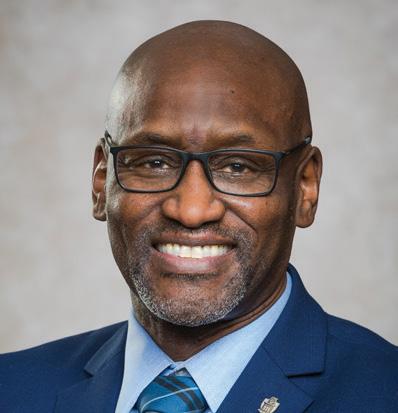
“No matter where you’re from — a big city, a small town or somewhere in between — you’ll find your place at the University of Arkansas. You’ll learn from world-class faculty whose top priority is your success, while being supported every step of the way with free tutoring, supplemental instruction and career coaching. You’ll also get the full SEC experience, including clubs and events for every interest and one of the most electric college sports environments in the nation. With a vibrant campus community and an unbeatable mix of academic excellence, affordable tuition, record scholarship funding and post-graduation success, the U of A delivers opportunity and value at every turn. Come find your place — and build your future — here on the Hill.”
Charles Robinson University of Arkansas

Right in the heart of Arkansas’s capital city, the University of Arkansas at Little Rock stands as a dynamic four-year university, ready to launch your future. Whether you’re after top-tier academics, a vibrant campus life or incredible opportunities for hands-on learning, UA Little Rock is where your journey truly begins. Get ready to discover what makes a Trojan.
Thinking about college costs? UA Little Rock is committed to making higher education accessible. For in-state students, tuition and fees are approximately $10,185.26 per academic year. Out-of-state students can expect around $22,869.70 for tuition and fees. Remember, these figures don’t include room, board or books, which are estimated at $1,800 per year for books and supplies.
A real game-changer is the “Half-Off Scholarship,” covering up to 50% of in-state tuition and fees for incoming freshmen, maxing out at $5,000. You don’t even need to apply if you meet the requirements! Then there’s the Trojan Guarantee, a scholarship ensuring most Arkansans can achieve a zero-cost bachelor’s degree by covering remaining tuition and mandatory fees after other aid. It’s automatically awarded to eligible full-time freshmen.
UA Little Rock offers incredible financial aid opportunities, making a degree more affordable than you might think. Their academic scholarships are substantial:
• The Chancellor’s Academic Distinction Scholarship offers $5,000 for tuition/fees plus $5,000 for on-campus housing (for students with a minimum 4.0 GPA and 20 ACT/1039 SAT).
• The Provost’s Academic Excellence Scholarship provides $4,000 for tuition/fees and $4,000 for housing (with a minimum 3.75 GPA and 20 ACT/1039 SAT).
• The Dean’s Academic Merit Scholarship gives $4,000 for tuition/fees and $4,000 for housing (with a minimum 3.5 GPA and 20 ACT/1039 SAT).
Plus, dozens of private and need-based scholarships are available, so be sure to explore all your options.
UA Little Rock boasts phenomenal on-campus housing with options for every preference. With five distinct housing choices, you’ll find everything from private rooms and suites to apartments and pod-style living. Residents enjoy full kitchens, laundry facilities, included Wi-Fi, dedicated study rooms and even an outdoor pool.

• East Hall: Double occupancy rooms for all students.
• West Hall: Double occupancy rooms specifically for freshmen.
• Commons Apartments (North and South Hall): Two- and four-bedroom apartments ideal for upperclassmen, scholars and athletes.
• University Village Apartments: Two- and four-bedroom apartments, perfect for upperclassmen, international students and athletes.
At UA Little Rock, you’re set up for success. You’ll learn from dedicated faculty in small classes, ensuring you get personalized attention. UA Little Rock proudly maintains an impressive 15:1 student-to-faculty ratio across campus, meaning more direct interaction with your professors.
Popular programs span a wide range of in-demand fields, including Nursing, Psychology, Biology, Business (with majors like Management, Accounting and Finance), Social Work, Criminal Justice, Computer Science, Education, Engineering and Construction Management.
UA Little Rock combines standout academics with high-impact opportunities to help you lead in your field from day one.
• Cybersecurity: This cutting-edge program is a state leader, with graduates already making a significant impact in defending the digital world.
• Nursing: The nursing program uses advanced simulation technology, preparing students for real-world medical challenges with hands-on experience.
• The Donaghey Scholars Program: Though not an academic program, it is ranked among the nation’s best honors programs. Donaghey Scholars receive incredibly generous financial aid, unparalleled internship opportunities (think NASA Stennis Space Center!), and study abroad experiences. These graduates are highly sought after by top organizations like Baptist Medical Center and Arvest.
UA Little Rock is deeply focused on student success, helping you reach that triumphant graduation day. The fall-to-fall retention rate for the latest cohort stands at a strong 76%, showing that students find their fit and thrive here. The overall graduation rate is 42%.
College isn’t just about classes; it’s about finding your community and making memories. With nearly 100 clubs and over 800 events annually, there’s always
something happening. Last year alone, over 6,000 students participated in campus activities. You can easily find clubs at the Involvement Fair or through the campus app, or even start your own!
UA Little Rock boasts a vibrant Greek life scene with four governing councils, including various fraternities and sororities. Interestingly, 48% of Greek members are also involved in another student organization, showing a strong spirit of engagement.
UA Little Rock’s campus culture is welcoming, inclusive and driven by purpose. It’s a place where students balance academics with life commitments, fostering deep respect and support. You’ll find endless opportunities to connect, lead and collaborate — from student organizations to cheering on the Trojans. Many clubs engage in community service, and you can also volunteer on campus at the campus garden, learning commons or the Trojan food pantry.
UA Little Rock is more than just a university; it’s a launchpad for your future. With its diverse programs, dedicated faculty, vibrant campus life and unwavering commitment to student success, you’ll find everything you need to thrive in the heart of Arkansas.
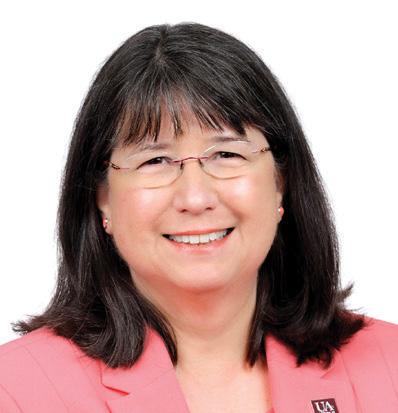
CHANCELLOR’S MESSAGE
“As a metropolitan research university in Arkansas’s largest city, UA Little Rock capitalizes on its location to develop partnerships in every key economic sector and builds those connections into the student experience. Students will find a wide variety of internships, field work, clinical practice and client-based project opportunities that bring what they learn in the classroom to life. By offering a large number of merit- and need-based scholarships, we provide access to an affordable, quality education for a diverse student body. UA Little Rock is more than its location; it’s a place where you can find your unique sense of belonging and realize your full potential.”
Dr. Christina S. Drale University of Arkansas at Little Rock
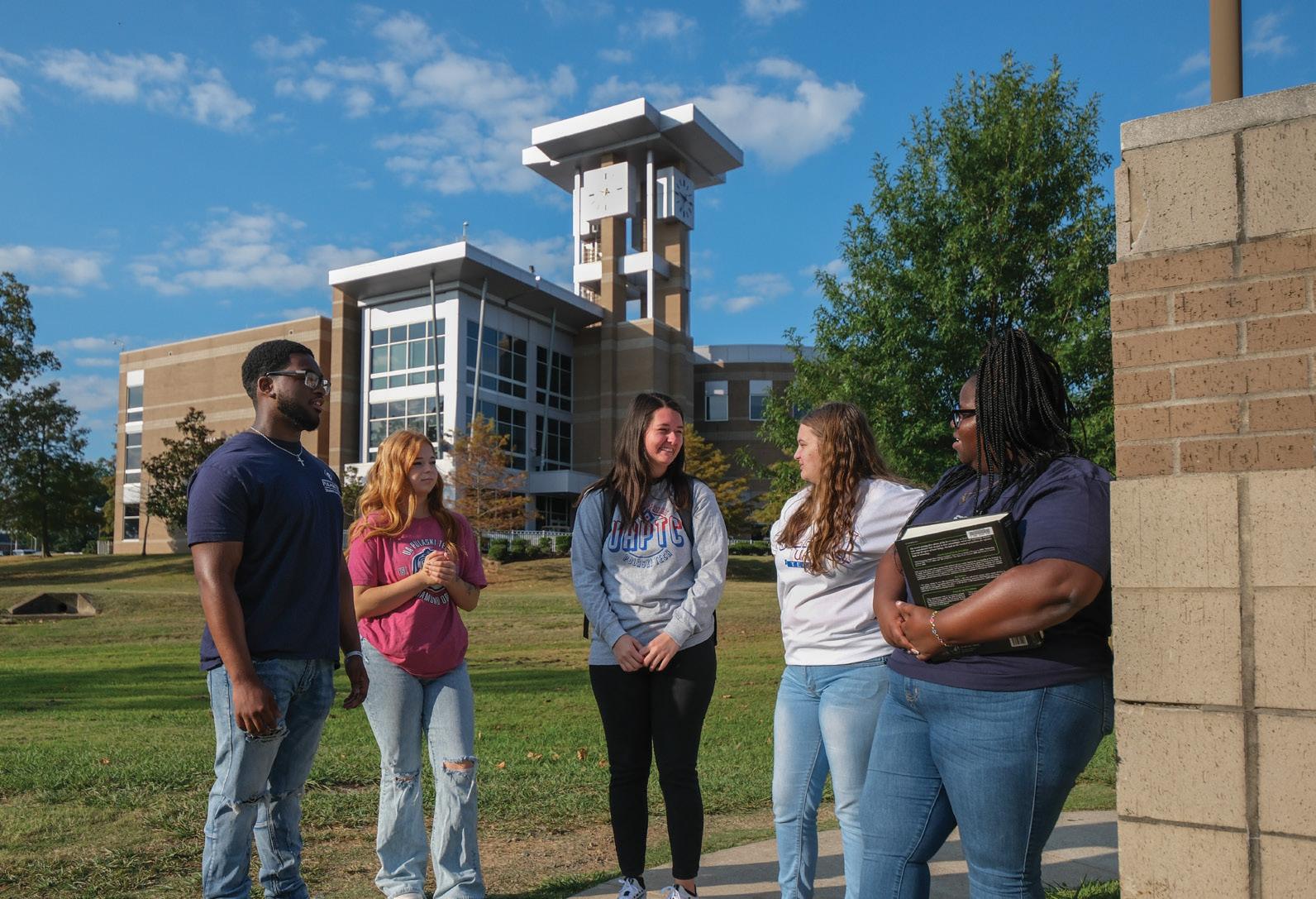
Today’s college students are just as likely to be busy parents with full-time jobs as 19-year-olds who just finished high school. In either case, University of Arkansas-Pulaski Technical College is a place where all students are given the support and resources they need to achieve the kind of academic success that leads to a rewarding career.
UA-Pulaski Tech serves the community by providing high-quality, affordable university-transfer curriculum, relevant workforce training that leads to lucrative employment with area business and industry, and economic development initiatives. These exciting opportunities enable UA-Pulaski Tech graduates to earn a competitive edge in today’s job market.
The college offers numerous associate of applied science degrees and certificate options that graduates can take directly to the work force. Graduates of the college’s technical sciences areas are highly sought-after professionals in fields such as advanced manufacturing, welding, automotive technology,
HVAC, aerospace technology and more. Allied health and human services programs include nursing, dental assisting, respiratory therapy, radiography and health information technology. UA-Pulaski Tech’s business and IT division trains future entrepreneurs, accountants, managers, computer programmers and cyber security professionals. The UA-PTC Culinary Arts and Hospitality Management Institute boasts facilities and instruction on par with the best in the country for aspiring chefs and hospitality professionals.
The college awards Associate of Arts and Associate of Science degrees to graduates of the university-transfer program. Families can significantly reduce the cost of a four-year bachelor’s degree by taking advantage of the college’s 2 + 2 Degree programs. For example, the Metro 2 + 2 Degree program is an articulation agreement between the UA-Pulaski Tech and UA Little Rock in which students complete their first two years at UA-PTC in one of four degree areas and then transfer to UA Little Rock for their final two years. These transfer agreements save time and money, and some UA System institutions like UA Fayetteville and UA Little Rock may honor the significantly lower UA-Pulaski Tech tuition rate for a student’s junior and senior years!
to continue to live at home, eliminating the added cost of dorm living.
Another way for students to reduce college costs is to apply for scholarships, grants and financial aid. The UA-PTC office of financial aid works hard to ensure that students know what is available to them and what the ramifications of college debt are. The importance of not taking on unmanageable debt is given the highest priority. Private scholarships available through the UA-Pulaski Tech Foundation are another important source of aid. See the complete list of UA-PTC Foundation scholarship opportunities at www.uaptc.edu/foundation/foundation-scholarship-opportunities.
With tuition priced at $145 per credit hour for instate residents, UA-Pulaski Tech provides an affordable, student-focused path to success.
The UA-PTC Mission: UA-Pulaski Tech provides access to high-quality education that promotes student learning and enables individuals to develop to their fullest potential.
“I chose UA-PTC to adapt to adult responsibilities,” said Destiny Mbuthia, a student from Benton, pursuing an associate’s degree in liberal arts and sciences. “After high school, I lacked the discipline and preparation to live independently. I believed UA-PTC was the best choice to develop these strengths and a smooth transition to a four-year institution.
“I have enjoyed the endless opportunities for growth at UA-PTC. Whether financially, educationally or socially, UA-PTC supports its community and especially students with ambition. My advice to incoming first-year students is to build connections with faculty members and fellow students. This will help you engage in activities, succeed in classes and learn more about your institution.”
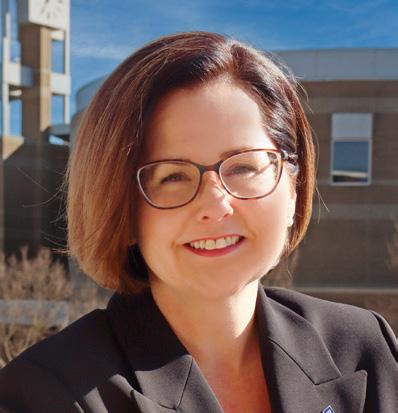

Cost of attendance and managing college debt is a concern for parents, students and colleges alike. Tuition costs and fees are significantly lower at twoyear colleges. At nearby commuter campuses like UA-PTC’s Main Campus in North Little Rock or the Little Rock – South site on I-30 at the Pulaski/Saline County line, younger students
“As a leader in higher education, the University of Arkansas-Pulaski Technical College is a student-focused institution that serves Arkansas and the region. Employers look to us for qualified employees, and students look to us for enhanced employability and earning power. UA-Pulaski Technical College offers relevant education that leads to sustainable careers and foundational education for transfer programs to four-year institutions. We work closely with employers to ensure that the education we offer prepares our graduates for the jobs available in the region today, and we provide the skills necessary to adapt to an ever-changing environment. Today’s students need affordability, mentoring and excellent instruction, and they need to see a return on their investment. UA-Pulaski Technical College is meeting this challenge.”
Dr. Summer DeProw
UA-Pulaski Technical College
The University of Central Arkansas is a vibrant four-year university deeply committed to your success. Located in Conway, just outside Little Rock, UCA offers a dynamic environment for top-tier academics, a thriving campus life and unparalleled opportunities for hands-on learning. Discover why your journey begins in Bear country.
Worried about college costs? UCA makes higher education accessible. For a typical academic year (15 credit hours), in-state tuition and fees are approximately $10,712. Out-of-state students can expect around $14,615.
A game-changing initiative is the UCA Commitment. This program covers tuition and fees for incoming Arkansas freshmen who are either Pell-eligible or come from households with an annual income of $100,000 or less. The application for Fall 2026 opens Oct. 1, 2025 — a key date for prospective students.
UCA supports a variety of financial aid opportunities, including freshman academic scholarships, departmental scholarships, and Foundation scholarships. Students may also qualify for Federal or State funds. Roughly13% of UCA students participate in work-study programs, gaining valuable experience and earning money right on campus with flexible hours.
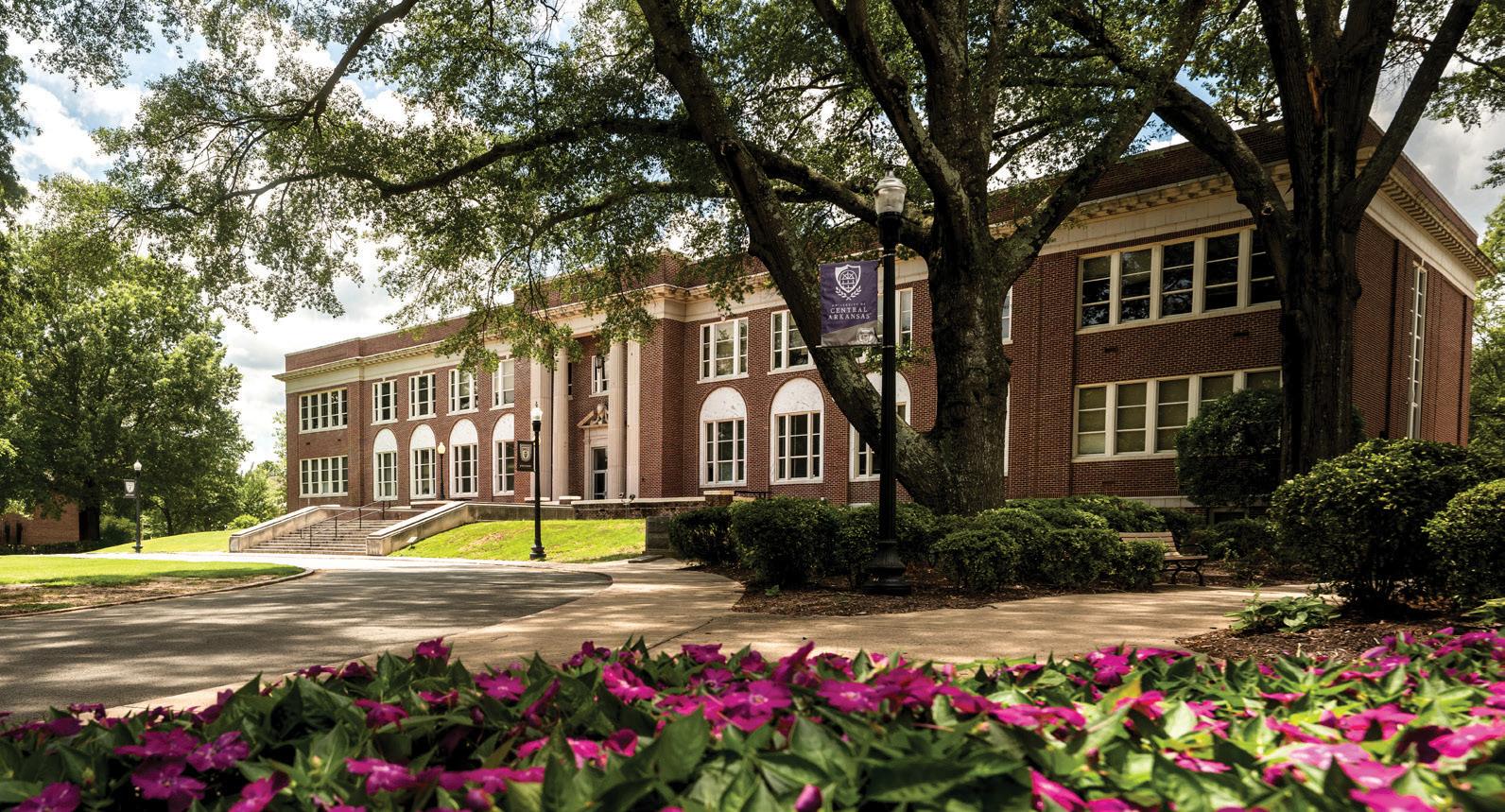
UCA offers numerous choices: Bear Hall, Bear Village Apartments and the unique Donaghey Hall (a mixeduse building with ground-floor businesses). Other options include Erbach Apartments, New Hall, Oak Tree Apartments (female-only townhouses), Stadium Park Apartments, The Edge Apartments (suite-style), Torreyson Apartments (townhouse apartments) and 425 House (for female upperclassmen).
At UCA, you’ll benefit from dedicated faculty and small classes, ensuring personalized attention. UCA proudly maintains an impressive 15:1 student-to-faculty ratio across campus, fostering more direct interaction with professors.

THESE IMPORTANT SCHOLARSHIP DEADLINES:
• Entering Freshmen: Jan. 26, 2026, for Achievement Scholarship and Honors College application; May 4, 2026, for Future Leaders & University Scholarships.
• Incoming Transfers: Dec. 12, 2025, for Spring 2026 Transfer Scholarships; June 12, 2026, for Fall 2026 Transfer Scholarships.
HOUSING & LIVING COMMUNITIES
UCA boasts phenomenal on-campus housing with diverse options. Freshman Living Learning Communities (LLCs) are an excellent way to connect with peers sharing similar interests or degree paths. Options include Arkansas Hall (women only), Baridon Hall (suite-style co-ed), and several others offering community or single-occupancy baths like Bernard, Carmichael, Conway, Hughes and State Hall.
While upperclassman housing isn’t guaranteed,
Popular programs include Psychology (BS), Biology (BS), Exercise and Sport Science (BS), General Business (BBA) and Computer Science (BS).
UCA also features unique and standout programs:
The UCA Aviation Academy, launched in 2024, is a highly certified pilot training program, ready to get you airborne.
The Integrated Health Sciences Building features state-of-the-art facilities, expanding the nursing program and housing the region’s first Interprofessional Teaching Center for collaborative health care education. A key benefit: About 90% of UCA’s health care graduates remain in Arkansas.
The Insurance and Risk Management program is among the country’s fastest-growing and the only one of its kind in Arkansas.
UCA is deeply focused on student success, helping you reach graduation day. You can find the latest retention and graduation rates on UCA’s official website, reflecting its commitment to student persistence and completion.
College extends beyond the classroom; it’s about finding your community. With over 150 Recognized Student Organizations and more than 1,900 RSO meetings, events and activities registered on CubConnect (UCA’s student involvement platform) in 2024-25, there’s always something happening! Easily find clubs or even start your own.
UCA boasts a vibrant Greek life with 19 fraternities and sororities. In Fall 2024, 1,058 Greek students
were affiliated, making up 12.7% of the undergraduate student population.
For sports fans, cheer on the NCAA Division I Bears across numerous men’s and women’s sports like baseball, basketball, football, soccer and track and field. For active participation, intramural sports offer everything from flag football to dodgeball, with most teams playing weekly.
UCA’s campus culture encourages year-round connection, growth and engagement. It’s a lively place to show your spirit, find your people and help shape a welcoming community. UCA also promotes service-learning, combining education with community service; many students earn graduation cords for completing 100 or more hours.
Your safety is a top priority at UCA. The UCA Police Department, comprising 23 full-time sworn officers and support staff, provides 24/7 law enforcement, public safety, emergency management and 9-1-1 services. Students also benefit from resources like the Thomas C. Courtway Student Recreation Center and the Student Health Center, providing essential care and assistance.

“The University of Central Arkansas is committed to the success of our students. Our faculty are some of the best in the nation and provide the academic rigor to set students up for success after graduation, allowing them to join the outstanding UCA alumni who are making a huge difference in Arkansas and beyond. Our dynamic and growing campus provides a sense of place for our students, and UCA Commitment is breaking down cost barriers. When you combine these qualities with our vibrant and diverse student body, UCA provides a complete collegiate experience that is second to none. Go Bears!”
Arkansas
Educating future generations of health care professionals is the mission of Arkansas Colleges of Health Education. Situated on 542 acres, the campus features two award-winning facilities that house state-of-theart learning environments while creating spaces for graduate-level students and community members to engage in healthy living.
ACADEMIC PROGRAMS
• Doctor of Osteopathic Medicine (DO) It is a four-year doctoral degree, mission-driven to educate and train compassionate osteopathic physicians through excellence in teaching, research, service, and scholarly activity.
• Doctor of Physical Therapy (DPT) A three-year, entry-level doctoral program focused on training successful physical therapists through hands-on, clinical experiences taught by the nation’s top PT faculty and employing brand-new equipment powered by cutting-edge technology.
• Doctor of Occupational Therapy (OTD) Students are trained in learning spaces such as the Live and Learn, Pediatrics and Splinting/Modality labs, which feature “real-world” practice throughout their three years in the program.
• Master of Science in Biomedicine (MSB) This one-year, 30-credit-hour program provides students with sufficient academic rigor in biomedical sciences to prepare students aspiring for a career in the medical and health professions.

Thinking about college but not sure where to start?
Arkansas State University-Beebe is the place to be. This isn’t just any two-year college; it’s a dynamic launchpad designed to get you wherever you want to go. Whether you’re looking for a career boost or you’re planning to transfer into a four-year degree, ASU-Beebe sets you up for success. Get ready to dive in and see what makes a Vanguard stand out.
College costs can be a big worry, but ASU-Beebe is all about making higher education accessible. If you’re an in-state student, you’re looking at just $140 per credit hour, and that includes general institutional fees. For out-of-state folks, it’s a still-reasonable $219 per credit hour. Here’s a cool fact: Student costs only went up by $4 a credit hour for the 2025-26 academic year. That’s a small jump that keeps your education affordable.
Want the full college experience? ASU-Beebe’s got convenient on-campus housing that makes life easy. A single room with board and laundry runs $3,700 per semester, while a double room with board and laundry is $3,275 per semester. There’s a nonrefundable $150 application fee to get started. And about that “board” part: it includes three meals a day during the week (Monday-Friday) and one meal a day on Saturdays and Sundays. You won’t go hungry here!
• Master of Public Health (MPH) This two-year program will develop diverse and skilled public health professionals who champion equitable access and opportunities to promote the health and well-being of populations to strengthen communities.
Students have the opportunity to model healthy behavior by taking advantage of campus amenities. ACHE offers two on-campus housing options, which include 24-hour security, internet, appliances and amenities like a swimming pool, fitness center,
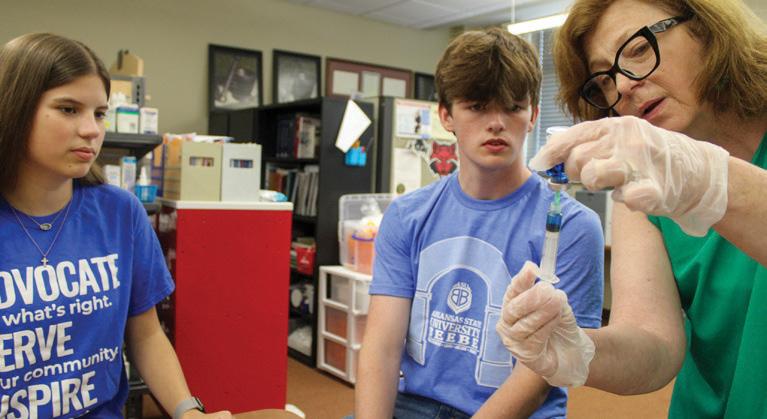
At ASU-Beebe, you’re not just a number. You’ll learn from dedicated faculty in small classes, so you get the personalized attention you need to truly grasp the material. Most classes max out at around 30 students, which means plenty of one-on-one time and handson support.
The college offers a wide variety of associate degrees, technical certificates and proficiency certificates. You can explore popular fields like Fine Arts, Health Professions, Business, Education and Agriculture. If you’re looking for something unique, check out the Veterinary Technician Program, which gives future vet techs a strong educational foundation. The John Deere Agriculture Technology Program is the only one like it in Arkansas, getting students ready for tech-driven farming careers. Plus, there’s a Marine Technology Program for boat maintenance and a Precision Agriculture Program where you’ll learn to use drones, GPS and data analytics in farming.
basketball court, dog park and entertainment pavilions. The ACHE campus itself includes Celebration Garden & Wellness Park, an 8-acre park that features walking trails, a lake, a playground, a labyrinth and more.
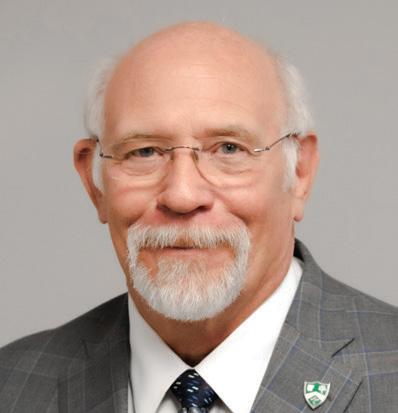
“Arkansas Colleges of Health Education (ACHE) is changing the direction of health care in Arkansas and beyond through the power of education. Whether you pursue becoming a physician, physical therapist, occupational therapist, achieve a master’s in biomedical science or graduate from our master of public health program, ACHE is ready to make your dream a reality. Our mission to educate and train a diverse group of highly competent and compassionate health care professionals to improve the lives of others is the driving force behind the outstanding faculty and staff that make up ACHE.”
Kyle D. Parker, JD Arkansas Colleges of Health Education
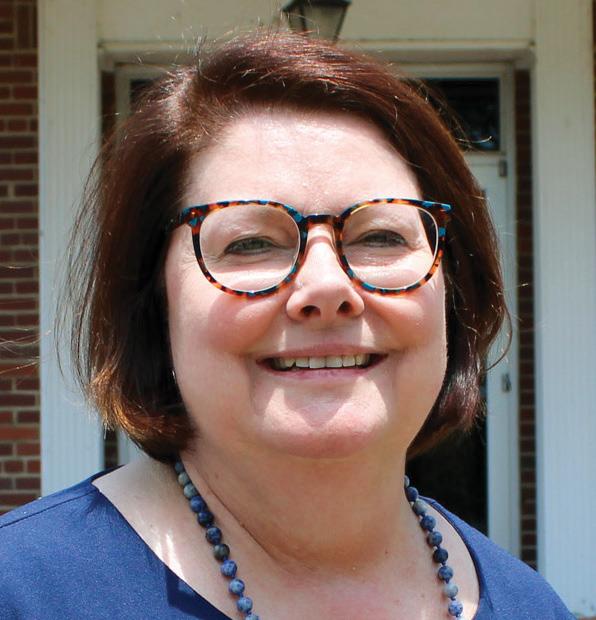
“In 2027, ASU-Beebe will celebrate 100 years of serving Arkansans. With multiple locations and a myriad of career-ready and transfer programs, ASU-Beebe remains focused on preparing students for the future. Under the direction of our talented faculty and staff, each student engages in handson learning and enrichment experiences. From our working farm and state-of-the-art learning labs to our student leadership experience and international travel opportunities, the ASU-Beebe experience holistically prepares students not only to make a better living but also to live a better life. To foster our graduates’ next steps, whether employment or transfer, and to contribute to the economic growth of our region, we work tirelessly to forge strong partnerships with area employers and higher education partners. As chancellor, I am incredibly proud of our heritage, and I work each day to uphold our rich tradition of “transforming lives through quality learning experiences.”
Dr. Jennifer Methvin Arkansas State University - Beebe
Arkansas State University Three Rivers provides a flexible two-year education. It prepares students for immediate careers or seamless transfer to a four-year university. In Fall 2024, ASUTR enrolled 1,983 students, mostly from Arkansas. Its diverse student body includes a high percentage of part-time learners, making it a great choice for nontraditional students.
tional, private and foundation scholarships available. On-campus mental health services, in partnership with Henderson State University, and dedicated campus security ensure student well-being.

ASUTR offers an affordable route to higher education. In-state tuition is $3,420 annually, plus $1,310 in fees, totaling $4,730 for 30 credit hours. An impressive 89% of students receive financial aid, with various institu-
ASUTR excels in preparing students for vital professions. Top programs include General Education (for transfer) and Nursing (PN and RN), both seeing rapid growth. Unique offerings like Welding and Mechatronics provide specialized skills. While ASUTR provides tutoring, it focuses on associate degrees and does not offer graduate programs or study abroad.
ASUTR fosters a supportive learning environment. Graduates benefit from job placement services and earn an average starting salary of $47,047. High-demand fields for graduates include Nursing, Welding and Mechatronics. ASUTR uses stackable credits, allowing students to earn certificates while working toward their degree, and concurrent credits through the Dual Enrollment Accelerated Learning program. This lets high school students earn college credits early, saving time and money. First-generation students get extra support through TRiO Student Support Services.
ASUTR stands out: Its AA/AAS graduates earn the highest average starting salary in the state at $49,789.
Forrest City | 870-633-4480 | eacc.edu
University of Arkansas-East Arkansas Community College (UA-EACC) offers an accessible, two-year pathway to career readiness or continued education. EACC focuses on providing a supportive environment for its students, emphasizing both academic and personal growth.
UA-EACC stands out with some of the state’s most affordable tuition rates. In-state students pay between $98-$109 per credit hour, depending on their county of residence, while out-of-state tuition is a reasonable $134 per credit hour. Certain allied health and technical programs, such as commercial driver training, welding and nursing, may have additional fees due to specialized supplies and equipment needs.
UA-EACC provides various financial aid options, including waivers, scholarships and grants. Students with an ACT composite score of 23 or higher can receive a 100% Academic Achiever tuition waiver. Other waivers include the Make Your Summer Count for Early College participants and the Summer Finish Line for those nearing graduation. EACC extends 50% tuition waivers to St. Francis County Public School employees and State of Arkansas agency employees. Full tuition waivers are available for active-duty law enforcement, correctional officers and firefighters in specific programs. A unique Multi-Generational waiver benefits families enrolling together. EACC has no on-campus housing, eliminating associated costs and maximizing flexibility.
UA-EACC offers a diverse range of programs. Popular choices in Allied Health include Registered Nursing (8:1 student-to-faculty ratio) and Practical Nursing (10:1 student-to-faculty ratio), along with the EMS Paramedic program. The Diesel Technology program is nationally recognized, ranking highly for courses completed through the Get Ahead program, a partnership with Daimler Trucks North America. The Commercial Driver Training program is also highly sought after, offering various short-term training options.
UA-EACC is dedicated to student success. Its graduation rate is around 18%, with a full-time retention rate of
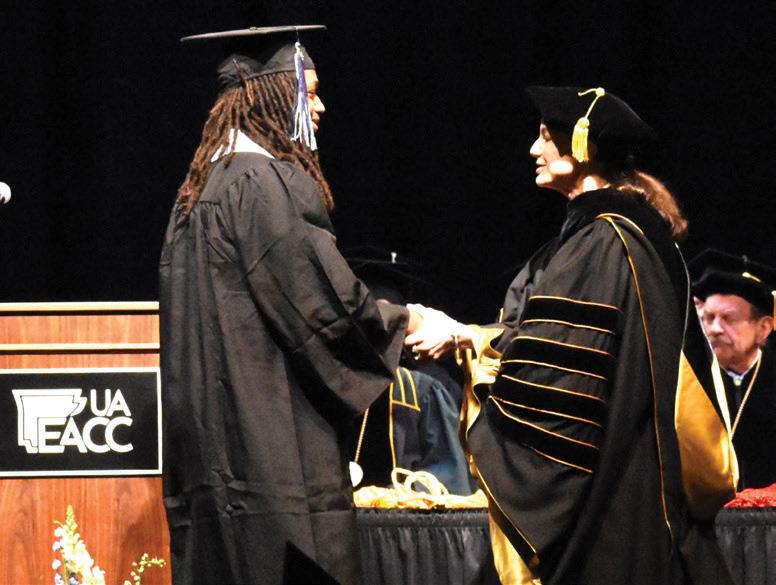
The college is a key part of the Arkansas Trucking Academy. Plus, ASUTR's Fall 2023 enrollment hit a record 2,028 students, a 10.7% increase. The college even owns and is restoring the historic Ritz Theatre in Malvern.
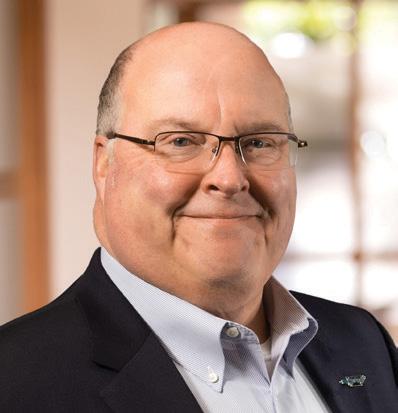
“Arkansas State University Three Rivers is committed to improving the lives of the residents in our communities we serve. For 56-plus years, the college has been committed to making a positive difference in people’s lives. ASU Three Rivers ensures you have the opportunity to achieve your educational goals by providing programs and services designed for our students who plan to seek immediate employment, transition to a new career or earn a four-year degree. Visit us at One College Circle in Malvern or at www.asutr.edu. At ASUTR, you will discover a Higher Degree of You!”
Dr. Steve Rook Arkansas State University Three Rivers
65%. The college prides itself on a “Stronger Together” campus culture where faculty and staff are committed to helping students achieve their academic and career goals, whether they aim for immediate employment or transfer to a four-year institution.

CHANCELLOR’S MESSAGE
“We strongly believe that our career-ready and transfer-ready programs provide students with the best and most economical education available, complemented by the highest degree of personal service. We are small but mighty, and we care deeply about our students. UA-EACC is educating and training to produce skilled workers to meet the needs of our region and state. In addition, we offer many programs and services designed to support students in their efforts to achieve a better life, and we are committed to their success.”
Dr. Cathie Cline, UA-EACC Chancellor
Looking for a flexible, accessible route to a bachelor’s or master’s degree? The University of Arkansas Grantham, based right here in Little Rock, offers a unique, fully online experience. This isn’t your traditional brick-and-mortar university. UA Grantham provides a 100% online learning environment, letting you earn your degree from anywhere.
Looking for a flexible, accessible route to a bachelor’s or master’s degree? The University of Arkansas Grantham, based right here in Little Rock, offers a unique, fully online experience. This isn’t your traditional brick-and-mortar university. UA Grantham provides a 100% online learning environment, letting you earn your degree from anywhere.
One standout feature of UA Grantham is its straightforward tuition. There’s no in-state or out-of-state difference in cost, making it simple to understand. Graduate courses cost $365 per credit, while undergraduate courses are $305 per credit. On top of that, there’s a $50 per credit hour resource fee that covers essentials like books and software. You won’t find any hidden program-specific fees here.
One standout feature of UA Grantham is its straightforward tuition. There’s no in-state or out-of-state difference in cost, making it simple to understand. Graduate courses cost $365 per credit, while undergraduate courses are $305 per credit. On top of that, there’s a $50 per credit hour resource fee that covers essentials like books and software. You won’t find any hidden program-specific fees here.
those associated costs. This focus on online delivery means maximum flexibility for your schedule.
those associated costs. This focus on online delivery means maximum flexibility for your schedule.
UA Grantham offers 20 associate, bachelor’s and master’s degree programs. While they don’t report specific student-to-faculty ratios at the program level, their offerings span in-demand fields. Some of their most popular programs include degrees in Business (from associate to an MBA), various health care pathways (like Medical Coding and Billing, and Health Care Administration), Criminal Justice, Electronics Engineering
UA Grantham offers 20 associate, bachelor’s and master’s degree programs. While they don’t report specific student-to-faculty ratios at the program level, their offerings span in-demand fields. Some of their most popular programs include degrees in Business (from associate to an MBA), various health care pathways (like Medical Coding and Billing, and Health Care Administration), Criminal Justice, Electronics Engineering
Technology, IT, Computer Science, Cybersecurity and Human Resources.
Technology, IT, Computer Science, Cybersecurity and Human Resources.
As an online university, UA Grantham prides itself on flexibility. According to the U.S. Department of Education’s College Navigator, the four-year graduation rate is around 19%, with a six-year rate of 22% and an eight-year rate of 34%. These figures reflect the unique nature of online learning, where students often balance studies with work and family commitments. UA Grantham gives you the tools and support to earn a valuable degree on your terms.
As an online university, UA Grantham prides itself on flexibility. According to the U.S. Department of Education’s College Navigator, the four-year graduation rate is around 19%, with a six-year rate of 22% and an eight-year rate of 34%. These figures reflect the unique nature of online learning, where students often balance studies with work and family commitments. UA Grantham gives you the tools and support to earn a valuable degree on your terms.
For active-duty military and qualifying veterans, UA Grantham shows its commitment with a reduced tuition rate of $250 per credit, and they even waive the resource fees. Plus, every degree-seeking student gets a new Lenovo laptop at no charge after classes start, a fantastic perk that truly enhances the online learning journey.
For active-duty military and qualifying veterans, UA Grantham shows its commitment with a reduced tuition rate of $250 per credit, and they even waive the resource fees. Plus, every degree-seeking student gets a new Lenovo laptop at no charge after classes start, a fantastic perk that truly enhances the online learning journey.
UA Grantham helps students navigate the world of financial aid. If you qualify, they’ll assist you in obtaining federal financial aid. Military members already benefit from significantly reduced tuition rates.
UA Grantham helps students navigate the world of financial aid. If you qualify, they’ll assist you in obtaining federal financial aid. Military members already benefit from significantly reduced tuition rates.
Since UA Grantham is entirely online, there’s no on-campus housing, so you don’t have to worry about
Since UA Grantham is entirely online, there’s no on-campus housing, so you don’t have to worry about
Located in Conway, Hendrix is a private, residential college that provides more than a degree; it offers a community, mentorship and a place to belong. With deep faculty investment, tailored financial support and a rich campus life, Hendrix is built for students who want to live fully and lead with purpose.
Located in Conway, Hendrix is a private, residential college that provides more than a degree; it offers a community, mentorship and a place to belong. With deep faculty investment, tailored financial support and a rich campus life, Hendrix is built for students who want to live fully and lead with purpose.
At Hendrix, financial aid is a conversation, not a formula. “We work closely with every student and their family to build a customized financial aid package that makes
At Hendrix, financial aid is a conversation, not a formula. “We work closely with every student and their family to build a customized financial aid package that makes
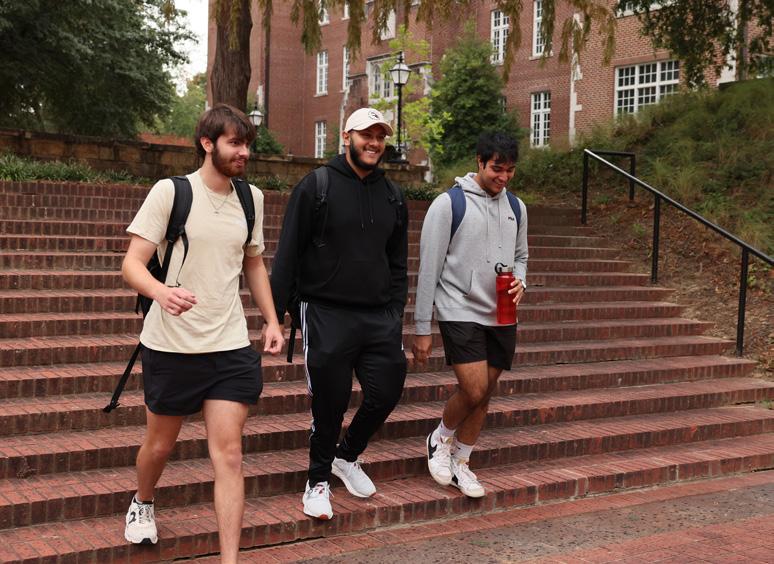

a Hendrix education possible,” says Kasey Evans, Vice President for Enrollment. Every admitted student is automatically considered for merit scholarships. In addition to what is made available through the FAFSA, Hendrix can offer need-based aid tailored to individual student circumstances because of the ongoing support of generous donors and alumni who believe in the lifelong value of a Hendrix education.
a Hendrix education possible,” says Kasey Evans, Vice President for Enrollment. Every admitted student is automatically considered for merit scholarships. In addition to what is made available through the FAFSA, Hendrix can offer need-based aid tailored to individual student circumstances because of the ongoing support of generous donors and alumni who believe in the lifelong value of a Hendrix education.
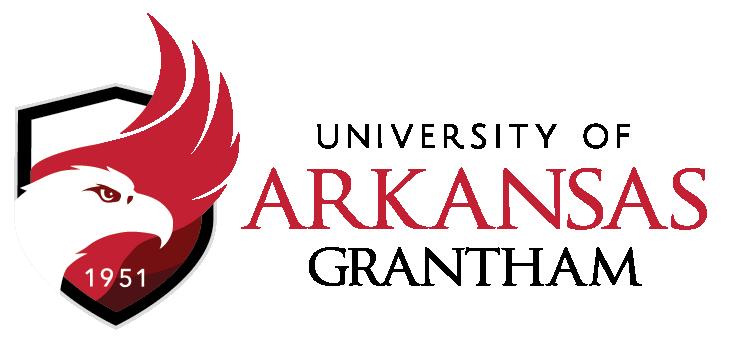
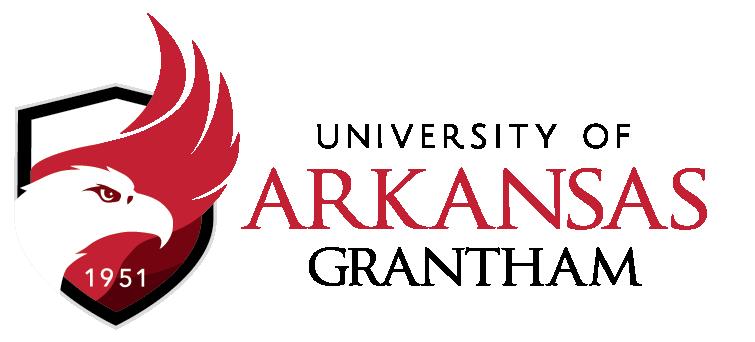
Faculty involvement is a cornerstone of the Hendrix experience. Professors do more than teach. They recognize students’ strengths, help them discover new interests and guide them toward research opportunities, internships and graduate school preparation. Students benefit from the Odyssey Program, which provides funding and support for hands-on learning in areas such as global study, service and original research.
Faculty involvement is a cornerstone of the Hendrix experience. Professors do more than teach. They recognize students’ strengths, help them discover new interests and guide them toward research opportunities, internships and graduate school preparation. Students benefit from the Odyssey Program, which provides funding and support for hands-on learning in areas such as global study, service and original research.
Living on campus is at the heart of your Hendrix experience. Residence halls are more than just places to sleep; they are where close friendships form and community grows. Students bond over shared spaces, meaningful conversations and traditions that have connected Hendrix students for generations.
Living on campus is at the heart of your Hendrix experience. Residence halls are more than just places to sleep; they are where close friendships form and community grows. Students bond over shared spaces, meaningful conversations and traditions that have connected Hendrix students for generations.
Hendrix College competes in 21 NCAA Division III sports, including basketball, swimming, lacrosse, football, women’s flag football, soccer, tennis and more. In addition to varsity programs, Hendrix offers club and intramural sports that encourage broad student participation. Whether on the field or in the stands, athletics are a vibrant and unifying part of the campus culture.
Hendrix College competes in 21 NCAA Division III sports, including basketball, swimming, lacrosse, football, women’s flag football, soccer, tennis and more. In addition to varsity programs, Hendrix offers club and intramural sports that encourage broad student participation. Whether on the field or in the stands, athletics are a vibrant and unifying part of the campus culture.
Hendrix students do not just graduate; they thrive. Acceptance rates to professional schools are well above national averages: 75% of medical school applicants gain admission (national average 45%), 73% of dental school applicants are accepted (vs. 56%) and 78% of law school applicants are admitted.
Hendrix students do not just graduate; they thrive. Acceptance rates to professional schools are well above national averages: 75% of medical school applicants gain admission (national average 45%), 73% of dental school applicants are accepted (vs. 56%) and 78% of law school applicants are admitted.
Hendrix also tops rankings among Southern liberal arts colleges for placement in psychology and computer science graduate programs. While nearly one‐third of our graduates pursue advanced degrees, for those entering the workforce, the rate for job placement is 100%.
Hendrix also tops rankings among Southern liberal arts colleges for placement in psychology and computer science graduate programs. While nearly one‐third of our graduates pursue advanced degrees, for those entering the workforce, the rate for job placement is 100%.
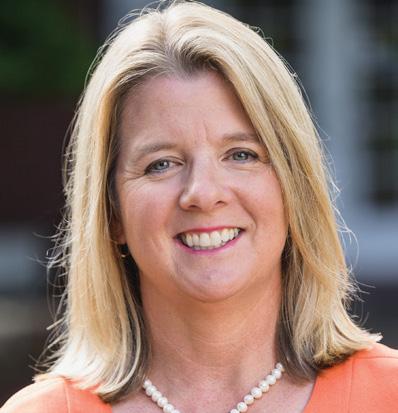
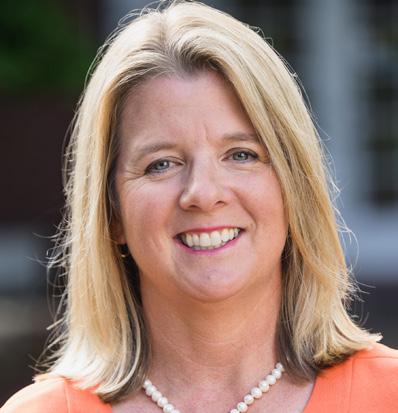
“At Hendrix, students learn how to think critically and cultivate a lifelong love of learning, which leads to meaningful lives and fulfilling careers. Our close-knit residential community fosters engagement, mentorship and curiosity, equipping students to think boldly, live purposefully and engage fully with the world around them. They are the next generation of civic leaders, entrepreneurs, educators, scientists, artists and changemakers, and their journey starts at Hendrix as it has for so many leaders in our state for nearly 150 years.”
“At Hendrix, students learn how to think critically and cultivate a lifelong love of learning, which leads to meaningful lives and fulfilling careers. Our close-knit residential community fosters engagement, mentorship and curiosity, equipping students to think boldly, live purposefully and engage fully with the world around them. They are the next generation of civic leaders, entrepreneurs, educators, scientists, artists and changemakers, and their journey starts at Hendrix as it has for so many leaders in our state for nearly 150 years.”
Karen Petersen Hendrix College
For 139 years, Ouachita Baptist University has been a cornerstone of higher education, fostering community connections that span a beautiful Arkadelphia campus, dedicated alumni network and partnerships throughout Arkansas. Named AY’s Best Private College two years in a row, Ouachita has experienced remarkable growth, with a 20% enrollment increase since 2016, reaching its highest headcount in almost 60 years.
Beyond a foundation of over 50 undergraduate majors across seven academic schools, Ouachita continues expanding with cutting-edge programs in criminal justice, engineering and cybersecurity. Graduate offerings now include online master’s programs in
applied behavior analysis — the only program of its kind in Arkansas — business administration and clinical mental health counseling, positioning graduates for leadership in emerging fields.
With more than 50 student organizations and 18 NCAA Division II athletics teams, campus life thrives year-round. The Arkadelphia campus offers unparalleled outdoor recreation opportunities, including over 10 miles of local hiking and biking trails, plus easy access to the Ouachita and Caddo rivers as well as DeGray Lake State Park for kayaking, swimming and outdoor adventures.

At Southeast Arkansas College (SEARK), we believe college should be more than just accessible and affordable — it should be transformational. Located in the heart of Pine Bluff, SEARK offers a vibrant, two-year college experience built to move you forward — no matter where you’re starting from.
The Ben M. Elrod Center for Family & Community exemplifies a commitment to servant leadership, coordinating Tiger Serve Day and other initiatives that generate over 40,000 volunteer hours annually in Clark County. Students engage in meaningful ministry through Campus Ministries, local churches, mission trips and small groups, building character alongside academic achievement.
This combination of academic rigor, vibrant community life, outdoor recreation and faith-based service creates graduates who
are not only academically prepared, but also equipped to make meaningful contributions to their communities and professions across Arkansas and beyond.

“When you’re looking at colleges, you likely hope they will provide strong academics, personal and spiritual growth and, of course, career preparation. At Ouachita, these aren’t just hopes — they’re built into our purpose of investing in students. Whether you’re studying business, biology, nursing, psychology or are undecided, our faculty and staff take a personal interest in your success. Our small classes and residential community develop the whole person in a rich Christian tradition, where you’re valued and known. With a state-leading graduation rate and 100% of freshmen receiving merit scholarships, families are finding value in a Ouachita education.”
Dr. Ben Sells Ouachita Baptist University
one of our seamless 2+2 partnerships or jump straight into a high-demand career, SEARK gives you the tools — and the confidence — to succeed.
We get it — life is busy. That’s why SEARK offers flexible options with support tailored to your goals. From one-on-one tutoring to career coaching through TRIO, Tutoring Central, and Career Pathways, we’re here to help you thrive — inside and outside the classroom.
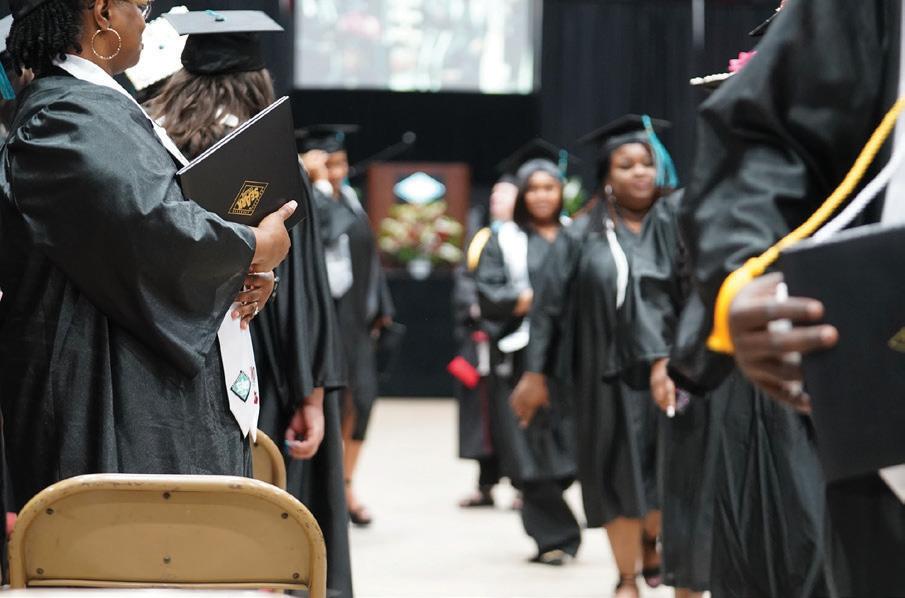
With more than 50 career-focused programs across health professions, skilled trades, applied science and technology, and general education, SEARK is a launchpad for every kind of student. Whether you’re planning to transfer to a four-year university through
Prefer online learning? No problem. SEARK’s online and hybrid options make it easy to earn your degree on your schedule, so you can keep working, keep parenting, and keep pushing forward.
• Choose from 50+ degrees and certificates to find the right fit
• Small class sizes with an 8:1 student-to-faculty ratio
• 84% of students receive financial aid
• NJCAA-sanctioned athletic teams + Esports
• Newly renovated student housing available
• Primarily an 8-week course schedule
• More than 15 student clubs and organizations
SEARK is one of the most affordable 2-year colleges in the state of Arkansas. Yet, a wide range of financial
aid options, scholarships, and grants are available to help students reduce or eliminate college debt.
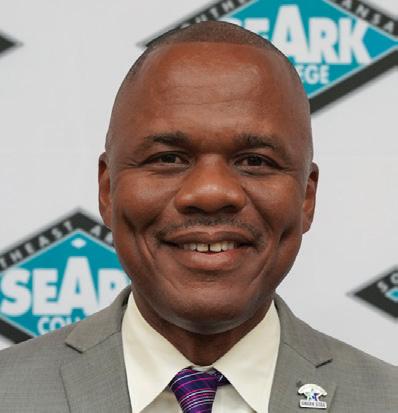
“At SEARK College, your future starts with a personal touch. With a student-to-faculty ratio of just 8-to-1, our dedicated educators are here to guide, mentor, and champion your success — both inside the classroom and beyond. Whether you’re looking to launch a career, transfer to a four-year university, or simply explore your passions, SEARK offers a wide range of affordable, high-quality programs designed to fit your goals. We’re more than a college — we’re a community committed to helping you grow, thrive, and take charge of your future. Ready to begin your journey? Apply today and let SEARK be the first chapter in your success story.”
Tyrone Jackson Southeast Arkansas College


Reach higher and build a better world with us. Last year, 98% of new freshmen from Arkansas who applied for scholarships received an award. As part of the Razorback family, you’ll have access to mentoring, academic coaching and many more resources to help you on your path to graduation — and your future career.
The UCA Commitment is changing the future for many incoming Arkansas freshmen, because big dreams deserve real support.
MORE AFFORDABLE
Making college accessible for first-gen students and beyond.
MORE OPPORTUNITY
Our program includes families earning up to $100,000.
MORE SERVICE
Participants volunteer 10 hours per semester. Bears do good!






First launched in 2016, our Faces of Central Arkansas series aims to highlight individuals in the community who stand out by uplifting others and excelling in their fields.
From classic Mexican cuisine to farm-to-table dining, real estate and commercial banking to the developers and small business owners helping their community flourish, these selected individuals embody remarkable dedication, meaningful contributions and a collaborative spirit within The Natural State. They are your neighbors, friends and family, collectively ensuring Central Arkansas remains a premier destination among surrounding states.
Just as our initial spotlight shone on these exceptional people, we invite you to delve into their stories and celebrate their impactful work.

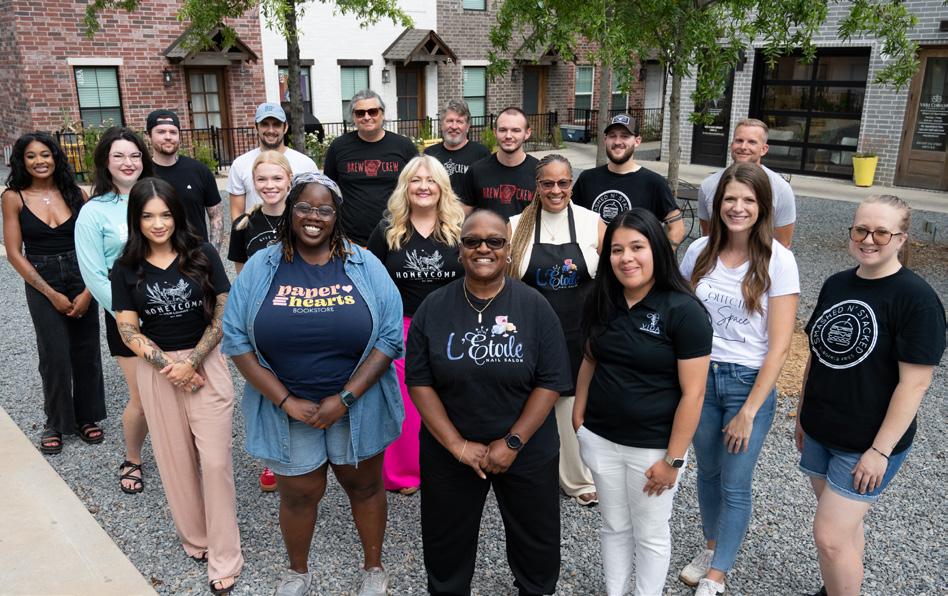



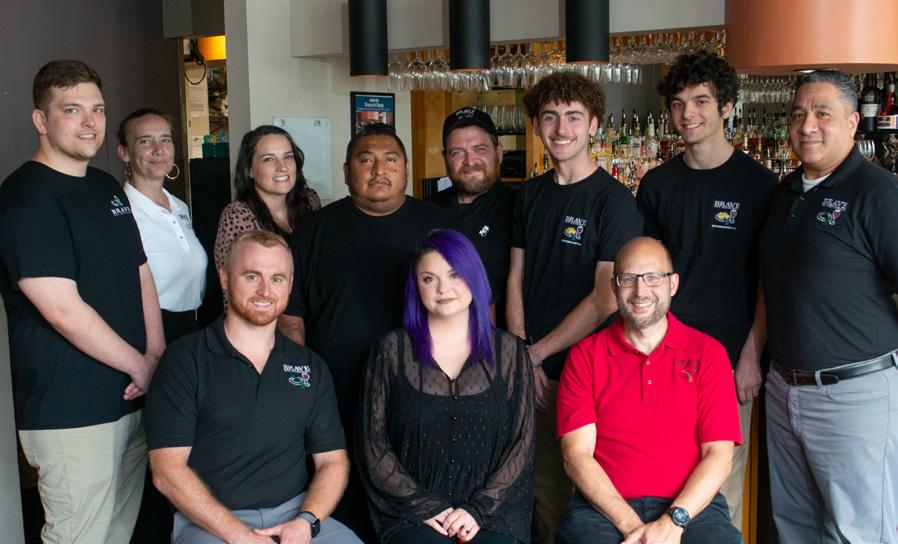



Jarrod Norwood, the “Face of Commercial Lending,” defies the typical banker stereotype, proving to be a strategic partner rather than just a lender.
Growing up with a rodeo arena in his front yard, far from a banking background, he was inspired by a local banker to pursue finance. This unique upbringing fueled his passion for helping people achieve their dreams. Today, Norwood approaches commercial lending as a business consultant, prioritizing education over sales. He believes the “why” behind a loan is crucial, fostering deep, relationship-based partnerships. He delights in living vicariously through the entrepreneurial journeys of his clients, helping them secure funding and realize their visions. For Norwood, lending is about much more than rates; it’s about being an invaluable ally in the success of his clients.












Pettaway Square, in the Pettaway neighborhood, thrives as a vibrant community hub, powered by the collective work, creativity and collaboration of its businesses. Establishments like Moody Brews, Paper Hearts Bookstore, Smashed N’ Stacked, Pettaway Coffee, L’Etoile Nail Salon and others are more than just storefronts; they’re deeply interwoven into the fabric of the community, with many owners and employees living and working within walking distance. Their synergy fosters an environment where businesses flourish, a testament to the shared vision for Pettaway’s growth. As Michael Orndorff, a developer and key figure in the community, observed, “No one comes to Pettaway and says, ‘We can’t make this work.’ Folks either stay or grow into larger spaces due to the success they find here.” The ongoing positive development and planned expansions, including new offices, retail spaces, restaurants and apartments, highlight Pettaway’s sustained evolution as a dynamic and successful district.
Photography by Brittany Watts and Brian Chilson











Hillcrest Designer Jewelry, a local gem led by owner Eric Coleman, is the “Face of Designer Jewelry” in Little Rock. With over 40 years of experience, Eric, a graduate gemologist from the Gemological Institute of America, brings unparalleled expertise to every facet of the business. Since opening in 2011, he and his wife, Cathy, who now manages the front of the store, have cultivated a full-service establishment offering everything from top designer brands to bespoke custom creations and meticulous repairs. Their commitment to the Hillcrest community, a vibrant hub of creative entrepreneurs, shines through their unique selection and dedicated customer service. This family-run business, occasionally assisted by their son, Cross, makes jewelry dreams a reality, rooted in decades of passion and skill.



Moody Brews is truly the “Face of Rice Brewed Beer,” thanks to Josiah Moody’s pioneering innovation and strong relationship with Isbell Farms. Initially utilizing their “broken rice,” Moody’s collaboration deepened, leading him to experiment with rice flour, a byproduct of sake milling that Isbell Farms struggled to repurpose. He discovered a groundbreaking method: incorporating this flour directly into the brewing process, eliminating the need for steaming and saving valuable time for craft breweries. This innovative use of a discarded byproduct highlights Moody Brews’ commitment to sustainability and ingenuity. Moody’s New Ground Pilsner, brewed with this unique flour, exemplifies the brewer’s dedication to pushing boundaries in the beer industry. Moody Brews aims to have this distinctive pilsner canned by next year, bringing its unique approach to a wider audience.



Taco Mama, under the vibrant leadership of Shane and Diana Bratton, is undeniably the “Faces of Classic-Style Mexican Food” in Hot Springs, built on a 35-year foundation of culinary passion and community focus. Drawing from her large family upbringing and culinary training, Bratton infuses her restaurant with a spirit of hard work and creativity. After nearly two decades of success with Cafe 1217, she embraced her Mexican heritage, opening Taco Mama in 2009. The restaurant offers a diverse menu, from classic Mexican dishes and green chile cheeseburgers to unique potato-wrapped jalapenos and health-conscious options, alongside popular Saturday brunch items like Shane’s Special, two jalapeño corn cakes topped with carnitas, poached eggs and jalapeño hollandaise. Bratton finds deep fulfillment in the relationships she cultivates with her team, striving to create a workplace where everyone feels valued. She continues to mentor and champion accessibility, embodying her belief that the industry thrives on “vision, resilience and community.” tacomama.net

Dr. Ashley Mann is truly the “Face of Life, Wellness and Spinal Care,” bringing a holistic and deeply personal approach to chiropractic. An Arkansas native, her diverse background includes a psychology degree, work with juvenile drug court programs and extensive health certifications in yoga, personal training and sports nutrition. Her chiropractic journey was inspired by her own experience with debilitating back pain and surgery after military service. Discovering profound healing through chiropractic and upper cervical care, she felt compelled to offer the same transformative relief to her home state. Dr. Mann also specializes in women’s health, focusing on hormones and thyroid conditions while empowering women with knowledge on holistic living, including intermittent fasting. Her dedication stems from a personal mission to help others achieve pain reduction and optimal health.


You can really taste the local connection at Brave New Restaurant. As the “Face of Farm-To-Table Dining,” they work closely with Arkansas farmers to bring the freshest ingredients straight to your plate. Their partnerships help everyone grow; the restaurant gets top-notch produce and farmers learn what the market wants.
Brave New is committed to highlighting the best of Arkansas agriculture. They even extend the season for favorites like heirloom tomatoes, Arkansas’s state fruit and vegetable, by sourcing from farms across the state. You’ll find their appreciation for farming in every dish, like the blackberry chili pork chop from Johnny Moore’s Old River Farms or the heirloom ahi tuna club. Every meal is a celebration of Arkansas’s seasonal bounty.



Billy Roehrenbeck, founder of Pulaski County Title, is truly the “Face of Real Estate Title and Closing Services” in Arkansas. Starting as a courier at 19, he “tripped over a hobby” that blossomed into a rewarding career. In 2007, he established his company, which, despite being a small business, now boasts around 50 employees — significantly larger than the industry average.
Billy’s work is twofold: ensuring smooth real estate transactions and diligently researching property history, sometimes dating back to the Louisiana Purchase. He takes immense pride in protecting consumers through their largest financial decisions, aiming to make each closing a joyful and thorough experience. His “boots on the ground” approach, coupled with deep Arkansas roots and previous leadership in the Arkansas Land Title Association, highlights his commitment to integrity, security and client comfort.


This is your moment to shine!
Whether you’re the queen of cupcakes, the king of construction, or the boss of balance sheets—we’re looking for standout pros from every corner of the community. From finance to food trucks, architecture to aesthetics, FACES OF CENTRAL ARKANSAS is your chance to be celebrated for doing what you love.
Be the face of your field. Be featured in print. Be recognized for your passion.
We’ve got more faces to feature—and one of them could be yours! Don’t miss this chance to stand out among Central Arkansas’s best and brightest.

Contact your sales representative or Brooke Wallace, brooke@arktimes.com, 501-658-7483 for details.
BY JAY JENNINGS

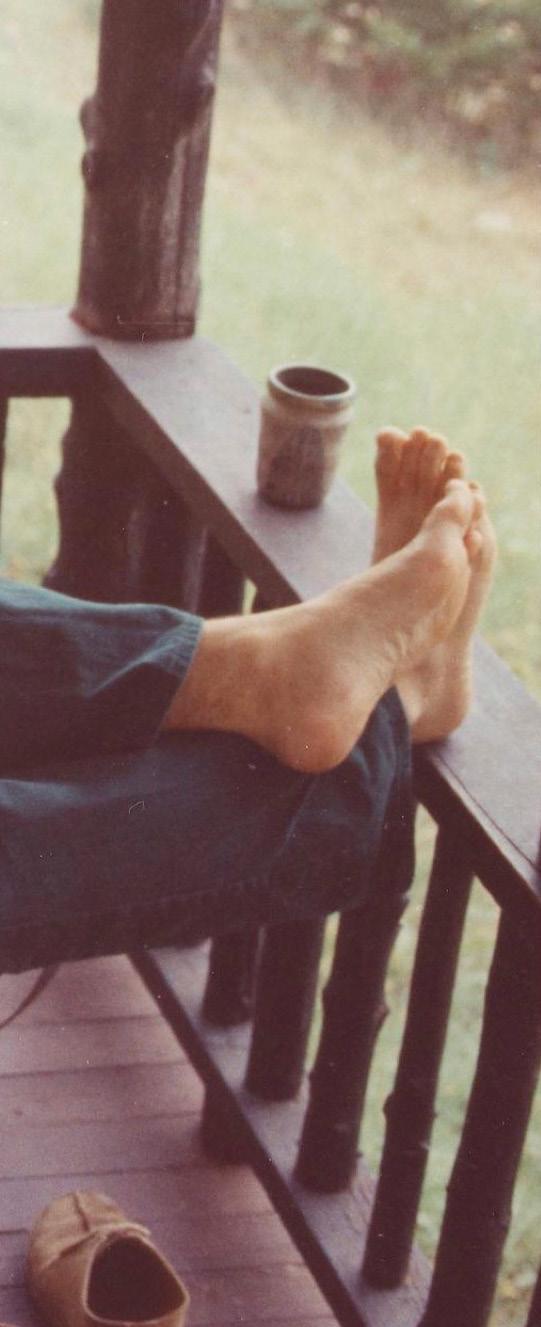
In May 1965, two nascent but ambitious literary geniuses were separated only by a short boat ride across Norfork Lake in Baxter County. Charles Portis, having left his job as the London bureau chief of the New York Herald Tribune at the end of the previous year, was holed up in a cabin resort called Hickory Hills in Gamaliel to work on his first novel, “Norwood.” He was 31.
The other literary genius on the lake was Frank Stanford, then a 16-year-old whose family lived in Mountain Home in a lakeside house on a road called Mallard Point. If Portis had wandered down from his cabin to the nearest shore of the lake, he could look directly across at Mallard Point and might have seen Stanford and his junior classmates from Subiaco Academy — who were visiting the Stanford home for a weekend revel — swimming and waterskiing and drinking beer from floating coolers. When an Arkansas Coast Guard Auxiliary boat pulled up to investigate, Stanford hauled in the coolers, drove three taunting loops around the law in his own boat and gunned it for the lake’s Missouri line and a secret cove he knew.
Despite the age difference, the emergent writers shared more than a lakeshore idyll. Both had been reared in Southern locales far from literary centers: Stanford in Greenville, Mississippi; Memphis, Tennessee; and Mountain Home; Portis in Mount Holly and Hamburg. Both had read widely and idiosyncratically on their own. Even as a teenager, Stanford could recite Chaucer and had devoured Conrad, Kafka, Turgenev and Marx, as well as works on Buddhism and poetry by Samurai warriors. For novel research, Portis read deeply on the Civil War and the American West, and would eventually acquire extensive knowledge of secret societies and Mayan culture. Perhaps most significantly, each had a finely tuned ear for the voices and language around them, especially Southern vernacular heard in bars and daily life, which would be essential to the sui generis nature of each’s work.
The tragedy of the comparison is that Stanford would never reach the age Portis was when he began writing fiction at Norfork Lake, a pursuit that would eventually produce a body of work canonized in the Library of America, including a touchstone of American
literature, “True Grit.” In 1978, 13 years after the aforementioned weekend with his schoolmates, Stanford took his own life at age 29. Despite amassing an enormous body of work and displaying a poetic genius that earned him praise and prestigious publication during his lifetime, Stanford’s oeuvre — partially available in various posthumous collections like Copper Canyon Press’ “What About This: Collected Poems of Frank Stanford” — has largely languished in obscurity, except among a certain coterie of admirers, champions and scholars. One of those is James McWilliams, a writer and professor of history at Texas State University.
In his monumental new book about Stanford, straightforwardly titled “The Life and Poetry of Frank Stanford” and published by the University of Arkansas Press on July 1, McWilliams leads with the horrible and well-documented circumstances of Stanford’s suicide. This structural choice — a correct one, I believe — confronts the aura and mythology of tortured genius early. Over the next 500 pages, McWilliams then proceeds to spool out in rich, fascinating and sometimes disturbing detail the course of Stanford’s brief but astonishingly productive poetic life.
The eyes rolled back in the head
Like they was baptized
I tell you
When he cut a throat
It was like Abednego’s guitar
And the blood
Flew out like a quail
From “The Singing Knives,” 1971
I admit to not having been familiar with Stanford’s poetry or much about his life before reading McWilliams’ biography. I do remember learning at some point that Lucinda Williams’ song “Pineola” was about his death, and in her 2023 memoir she admits that she fell in love with him almost instantly after meeting him in 1978 and that the composition, which described a suicide and a funeral at Subiaco Cemetery, “fictionalized a few details but the song is true figuratively.”
Stanford’s comet blazed across Northwest Arkansas at a time when I was in high school in Little Rock and just beginning to discover
books not distributed by the Sports Illustrated Book Club. When he died, I was studying abroad in England, trying to lose my Southern accent and, as a writer, to emulate Henry James. Stanford, born a decade before I was, followed a very different Arkansas arc, one that saw him continually excavate his unusual and unusually precocious youth for his poetry, especially for his masterwork, “The Battlefield Where the Moon Says I Love You,” a single poem which runs to some 15,000 unpunctuated lines. Acknowledged as brilliant but rejected repeatedly because of its length, it appeared finally in 1978, just before his death, with Lost Roads, a press Stanford himself founded to get neglected poets he admired into print. McWilliams is particularly good on Stanford’s early life. Adopted by Dorothy Alter from an orphanage in Mississippi as a newborn in 1948, Stanford was raised by her in Greenville to fit into a comfortable bourgeois Southern milieu, though uncommonly for the time she was a single businesswoman choosing to become a mother on her own. In 1951, she married Albert Stanford, a levee engineer based in Memphis who was 27 years her senior and who moved the family every summer to Mississippi River levee camps, where he oversaw repairs. These summer stays, McWilliams writes, were “where a young Frank Stanford would, by just living as a kid, unknowingly find material for a lifetime of poetry” by being exposed to “a whirl of blues-driven sound and voices” from the Black workers and their families in the close quarters of the camps.
There was Born In The Camp With Six Toes
He popped the cottonmouth’s head off
There was Baby Gauge
He tied the line to his wrist
He tied it to the alligator gar
He rode the fish
From “The Blood Brothers,” 1964
During the school year, however, Stanford had a privileged childhood in Memphis, where he was a standout young baseball player and athlete. The city also opened him to wider cultural influences — a literary world through the family’s friend Joan Williams, a novelist who was once romantically involved with William Faulkner; and music from Elvis to Melrose High School’s “all black drill and precision team,” as Stanford describes it in “The Battlefield.” One character in the poem “wore out some soles high stepping with them.”
When Albert Stanford retired to Mountain

Home in 1961, his son immersed himself in the Norfork Lake pursuits of fishing and waterskiing, and earned the nickname “Bull” for his stature and athleticism. He also led a secret interior literary life of reading and writing. A priest and English teacher from Subiaco Academy, Father Nicholas Fuhrmann, hired the young man to teach him to waterski and, intuiting his intelligence, welcomed him at the academy a year later as a junior. There, Stanford received overt support for his literary interests from Fuhrmann and the other monks and later said he “wrote more between twelve and eighteen” than at any other age. “He was light-years ahead of us — we all kind of acknowledged that,” a Subiaco classmate said.
The school, where his mother worked after her husband died, would remain a refuge for Stanford in subsequent years.
Nevertheless, he was underachieving academically and began acting so provocatively in his last semester — though what he did is one of the few details McWilliams hasn’t uncovered — that his mother chastised the priests for not alerting her to his actions. She feared he was in “real trouble” that would prevent him from going to college in Fayetteville without intervention from the family doctor. That storm passed, but later a Fort Smith general practitioner whom Stanford’s mother convinced him to see told her he was probably schizophrenic; a note to that effect gave Stanford a 4F status that kept him out of military service during the draft.
His Fayetteville years (mid-1966 to mid-1972) were where his poetry exploded and his compulsions and mental struggles emerged, producing words and actions that leads McWilliams to call him “as mythological a figure as Fayetteville has ever known.” The context McWilliams provides of Fayetteville and the University of Arkansas’s creative writing community, with which Stanford had a tortured relationship, is engrossing. The university’s MFA program, founded in 1965 by Jim Whitehead, was the locus of both serious work and serious partying in this free-wheeling period. Whitehead’s workshop was “fast, furious, and rough,” one student recalled, and MFA parties went just as hard, leading to many drunken liaisons and outrageous acts. Stanford hosted one at his cabin on Mount Sequoyah and cleared the house of “imposter” doctoral candidates by blasting a shotgun through his ceiling. The poets partied on.
Creatively, Stanford found more inspiration at Sherman’s Tavern, the city’s first Black-owned business and a civic hub for the town’s some 600 Black citizens. It was also a place that welcomed white patrons, “for those willing to enter with respect,” McWilliams writes, and Stanford became a regular. This might have seemed strange to those Subiaco classmates who recalled him as an outright Old South racist. There, he displayed a Confederate flag in his dorm room and seems to have wholeheartedly embraced the tropes of “tradition” and “heritage” that his mother proclaimed. McWilliams links Stanford’s philosophical and intellectual justification for this stance to his study of the history and practice of judo — he formed and coached a competitive judo club at Subiaco — with its reverence
for codes and traditions.
But in Fayetteville, McWilliams writes, he “began listening to his world in a new way, with a fresh openness to vernacular” and a “genuine interest in Black culture,” primarily through the friendships he developed at Sherman’s. In this space, Stanford listened and drank and found a rich vein of language and community that connected him to his time in the levee camps and inspired him to develop characters and voice in “The Battlefield.” McWilliams maintains that Stanford’s “interest in the dialogue of Blacks reflects curiosity, respect, and even envy for what he saw to be, ultimately, a shared language of expressive amplitude.”
His shorter published poems distilled his experience in the South to startling, sometimes surreal imagery. C.D. Wright, the acclaimed Arkansas poet with whom he became romantically involved, described his work this way: “As a reader you’ll find every one of his pages overpopulated with similes, metaphors, and conceits, but it is his metaphors that yield more pleasure than anyone’s I know — so distinct, so secure, so peculiar.”
yea we sat up there on the levee like four generals looking at a battle
Charlie B. said these here is what I call box seats hey Jimmy these is the white man’s bench alright Tang said the two negroes and the white one Jimmy and myself sat in the balcony of the Delta we were like four noblemen in the loges at the opera
From “The Battlefield Where the Moon Says I Love You,” 1977
As the poems poured out and wowed his creative writing professors like Whitehead and Miller Williams (Lucinda’s father), his fellow students, established poets like Alan Dugan and literary editors, Stanford’s romantic and personal life took an increasingly chaotic turn, precipitating a breakdown and hospitalization. Within months of marrying his first wife, Linda Mencin, at age 23, she filed for divorce because of a string — or rather a constant parade — of affairs, one of them a serious relationship with a woman named Cheryl Campbell.
The end of both of those relationships was one factor that sent him spiraling. But “Frank understood,” McWilliams writes, “that at the root of his trouble was his obsession with po-

CABOT
501-941-3101
CONWAY 501-513-9700
HEBER SPRINGS 501-362-3100
HOT SPRINGS 501-547-8372
LITTLE ROCK 501-907-7330
LITTLE ROCK MIDTOWN 501-221-2700 NORTH LITTLE ROCK 501-791-7546
RUSSELLVILLE 479-223-5000
501-268-1500 STUTTGART (Tuesday Only) 870-659-8050
“The mind is a very, very powerful thing, and with your mind, you can do anything.” as a peer ambassador, craig foster is now able to assure other amputees that it’s ok read more at SnellArkansas.com


MOBILITY AND










POET, LOVER, FRIEND: Stanford with C.D.
Wright, another celebrated Arkansas poet and one of his many lovers. Wright referred to Stanford as “the most disciplined writer I have ever known or heard of.”





etry,” and he burned a large collection of his manuscripts, leading his mother to have him committed to the Arkansas State Hospital in Little Rock. The report of his 10-day stay indicates that “Frank only felt in charge of his life when he was writing.” McWilliams adds that the “fundamental conflict between poetry and life precipitated Frank’s destructive feelings of insecurity.” Upon his release, during a “recovery” time at Subiaco, an unsuccessful suicide attempt by drowning followed. While the art-life conflict sometimes became more balanced, it continued to haunt him until it killed him.
Some 300 pages in, among the perceptive but always accessible readings by McWilliams of the poetry and its connection to the life, I began to tire of the lists of Stanford’s sexual conquests, including one with a high school girl that McWilliams casually describes as an “affair.” Stanford admits in a correspondence that “I’ll never be able to be faithful to one person,” and McWilliams clearly states that Stanford’s “pseudophilosophical transmutation of love for one woman into an abstract love for all women spared Frank … guilt.” Later, when Stanford writes to an on-again, off-again romantic partner that because “I am a great poet,” she’d have “to understand how volatile are the liquids and solids of my imagination,” he sounds insufferable. The same lover later agreed to give Stanford one more chance during a planned reunion in Eureka Springs,
but after she found him sloshed in a bar, she decided “never to see or speak to Frank Stanford again.” I cheered.
Further accounts and descriptions of his second marriage to the artist Ginny Crouch Stanford, in which he constantly suggested painting subjects (including himself), had me wondering if he was a misogynist in addition to being — at least before his last phase as a publisher — a narcissist. McWilliams frames these encounters and relationships in a way that implies the answer is no, and it seems true that the women Stanford became involved with were willing partners. I’ll give the last word on the topic of his romantic appeal to Lucinda Williams, who wrote in her memoir that Stanford “was genuinely attentive to what I had to say and he knew exactly what to say in response. He knew what I wanted to hear, which implies some manipulation, but it also suggests to me that he cared.”
She has a pair of blue jeans and a brassiere on Holding the prairie
With a clothespin in her lips
Her husband is putting a new coat of lacquer
On his canoe
He still wants to kill
Whoever it is that stole his birddog
From “BLUE YODEL a Prairie,” 1973
We get a welcome reprieve from Stanford’s amorous adventures in 1973, when he first set-
tled in with Ginny in a remote house in Rogers and they began farming and gardening to support themselves, while Frank took more work as a land surveyor to earn money and stopped binging on alcohol. Here, his artistic impulses and compulsions tacked toward stability and a real vocation as a poet and writer. He began publishing poems in respected literary magazines and finding attentive editors. But this calmer time also ushered in, as McWilliams puts it, a “nascent sense that his muse was growing drowsy, that the fire that fueled his poetry was fading.”
He had finished “The Battlefield” but despaired of finding an independent publisher for his behemoth, and a turn to short stories led to a maddening, half-year-long series of near misses with famed editor Gordon Lish at Esquire that quashed any belief in him that his writing would be accepted by the literary establishment. He continued writing and producing poems, even when he felt wearied by work and rejection. After all, C.D. Wright called him “the most disciplined writer I have ever known or heard of.”
There’s a too-muchness to “The Life and Poetry of Frank Stanford” in some ways (even minor details, like the description of a house, receive two or three quotations in support, when one would do), but then it’s clear there was a too-muchness about Frank Stanford, so perhaps a biography so comprehensive is apt. Almost every other page contains some startling fact: Black poet Ishmael Reed “honestly thought he was a fellow Black poet,” McWilliams writes, when he granted Stanford an American Book Award; a reference in “The Battlefield” to Sputnik Monroe names a white Memphis wrestler who also was a champion of civil rights in the city; when Stanford thought Bob Dylan was getting too much attention as a poet, he frisbeed the songwriter’s records on his Fayetteville lawn.
As someone who has been the champion myself of a couple of neglected writers I thought should be known more widely (successfully with Portis, less successfully with the still-forgotten novelist Gilbert Rogin), I admire McWilliams’ industrious devotion. I was also bowled over by the poetry I read here, and I thank McWilliams for exposing me to it so intelligently. From that poetry I saw that Stanford is often his own best, if enigmatic, biographer: “I want people of twenty seven languages walking back and forth saying to one another hello brother how’s the fishing.”







WEED-ADJACENT:
Many hemp-derived products once available for purchase at Arkansas truck stops and gas stations — not “marijuana” in the legal sense, but still containing psychoactive cannabinoids — are once again illegal.
FEDERAL COURT ALLOWS ARKANSAS TO RESUME BAN ON SALE OF HEMP-DERIVED THC PRODUCTS.
BY MATT CAMPBELL
ou know how, for the last few years, the shelves of vape shops, truck stops and gas stations around The Natural State have been full of products with names like Trips Ahoy, Area 52 and Zombi Death Drops? These products — which were not “marijuana” in the legal sense, but still contained psychoactive cannabinoids — existed in a weird legal gray area. That is, they were accidentally legalized by a 2018 federal law, banned by Arkansas in 2023, but still available in stores thanks to a court injunction against that ban.
Well, bad news. By the time you read this, those shelves will (probably) be empty, as the Eighth Circuit Court of Appeals ruled in late June that Arkansas can enforce its ban on the sale of hemp-derived products containing psychoactive levels of delta-9 THC as well as other common synthetic cannabinoids while a lawsuit challenging the law makes its way through the federal courts.
The appeals court also reversed the lower court’s denial of a motion to dismiss Gov. Sarah Huckabee Sanders and Attorney General Tim Griffin as defendants in the lawsuit and returned the case to the Eastern District of Arkansas for further proceedings.
This case arose from the Arkansas Legislature’s passage of Act 629 of 2023. Congress passed a new version of the Farm Bill in 2018 legalizing hemp products
nationally and allowing states to take over regulation of hemp production within their borders after certain conditions were met. Arkansas applied for and received approval for this in-state regulatory control in 2019.
The federal bill created a regulatory loophole. By defining “hemp” only as cannabis plants with delta-9 THC levels below 0.3% so as to not authorize the sale of marijuana, which remains illegal under federal law, the bill accidentally legalized delta-8 and other cannabinoids found in cannabis or derived from hemp. It also failed to recognize that even in plants with low levels of delta-9, the compound can be extracted and then concentrated.
In 2023, Sanders signed Act 629, which criminalized several previously legal products, including delta-8, delta-6a, delta-10 and delta-10a. The act also mandated that no product sold in Arkansas contain more than 0.3% delta-9 THC as measured in the finished product, rather than the dried hemp plant, and imposed marketing and labeling restrictions on hemp products.
Four businesses that sold formerly legal products containing higher concentrations of delta-9 — collectively referred to as Bio Gen in the Eighth Circuit’s opinion — filed suit in federal court, challenging the constitutionality of Act 629. As defendants, Bio Gen named Sanders, Griffin, 28
prosecuting attorneys and state officials from the Department of Finance and Administration, Department of Agriculture, Tobacco Control Board and State Plant Board. Bio Gen requested a preliminary injunction, arguing that Act 629 was preempted by the 2018 Farm Bill’s legalization of hemp products. Bio Gen also argued the act was void for its vagueness, taking issue with the ambiguity of terms like “synthetic substances.” Sanders and Griffin filed a motion to dismiss themselves from the case based on sovereign immunity. U.S. District Judge Billy Roy Wilson granted the preliminary injunction to Bio Gen and denied Griffin and Sanders’ motion to dismiss.
On appeal, the Eighth Circuit said both of these decisions were erroneous.
Because Act 629 specifically contained a provision that did not impact the transportation of cannabis plants through the state, the court said, it did not run afoul of the 2018 Farm Bill. Similarly, the court found Act 629 was not void for vagueness. The terms the lower court had found ambiguous — “continuous transportation,” “synthetic substances” and “psychoactive substances” — were fully defined either in federal case law or within Act 629, the court said, providing a person with reasonable notice of what was prohibited by the law.
“Because the statute gives sufficient notice
of the proscribed activity and does not invite arbitrary enforcement,” the court wrote, “it is not unconstitutionally vague.”
The court also found the lower court should have granted the motion to dismiss Sanders and Griffin as defendants based on sovereign immunity. Sanders, the court said, was immune from the suit because she did not have “a sufficiently specific method of enforcement” of Act 629 as governor that would make her a proper party in the suit. Likewise, the fact that Griffin had a “ministerial role” in certifying certain aspects of Act 629 was not enough to make him a proper party, according to the court. Enacting the ban is not as easy as flipping a switch, however, as several questions remain about the scope of the state’s prohibition. At a House Rules Committee meeting shortly after the Eight Circuit’s decision, an attorney from Griffin’s office said the state was still expecting a legal challenge to the ban on THCa, a compound that was not clearly addressed in Act 629. Additionally, the state Alcohol Beverage Control Board, which oversees medical marijuana in Arkansas, has suggested there might be an amnesty period for businesses to achieve compliance with the ban, but has provided no details on what that might look like. On an individual level, ABC has said that selling prohibited THC products could lead to arrest and prosecution, but they have not said whether simple possession will also be criminalized.
All of those questions and others will have to be answered at some point. For now, the case returns to the district court for further proceedings consistent with the Eighth Circuit’s rulings. The litigation will proceed against the remaining defendants (at least for now), the state will be able to enforce Act 629, and your days of getting a bag of Stoney Patch Kids from the same place you get gas and questionable burritos appear to be over.
DON'T MISS THIS!
IT’S TIME FOR THE ALL ARKANSAS FESTIVAL.



Calling all craft beverage enthusiasts! Get ready for an amazing night celebrating Arkansas-made beer, wine and spirits at the third annual All Arkansas Festival on Friday, Aug. 22.
Picture this: You and your friends are at the River Market Pavilion, surrounded by the best local makers and the music of DJ MattyChrist. We’ll have top craft breweries like Lost Forty Brewing, Vino’s Brewpub, Flyway Brewing, Brick & Forge, Moody Brews and Bentonville Brewing. You’ll also find delicious wines from Rusty Tractor Vineyards, bold spirits from Rock Town Distillery and Fox Trail Distillery, plus new creations from Origami Sake and Arkansas Meadery. And don’t forget the mixers from Bloody Darn Good to make your tasting even better.
Ready to join us? Early-bird tickets are only $30, which gets you three hours of sampling starting at 6 p.m. After Aug. 8, general admission goes up to $40. For the ultimate experience, consider a VIP ticket ($100), scoring you early entry, a private seating area, a catered buffet and a dedicated bartender to keep your glass full all night.
This is your chance to connect with local businesses, salute our state’s thriving beverage scene and find your new favorite Arkansas creation.
Tickets are on sale now at centralarkansastickets.com.

When The Observer moved to Arkansas from another Southern city only a state away, one of the first things I noticed was the giant state flag flying from several posts around Little Rock. Why does that big flapping thing look so much like the Confederate battle flag? I asked myself. The white stars encased in strips of blue, the color scheme — it was all a bit too familiar.
Given the South’s history (and present realities when it comes to who dominates politics across most of the region — a group in Lawrence County is currently at work on a whites-only enclave, after all), I expected a quick Google search to confirm my suspicions. Georgia, the Carolinas, Virginia, Maryland — even California, the state many conservatives point to as the bastion of outof-control liberalism — all have state flags connected to the Confederacy. While the symbolism decorating those state banners may not be so obvious to 21st century onlookers, Mississippi used to proudly wave one that blatantly displayed the Confederate battle flag in its upper left corner. That flag remained in use until 2020, when it was officially replaced amid protests honoring George Floyd, the Black man killed by a police officer in Minnesota. Surely, it wouldn’t be surprising if Arkansas, a state where slave labor was integral to its development, also had a state flag connected to the so-called “Lost Cause.”
But actually, I learned, I was only sort of right. There’s a storied history behind Arkansas’s flag and its ties to the Confederacy that actually started decades after the South lost.
As the Arkansas Secretary of State website points out, the flag was designed in 1913 by a woman named Willie Kavanaugh Hocker, who won a statewide contest sponsored by the Pine Bluff chapter of the Daughters of the American Revolution. The only thing distinguishing Hocker’s original design and today’s is that the early 20th century version boasted three stars instead of four and didn’t have “Arkansas” printed in the middle. At the time, the three stars represented France, Spain and the U.S., the three countries Arkansas has belonged to.
Fast forward to the 1920s, when the Ku Klux Klan was making a resurgence around the country (did they ever leave?), marching through the streets and causing devastation to Black communities, especially in the South. The KKK in Arkansas endorsed Neill Bohlinger (among other candidates) for the Arkansas House of Representatives, who ended up winning. In 1923, Bohlinger introduced House Concurrent Resolution 4, which, when passed, created a fourth star representing Arkansas’s active participation in the Confederacy.
It wasn’t enough to just add the fourth star, though; Bohlinger eventually went further with House Concurrent Resolution
11, which placed the fourth star above the word “Arkansas,” giving it an eerie dominion over the state. The KKK was deeply intertwined with Arkansas politics and the women’s national KKK chapter was once headquartered right here in Little Rock, so it makes sense (in a twisted way) that part of Arkansas’s flag ended up being turned into a symbol of the Confederacy. Today, Arkansas still bears the flag amended by white supremacists and white supremacistadjacent state legislators.
Is it finally time to remove that fourth star? This is not a new idea, as there have been some unsuccessful efforts to either remove the late-addition star altogether or retroactively change the meaning behind the symbol to represent Indigenous tribes in the state instead.
But sometimes I wonder why the Confederacy is singled out when the other three stars of the flag — France, Spain and the U.S. — also participated immensely in slavery and profited from the abysmal treatment and oppression of Black people (as well as Native Americans). When the Arkansas flag was first presented, the U.S. was in a period known as the “nadir of race relations,” which saw some of the most brutal, widespread and accepted violence against Black people this country has seen.
Maybe when we think about systems of oppression and symbolism, we need to think bigger.



JOIN US FOR THE FALL MARGARITA FESTIVAL!
Enjoy Milagro Margarita samples from your favorite local restaurants and bartenders! RAIL YARD LR, FASSLER HALL, STERLING MARKET, BROOD & BARLEY, AND MANY MORE.
ON SALE NOW VIP TICKETS $100 + fees Includes Private Seating & Bartender, Catered Buffet, Early Entry 5:30PM!
ON SALE NOW EARLY BIRD TICKETS $30 + fees Early bird price ends on 9/4/25
THURSDAY, SEPT. 18 6-9 PM WHEN
Prices go up to $40 + fees two weeks before the event. $45 cash at the door

Scan here for more information

MUST BE AT LEAST 21 TO ENTER. NO EXCEPTIONS.










